La Ferme du Vert and Fromagerie les Frères Bernard
A farm, a hotel and a fromagerie in Wierre-Effroy, Le Pays Boulonnais
Welcome to new and existing subscribers. Thank you for reading my article and thereby supporting my writing. You will never know how much I appreciate this.
Introduction:
We have been coming to Wissant for decades. We first visited in the early 1990s, shortly after we moved from Brighton to Kent and bought our first home together.
My husband was completing his final year studying for his Law degree at the University of Sussex, whilst I worked as a Science teacher in a grammar school in the then gritty Medway towns. So money was tight, but we had some fun escapades.
Dover was a twenty minute drive down the A2, and at that time, there were plenty of cheap ferries and the new Eurotunnel service offered amazing deals.
On one such trip, we drove along the picturesque coastal Calais to Boulogne D940 road, looking for somewhere to eat. We discovered Wissant quite by accident. We stopped in the car park behind the Mairie and enjoyed a delightful lunch at Hôtel de la Plage, then owned and run by Michel Coënen.
Photo: Hôtel de la Plage
There was an impressive cheese trolley, serving amongst other cheeses Le Sablé de Wissant.
Photo: Fromagerie les Frères Bernard
After lunch, we found the almost hidden beach, at the bottom of a gentle hill, between the two headlands Cap Blanc-Nez and Cap Gris-Nez. The word Wissant is Flemish in origin and means “White Sand”. The 12 km stretch of truly white sandy beach and dunes is breathtaking, whether at high tide or low tide, summer or winter.
You can find out more about Wissant in my previous article here:
La Ferme du Vert:
Photos: author
Fast forward sixteen years and my husband and I remarried at the same Mairie in Wissant.
Photos: Stephen Halpin
We celebrated our reunion with close family and friends and a delicious meal, wine and home-made farm cheeses at La Ferme du Vert, just outside the small village of Wierre-Effroy in Le pays Boulonnais, a short twenty minute drive inland from Wissant.
Photo: author
We chose La Ferme du Vert because we had discovered the farm and hotel, after eating Le Sablé de Wissant cheese on our first visit to Wissant. And we have returned to stay and eat at La Ferme du Vert many times since then. So many wonderful memories - on our own for a romantic weekend; with sisters and nephews and close friends.
In 1980, aged 42, Joseph and Annie Bernard, decided to begin a new life with their five children. Joseph sold his law firm and together they bought the farm in Wierre-Effroy.
Photo: author
The location was no coincidence: “It's my mother's home village,” explains Joachim Bernard, their son, whom I met earlier this year in May. “My grandfather, a farmer, had been the mayor.” So, Joseph and Annie chose Wierre-Effroy.
Photo: author
Their project was motivated by a desire to live a better quality life, close to Nature with healthy, sustainable local food and to offer city dwellers a return to calm and homemade products.
Photo: author
Joseph and Annie opened the hotel-restaurant-farm on 12 July 1982. They had four sons and one daughter. Two sons, Antoine and Joachim, would go on to create Fromagerie les Frères Bernard; another son Thomas would eventually take over the management of the hotel and restaurant from his parents.
Photo: Fromagerie les Frères Bernard
La Ferme du Vert was originally built in the traditional French farm design in 1809. The main door entrance to the central ground floor building contains the hotel reception and the breakfast dining room.
The left wing contains a residents’ lounge with a small bar and the evening dining room, with a huge blazing fire in winter.
The right wing houses the original cheese dairy, which is now dedicated to fromage cru (unpasteurised) production only.
Photo: author
In front of La Ferme du Vert’s main entrance door and encircled by the different wings of the farm building is a gravel courtyard, with a weeping willow tree and a duck pond, where you can enjoy an apéro before your meal.
Photos: author
Fifteen rustic, sympathetically decorated bedrooms, with thoughtful and generous modern touches, exist upstairs, spreading out around the different wings of the farm, enclosing the inner courtyard.
Photo: author
The restaurant achieved Michelin Bib Gourmand status and has an à la Carte menu featuring a range of very local meats, seafood and vegetables. In addition, there is a well - priced three course set menu, currently €38 per person, which we ate on a Saturday evening earlier in May this year.
Photo: author
L'Oeuf Bio Mollet, crémeux de Céleris rave, émulsion au chorizo. This was a starter - but my husband said he could have eaten a bucket of this on its own with a baguette and would have been quite content.
Photo: author
I chose Le Fromage de Wierre for my starter: Mousse de Fromage frais en Millefeuille, Granny Smith et échalotes vinaigrette. It was light and tangy, with a pleasing crunch from the pastry, yet left room for my cod, prawn and leek main course, which I regrettably ate, before realising that a photo would have been a good idea for this article. Likewise, the same problem with my husband’s tender, melting pork main course, which was cooked with the popular, local bière La 2 Caps - brewed by Christophe Noyon, a cousin of les Frères Bernard, in Tardinghem, the next village along the coast from Wissant, if heading south in the direction of Boulogne sur Mer.
Photo: author
In any case, both main courses were delicious and generous, served with some real crusty baguette de tradition and butter. We shared a plate of three cheeses created by les Frères Bernard, before ending with dessert.
Photo: author
I enjoyed one of my favourite French desserts: tarte au citron, with meringue and a sharp orange sorbet. It was very good, though the meringue was a little soft for my taste. It didn’t stop me from eating it.
Photo: author
Mr C demolished Le Calais: Entremet au Café, condiments, glace à la Vanille. This was an interpretation of the classic local Calaisien patisserie - a dacquoise ground almond sponge with coffee buttercream, icing and traditionally with the word Calais piped in chocolate. It looked gorgeous - but sadly I didn’t get the opportunity to taste it.
By the time we remarried in 2009, Thomas had taken over the running of the hotel and restaurant from his parents Joseph and Annie. He did a most excellent job managing our celebratory wedding meal and overnight stay with family, friends and a gaggle of children.
However, with the passing of Joseph Bernard in early 2018 and the challenges for all family businesses, especially hotels and restaurants, during the repeated lockdowns of the COVID pandemic, Thomas sadly sold the hotel and restaurant in January 2022.
The hotel and restaurant are now managed and co-owned by Clémence Simonnet (from La Rochelle), along with Martine Hees, a retired pharmacist from Azé in the Loire, though born in Thionville.
Reassuringly, based on our evening visit to the restaurant in May this year, Clémence Simonnet is keeping the original atmosphere of La Ferme du Vert alive.
Photo: La Ferme du Vert
The dining room maintains the same beautiful portrait painting, chandelier and the huge fireplace. A prompt, available yet unintrusive all female service was appreciated. The restaurant was completely full, with many French speaking clientele - always a good sign. Though, I did notice a Belgian, a Dutch and a German registration in the car park across the country lane. We enjoyed a very pleasant evening, with lots of memories flooding back.
It still remains a calm and peaceful oasis in the middle of a Boulonnais countryside of gently rolling hills, wheat fields, wild flowers and woods, with the sound of birdsong in the morning and the occasional hooting of an owl at night.
Photo: author
Fromagerie les Frères Bernard:
In 1984, nineteen year old Antoine (the eldest son) began making a cheese: Cabri Vert, made from the milk of 70 goats raised on the farm.
In 1988 - 1989, Antoine embarked on a year-long sabbatical, his own personal Tour de France, cycling to many different cheese-makers around La France Profonde, to further develop his cheese making skills.
Antoine returned home transformed, with a new passion and a goal: to use local milk to create a range of new farmhouse cheeses with different shapes, flavours and new techniques.
In 1990, Antoine opened Fromagerie Sainte Godeleine. In 1995, nineteen year old Joachim joined his older brother Antoine as an apprentice in the cheese dairy.
Photo: Fromagerie les Frères Bernard
The cheese dairy became Fromagerie les Frères Bernard. Their fraternal alliance enabled Fromagerie les Frères Bernard to become a vibrant local business, creating 36 jobs.
The first cheese they created together was Le Sablé de Wissant.
The Dairy Farmers and the Milk:
Antoine and Joachim use whole cow’s milk from just two local dairy farmers: Messrs. Lecerf and Caroux, located in Wierre-Effroy and Pernes-les-Boulogne (5 km from the cheese dairy) respectively. In addition to favouring local producers and short supply chains, the 160 cows in total are fed GM free diets, raised outdoors and housed in spacious buildings.
It is important to promote short supply chains in the agri-food sector, both to guarantee product traceability and to limit unnecessary energy expenditure and additional costs.
Photo: Fromagerie les Frères Bernard
Above, this is the Lecerf family from the Beaucamp farm in Wierre-Effroy. Their farm contains 85 dairy cows and 132 hectares, including 42 hectares of pasture. 90% of the feed is produced on the farm, with the remainder coming from a regional cooperative guaranteed GM-free.
Photo: Fromagerie les Frères Bernard
Above is the Ferme de Fouquehove in Pernes les Boulogne, where Mr. Caroux treats his animals using gentle methods (homeopathy and aromatherapy).
His herd consists of 75 dairy cows. His farm contains 71 hectares, including 43 hectares of pasture. 95% of the feed is produced on the farm, with the remainder coming from a regional cooperative guaranteed GM - free.
The Cheese-Making Process:
There are seven potential stages in the creation of the different cheese at Fromagerie les Frères Bernard:
Collection of Milk:
The daily, fresh raw local milk from the two farmers is unloaded and stored at 4 degrees Celsius in tanks. It is weighed upon entering the cheese dairy. The milk then undergoes temperature tests. The dairy has sufficient storage space to store a day's production so as not to interrupt production. The producers' milk tanks are equipped with coolers to keep the milk at a temperature below 4.5°C, as well as agitators to ensure continuous mixing.
Photo: author
Quality Analysis:
Milk sampling for analysis occurs each time milk is collected from both farms. The milk sample taken is sent for analysis to a specialised laboratory. Physiochemical criteria measured include MG (matière grasse ie. fat content) and MS (matière sèche ie dry matter - the non-water content of the milk including fat, protein, lactose, and minerals). Pathogenic criteria (listeria and salmonella) and hygiene criteria are analysed too to ensure optimal quality. The tanker driver carries out the sample collection in accordance with hygiene guidelines. S/he has received training from the laboratory to ensure proper sampling. The results allow both farmers to understand the composition and hygienic quality of the milk they deliver, as well as to monitor the production of each of their cows. They can access their analysis results online or receive them directly on their smartphone. Messrs. Lecerf and Caroux can view them at any time and use them to manage their herd and milk quality.
Pasteurisation:
This is a technique that aims to rid milk of certain unwanted microorganisms. The milk is heated for 15 seconds at 72°C between two heating plates. Milk intended for cheesemaking may undergo this step, but it is not obligatory, depending on whether the cheese is to be made from raw or pasteurised milk.
Inocculation with Lactic Ferments and Curdling with Rennet: (Ensemencement et Emprésurage)
The cheese making process involves the addition of natural lactic acid ferments and subsequently rennet to obtain the curd (solid).
Photo: author
Once poured into copper cauldrons, the milk is inoculated with the lactic ferments.
Photo: author
It will remain at a specific temperature and for a specific time, depending on the milk's quality, to allow the lactic ferments bacteria to develop.
The addition of lactic ferments lowers the acidity of the milk. The lactic ferments are responsible for the depth of taste in the resultant cheese. The quantity of lactic acid bacteria used will vary, depending on the desired type of cheese.
When the correct pH is reached, its value is locked in using rennet, an enzyme from the cow's stomach. This curdling allows the milk to thicken and coagulate.
Cutting the Curds & Pressing: (decoupage & pressage)
The curd is the “solid” part of the milk, that will be placed in moulds to shape the cheese.
The solid curd is cut in the vat. This begins to eliminate some of the liquid whey. The specific curd cutting technique depends on the type of cheese to be produced - a hard cheese requires a different technique to a soft cheese with a rind.
Photo: Fromagerie les Frères Bernard
For a soft cheese with a rind, you need to cut the solid curd into much larger grains (which creates a smaller total surface area) and reduce the amount of stirring, as you want less evaporation and a higher percentage of moisture in the finished soft cheese.
Photo: author
At Fromagerie les Frères Bernard, to cultivate a firmer and harder texture, the Mimolette curd requires a four part process of stirring; draining the liquid whey out of the of the container base;
Photo: author
reheating the remaining curd at 39 degrees Celsius and then cutting the solid curd into many smaller curd grains. This creates a larger total surface area.
Photo: author
This four part process of stirring; draining; reheating and cutting the curd into small grains enabling faster evaporation and drying; ultimately producing a firmer cheese.
Moulding: (Le Moulage)
The curds are next placed in moulds and then turned a number of times to drain the liquid whey. Depending on the cheese, the moulding techniques vary.
Photo: author
For some cheeses, the curds are ladled into the moulds and then turned 3 or 4 times the same day, before being salted the next day on both sides.
Photo: author
For Camembert, it's very similar except that the curds are poured first and then ladled. It too will be turned over and salted.
Photos: author
For Dôme de Boulogne, the curds are moulded by hand in cheesecloth and then pressed for 18 hours, before being moulded a second time.
Photo: author
Finally, for Mimolette, the curds are placed into semi-spherical moulds for three hours. The mimolette is then refrigerated and immersed in a basin of salt water for 48 hours.
There is a need to be vigilant about the quantity of curds placed in each mould to obtain a cheese of the correct weight and one that matures normally. Especially since Antoine and Joachim do this by eye or instinct, so the final result isn't always guaranteed.
When the moulded cheeses are then plunged into a brine, a mixture of salt and water, this helps form the cheese's crust, giving the cheese flavour and preserving them.
Maturing: (Affinage)
Once salted, the cheeses are removed from their moulds to begin aging in the cellar.
Photo: author
For pressed cheeses like Mimolette, once removed from the basin of brine, it is placed in aging cellars for about four months, turning every two days. They are sometimes brushed. The aroma from the aging cellar is tantalising.
Photo: author
For soft cheeses like the Camembert, L'Ecume de Wimereux and Le Dôme de Boulogne, the mats are removed to ensure that the cheeses are not marked. These cheeses are then placed in the cellars for about ten days, turning them every two days so that the metal grill does not damage the inside.
Photo: author
Some cheeses have their rinds washed several times during the aging process, using different ingredients such as local beer, cider, annatto, etc. This is called “Soin des fromages”.
Photo: author
The Different Cheeses created:
Below, I have described seven of the cheeses created by Antoine and Joachim Bernard. But, there are other cheeses such as Le Fort d'Ambleteuse and Le Fruité du Gris-Nez and limited editions too.
Le Sablé de Wissant:
Photo: Fromagerie les Frères Bernard
This was the first cheese created by the cheese dairy, and as such it is symbolic of la Fromagerie les Frères Bernard. Sablé de Wissant has won several cheese awards. It is a soft, washed-rind, square shaped pasteurised cow’s milk cheese, created in the style of Maroilles and other well known classic cheeses from Le Nord. Le Sablé de Wissant is matured in cellars for four weeks.
After the affinage (maturing) period, it is brushed with Blanche de Wissant, a white wheat beer from the local Brasserie des 2 Caps, run by Christophe Noyon, to enhance the flavours of its rind. The cheese is then coated in breadcrumbs to look like grains of sand on the beach at Wissant. The fine breadcrumbs give the cheese a distinctive texture and a pleasant crunch. The taste is delicate and aromatic. On the nose, the beer used for brushing adds a pleasant aroma.
It is particularly good cooked in a tartiflette with cream, lardons and onions.
Le Pavé de Calais:
Photo: Fromagerie les Frères Bernard
Le Pavé de Calais was first created in 1990 and has a shimmering orange colour reminiscent of the famous bricks found in traditional Flemish houses. This pasteurised cow’s cheese is aged in cellars for 4 weeks and it is regularly brushed with salt water.
Photo: author
Its orange colour is achieved by incorporating a natural colouring, Annatto, from the aurora tree grown in South America and called “roucou”.
Photo: Fromagerie les Frères Bernard
Photo: author
Le Pavé de Calais has a strong aroma typical of soft, washed-rind cheeses. It has a taste as robust as its aroma, yet this is not a flaw. Its taste somewhat resembles a Saint Paulin fermier. Le Pavé de Calais would be a good companion for a raclette, a tasty gratin or a colourful aperitif platter. It pairs very well with beer.
The cheese was formerly known as Brique des Flandres and is also called Ch’ti Roux when sold in supermarkets. You may recall the 2008 French film Bienvenue chez les Ch’tis, directed by and starring Dany Boon.
Le Pavé de Calais is a tribute to Rodin’s The Six Burghers of Calais and the cobblestones surrounding them in front of the Beffroi (Belfry).
You can find out more about The Six Burghers of Calais in my previous article here:
Le Dôme de Boulogne:
Photo: Fromagerie les Frères Bernard
Le Dôme de Boulogne was created as a tribute to the beauty of the Basilica de Notre Dame de Boulogne. This dome-shaped cheese has a soft, bloomy rind, and is elegant and delicious.
Le Dôme de Boulogne is made from unpasteurised cow’s milk, to which is added double cream to give it even more character and deliciousness. It is then matured for three weeks.
Due to its special moulding, this cheese offers a firm, chalky centre, contrasting with its soft, runny rind. Its texture is very supple, between a Chaource and a Brillat Savarin; it has a fresh butter colour and its taste reveals aromas of dried hay and wild herbs.
It has a beautiful appearance and offers a contrasting taste. Perfect with a crusty baguette.
La Mimolette de la Côte d'Opale:
Photo: Fromagerie les Frères Bernard
Antoine and Joachim first created their in-house artisanal La Mimolette de la Côte d'Opale in 2009. It is made using unpasteurised cow’s milk. Mimolette is a member of the uncooked pressed cheese family, derives from the word “mollet”, meaning “semi-soft”.
Mimolette was apparently General de Gaulle's favourite cheese.
Few people know this, but this cheese originates from Nord-Pas-de-Calais (not the Netherlands). The confusion stems from the fact that the recipe is the same as for Edam, a Dutch cheese. Anecdotally, it is believed that Mimolette has been orange since the 17th century because at the request of Louis XIV, his Finance Minister Jean-Baptiste Colbert heavily taxed or banned the import of Dutch products due to the war with the Netherlands. It was therefore necessary to differentiate French Mimolette from Dutch Edam by colouring it with Annatto.
Photo: Fromagerie les Frères Bernard
Once removed from the mould, the Mimolette ball is first rubbed with a damp brush and salt water, before being dry brushed for a second time. The cheese is then slowly aged in humid cellars for up to 8 months.
The mimolette develops a thick, natural rind. This rind is maintained not with salt water, but with cheese mites. The cheese mites are sprayed onto the young Mimolette rinds. These are small living organisms that create the moon-like craters on the surface, typical of Mimolette cheese. The mites burrow into the rind to ventilate the Mimolette's interior.
Photo: Fromagerie les Frères Bernard
These 3 to 4 kg balls are turned every week to maintain a round shape and a smooth texture. It takes 30 litres of milk to make one Mimolette ball.
La Mimolette de la Côte d'Opale tastes slightly fruity with a nutty flavour. On the nose, there are aromas of mushrooms and the woodland floor.
This artisanal Mimolette can be used to cook that traditional and comforting Pas de Calais classic - the Welsh rarebit.
Photo: Fromagerie les Frères Bernard
L'Ecume de Wimereux:
Ecume de Wimereux is a double cream, unpasteurised soft cheese with a mould rind. Cream is added to whole cow’s milk to achieve a 60% fat content. This double cream milk is then carefully ladled into moulds, before being matured for 2 to 3 weeks.
Photo: Fromagerie les Frères Bernard
Its name comes from a light, white sea foam created by the agitation of the waves and the presence of seaweed in May, frequently observed on the coastline at Wimereux. The name evokes this lightness, with a fluffy crust and its salty taste.
In style, L'Ecume de Wimereux resembles a Brillat-Savarin. It belongs to the cheese family of pâtes fleuries. Taste wise, it is similar to a Neufchatel. Creamy and smooth are key words for this cheese with a thin white rind. Its slightly salty taste becomes more pronounced as it ages and matures. The texture too evolves over time, becoming more fondant with plenty of character.
To properly appreciate its flavour, remove L'Ecume de Wimereux from the fridge one hour before eating. It pairs well with a glass of champagne or a white Burgundy. The cheese can be complemented with a red fruits or apricot and thyme chutney.
L'Ecume de Wimereux responds well to being sliced lengthways, coated in beaten egg yolk, rolled in some cumin seeds and then sautéed in a frying pan.
Fleur d’Audresselles:
Photo: Fromagerie les Frères Bernard
This beautiful round cheese with an orange rind belongs to the soft washed-rind family, with a slightly stronger odour than the others. It was first created in 1990. Even though it is pasteurised, it retains its strong character due to the high-quality whole milk and the weekly brushing process during its four week maturation.
In addition to the annatto natural orange colouring and salt water used to brush it, Antoine and Joachim rub it with Guérande salt, reviving an ancestral tradition, to strengthen it by developing a thicker, more delicious rind.
This cheese is named after the crab fishing village, Audresselles, on the Opal Coast, between Wissant and Boulogne. The delicate hint of salt echoes the sea spray on Audresselles beach.
It has a taste similar to that of Reblochon.
You can cook it very easily - gratinated; as a replacement for raclette cheese; in the oven like camembert or breadcrumbed in croquettes.
Camembert du Boulonnais:
Photo: Fromagerie les Frères Bernard
La Côte d'Opale region enjoys a climate similar to the Cotentin Peninsula (Cherbourg, Normandy). The meadows are naturally well-watered by offshore rains and the sea breezes bring a hint of salt to the grass the cows graze.
The “à la louche” (ladle) method is manual and the excellent quality unpasteurised cow’s milk from neighbouring farms is used immediately after milking. The cheese is then matured for four weeks. This is why the Camemberts made by Antoine and Joachim have such a distinctive, delicate and aromatic taste.
Photo: Fromagerie les Frères Bernard
Did you know, Camembert hasn't always been white? Previously, its rind was blue-grey with reddish-brown spots. It wasn't until the 1960s that it developed a white rind, thanks to the systematic addition of Penicillium Candidum (instead of Penicillium Album) to milk, a microscopic fungus that forms white filaments.
It was felt that Camembert was “more appealing” with its immaculate white, bloomy rind. By modifying this penicillium strain, the taste of Camembert has certainly changed as well, since the ripening time is no longer the same. It is milder and more appealing to more people.
To fully enjoy this soft cheese with a mould rind, take it out of the fridge for at least one hour.
It is particularly tasty in a sarasin buckwheat pancake with some leek fondue.
Cheese Awards:
Le Dôme de Boulogne cheese was served to the late President François Mitterrand and Queen Elizabeth II, at the presidential table, during the inauguration of the new Channel Tunnel between France and Britain on 6 May 1994.
In 2002, Fromagerie les Frères Bernard was awarded the Cote d’Opale Entreprendre award. This was followed by the Artisanal Dynamics Trophy in 2003; the Environmental Performance and Commercial Dynamics trophy in 2008 and the Best Exporter Trophy in 2014.
In 2017 - 2019, Antoine and Joachim were awarded one gold medal and one silver medal for Le Sablé de Wissant, two bronze and one silver medal for Fort d'Ambleteuse and one bronze medal for le Petit Touquet at the Mondial du Fromage de Tours.
Photo: Fromagerie les Frères Bernard
Photo: Fromagerie les Frères Bernard
Photo: Fromagerie les Frères Bernard
Growth and Expansion:
Photo: Fromagerie les Frères Bernard
In 2016, Antoine and Joachim received planning permission to build a second, purpose built cheese dairy. The dairy, which includes affinage (aging) rooms, a boutique shop and a small visitor’s centre, was completed in 2018, following the death of their father Joseph Bernard, aged 79, earlier that year.
Photo: Fromagerie les Frères Bernard
Survived by his wife Annie and his five children Anne, Antoine, Thomas, Alexis and Joachim, Joseph Bernard has left quite the legacy in Wierre-Effroy and le pays Boulonnais. A hotel, a restaurant, a cheese dairy and employment opportunities for local people in Wierre-Effroy and the surrounding area.
Photo: Fromagerie les Frères Bernard
Photo: Fromagerie les Frères Bernard
Photo: author
Since the expansion of Fromagerie les Frères Bernard in 2018, the cheese dairy operates on two sites:
La Ferme du Vert: Rue du Vert, 62720 Wierre-Effroy: This is the original dairy, opened in 1990 and located 1 km from the new dairy facility, this 800 m² workshop has 9 ripening cellars. This production site is dedicated to the processing of les Frères Bernard’s unpasteurised milk cheeses (Ecume de Wimereux, Dôme de Boulogne, Camembert du Boulonnais and Mimolette Côte d'Opale).
Les Frères Bernard: Rue des Coutures, 62720 Wierre-Effroy: The new dairy opened in 2018 is a 2,000 m² workshop with 5 affinage cellars, a shop and a visitor’s centre (no charge). This is a production site dedicated to the processing of Antoine and Joachim’s pasteurised milk cheeses (Sablé de Wissant, Fleur d'Audresselles, Pavé de Calais, Fort d'Ambleteuse, and Fruitité du Cap Gris-Nez).
Today, cheeses created by Fromagerie les Frères Bernard are exported globally as far afield as Japan and Australia.
Photo: Fromagerie les Frères Bernard
Screenshot: author, Le Sablé de Wissant, available to order from lefromageyard.com.au, based at Shop 7/611 Wynnum Rd, Morningside, Brisbane, Queensland 4170.
Isn’t it a very small world?
Reflections:
If you read my writing regularly, you may be aware that cheese-making is a skill that I would like to learn and develop further, when I move to France by the end of 2025.
In the meantime, you may wish to read about my Master Cheese-making Class with Irish Cheese-making legend Silke Cropp in July 2024 here:
In my next article, I return to Wildlife and Conservation, when I will be writing about the rescue of five lions from war-torn Ukraine, my experience of volunteering at the Big Cat Sanctuary in Kent and my first ever experience of being ghosted….professionally. Yes, really!
Thank You for reading Free-Styling @60.
Clicking the heart, sharing and/or commenting below all help other people find my work.
If you have enjoyed my writing and aren’t already a subscriber, please do sign up here - it’s free.




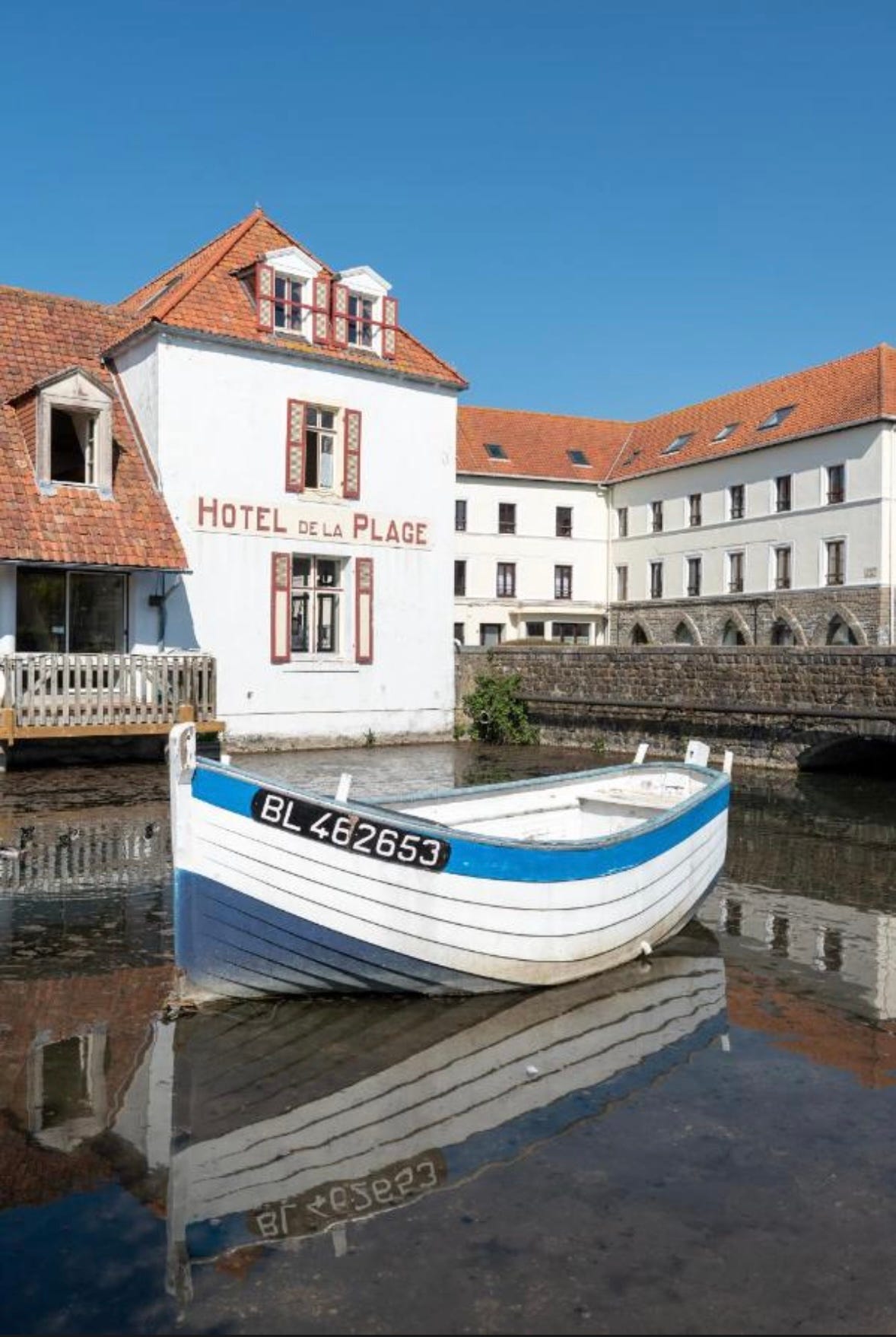
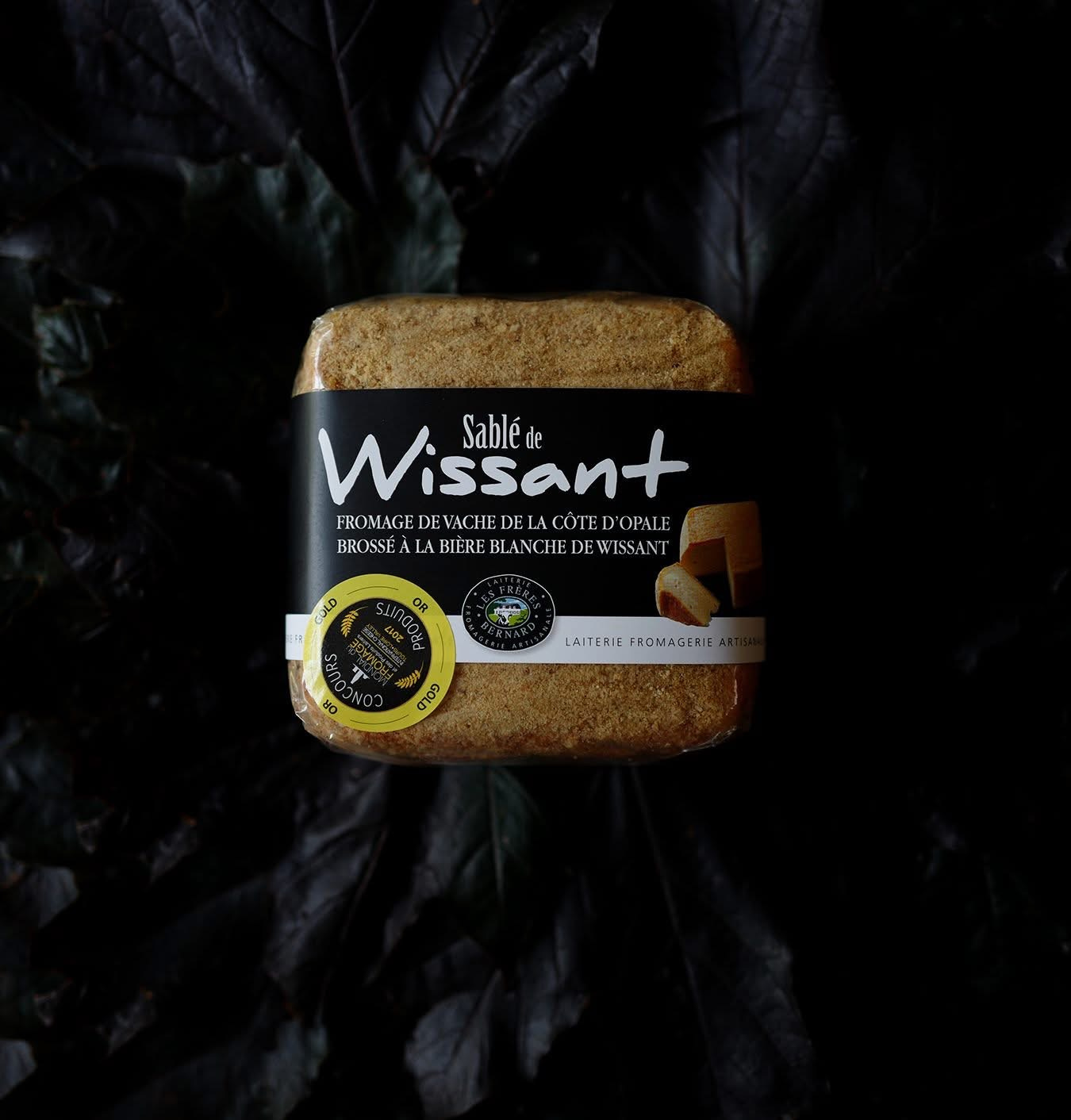

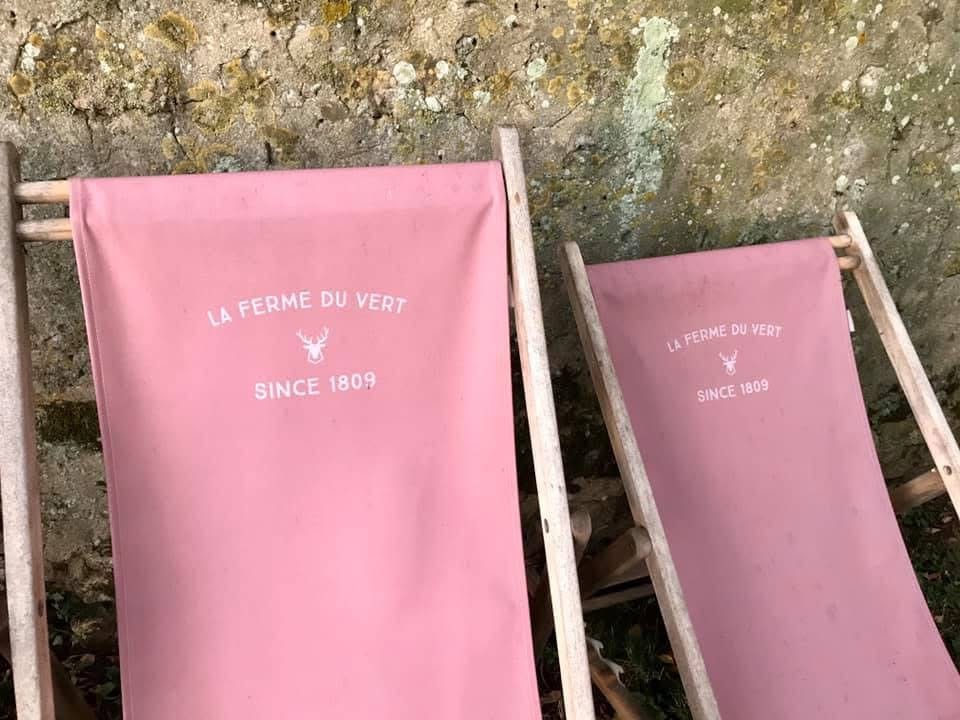
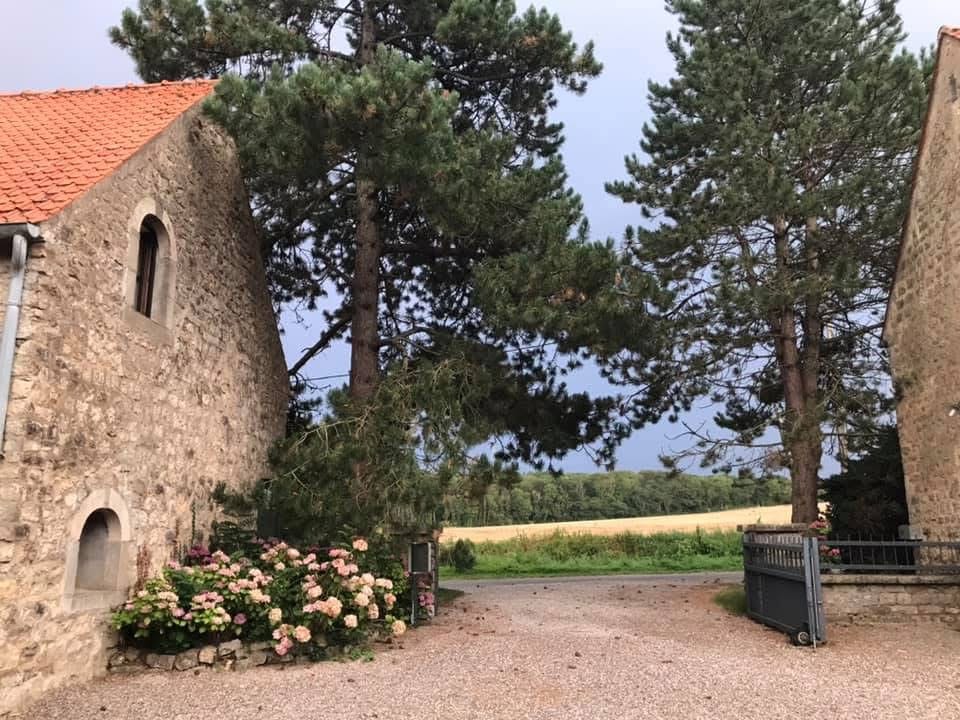
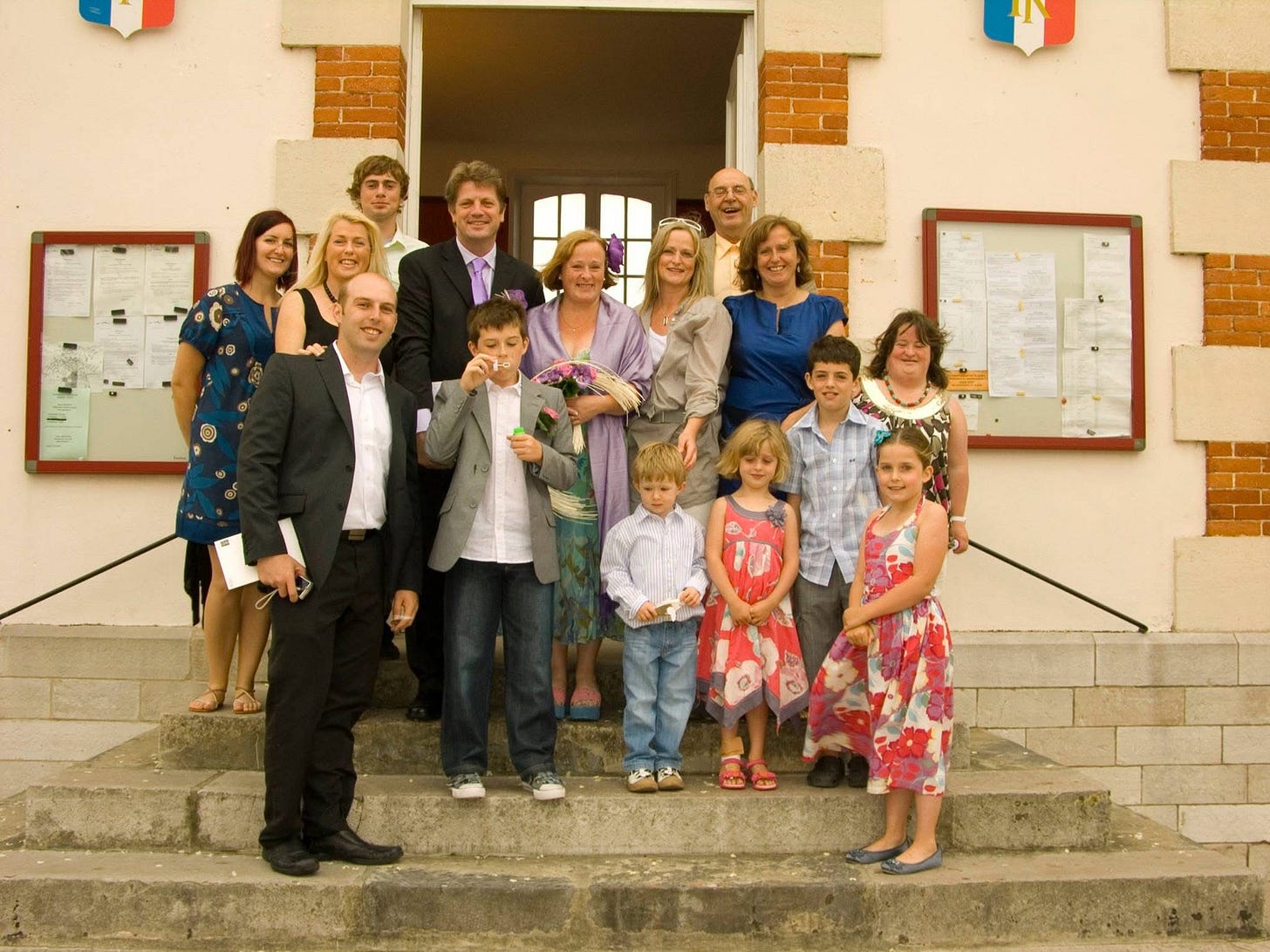
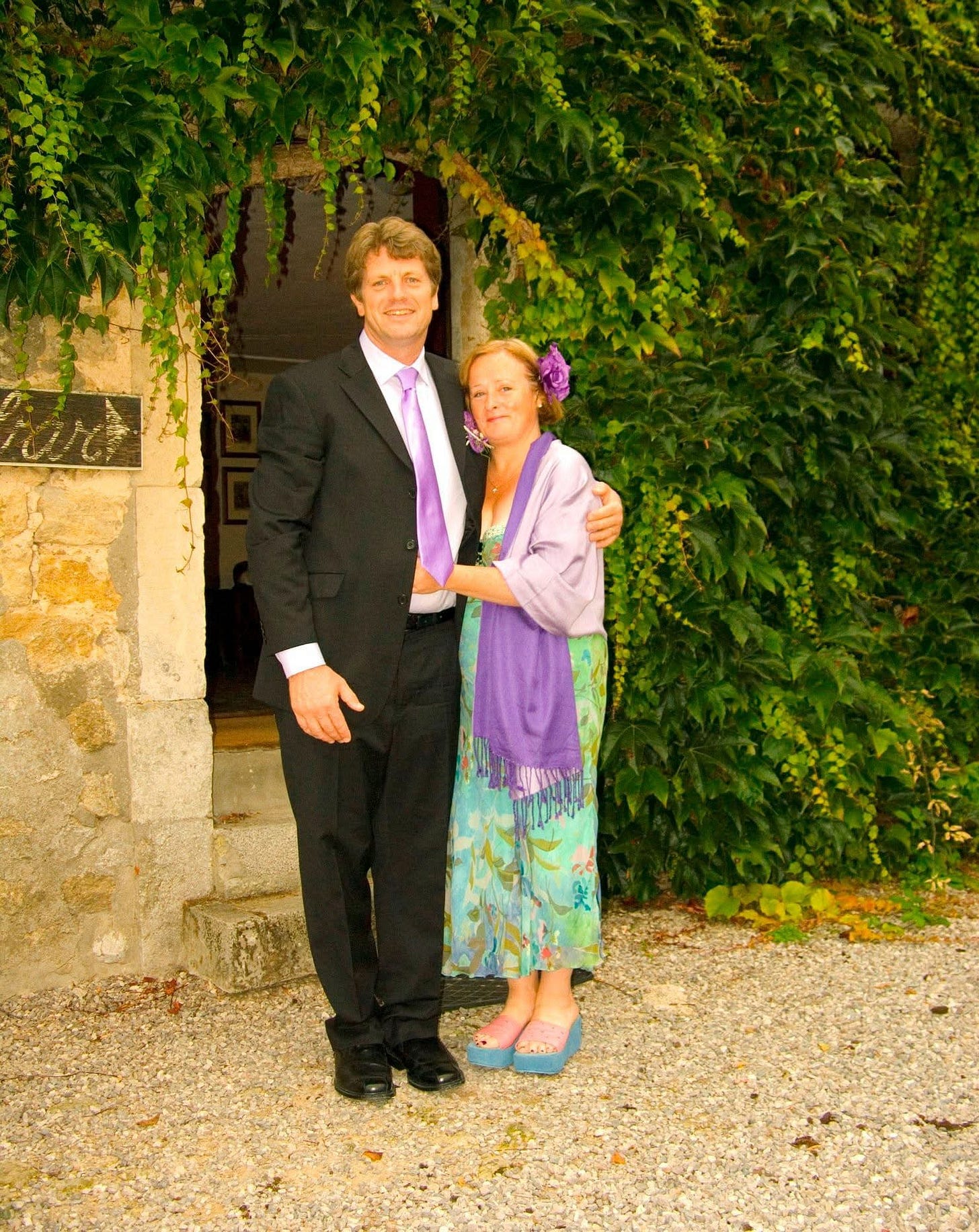
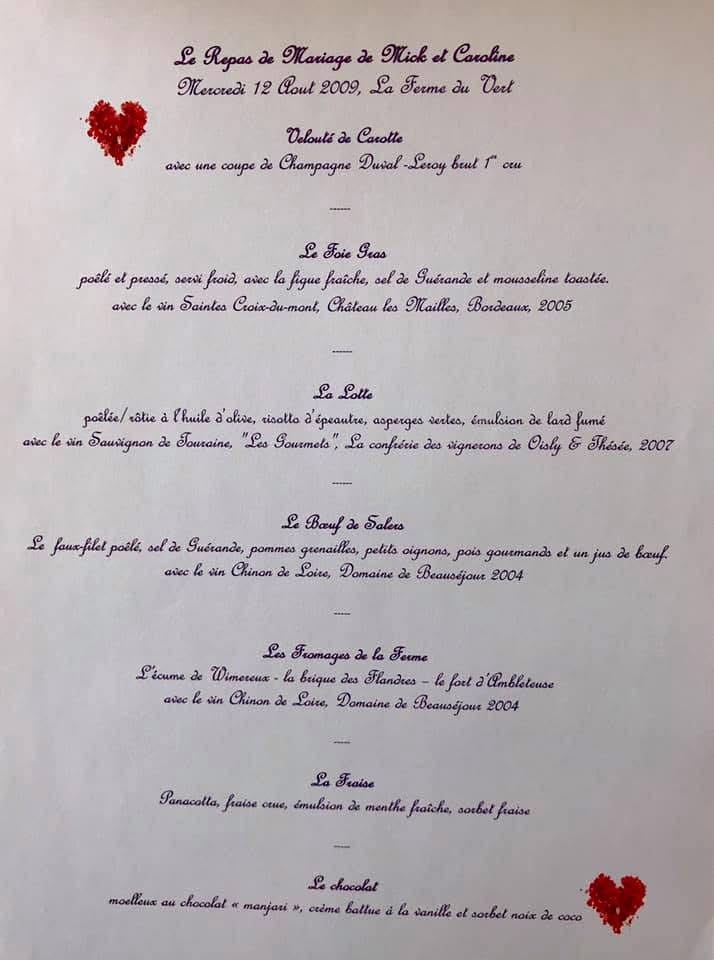
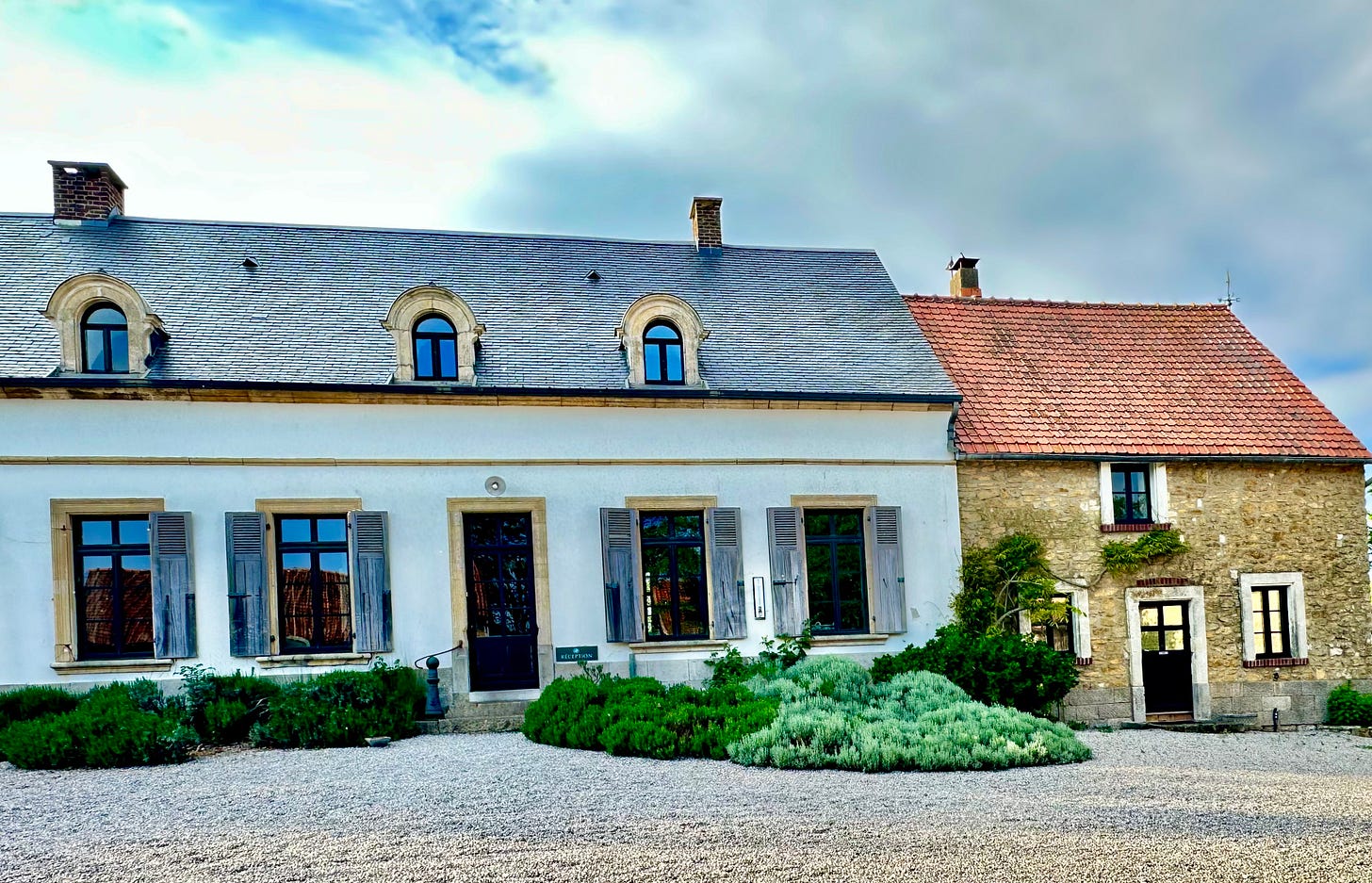
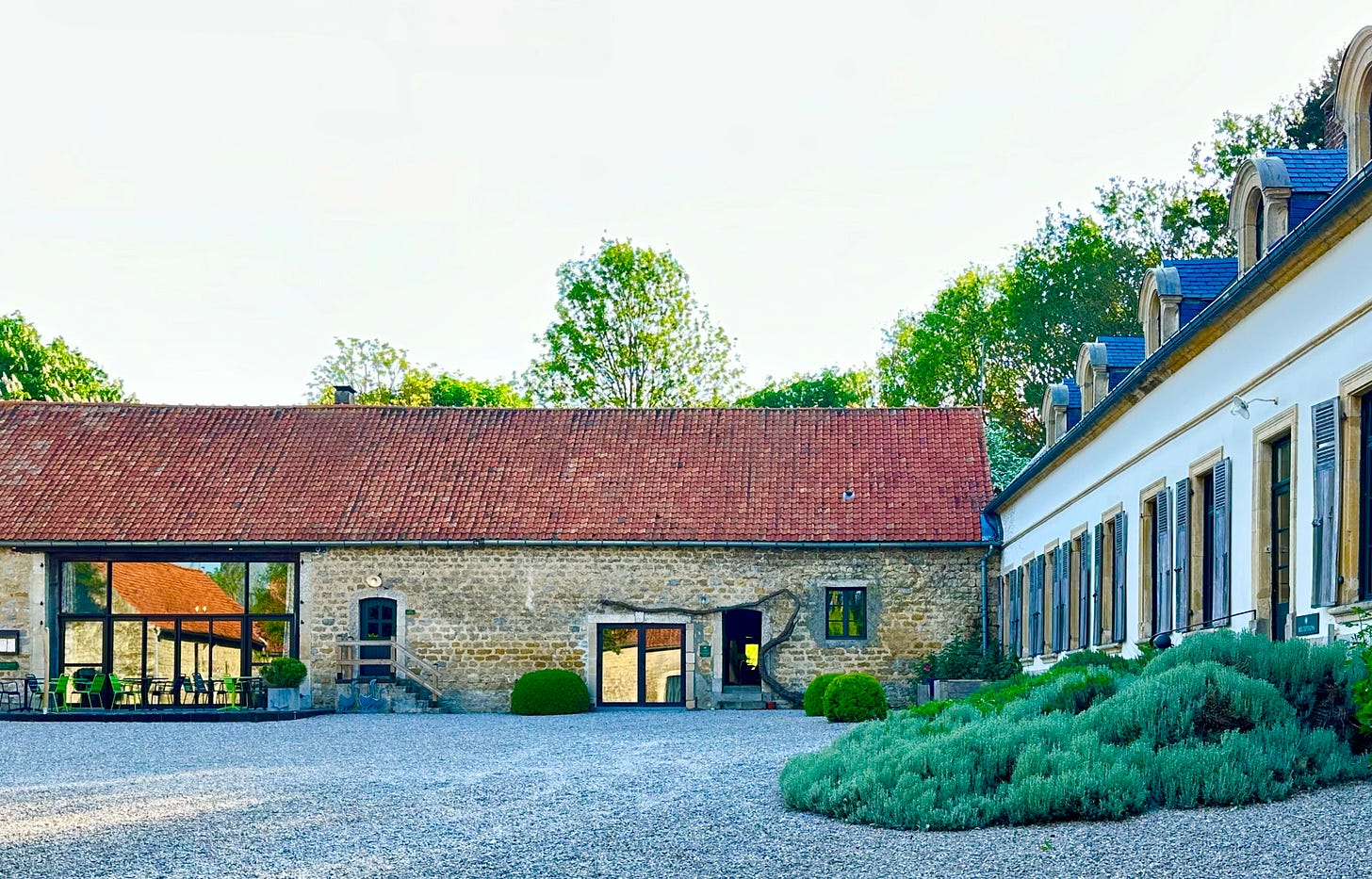
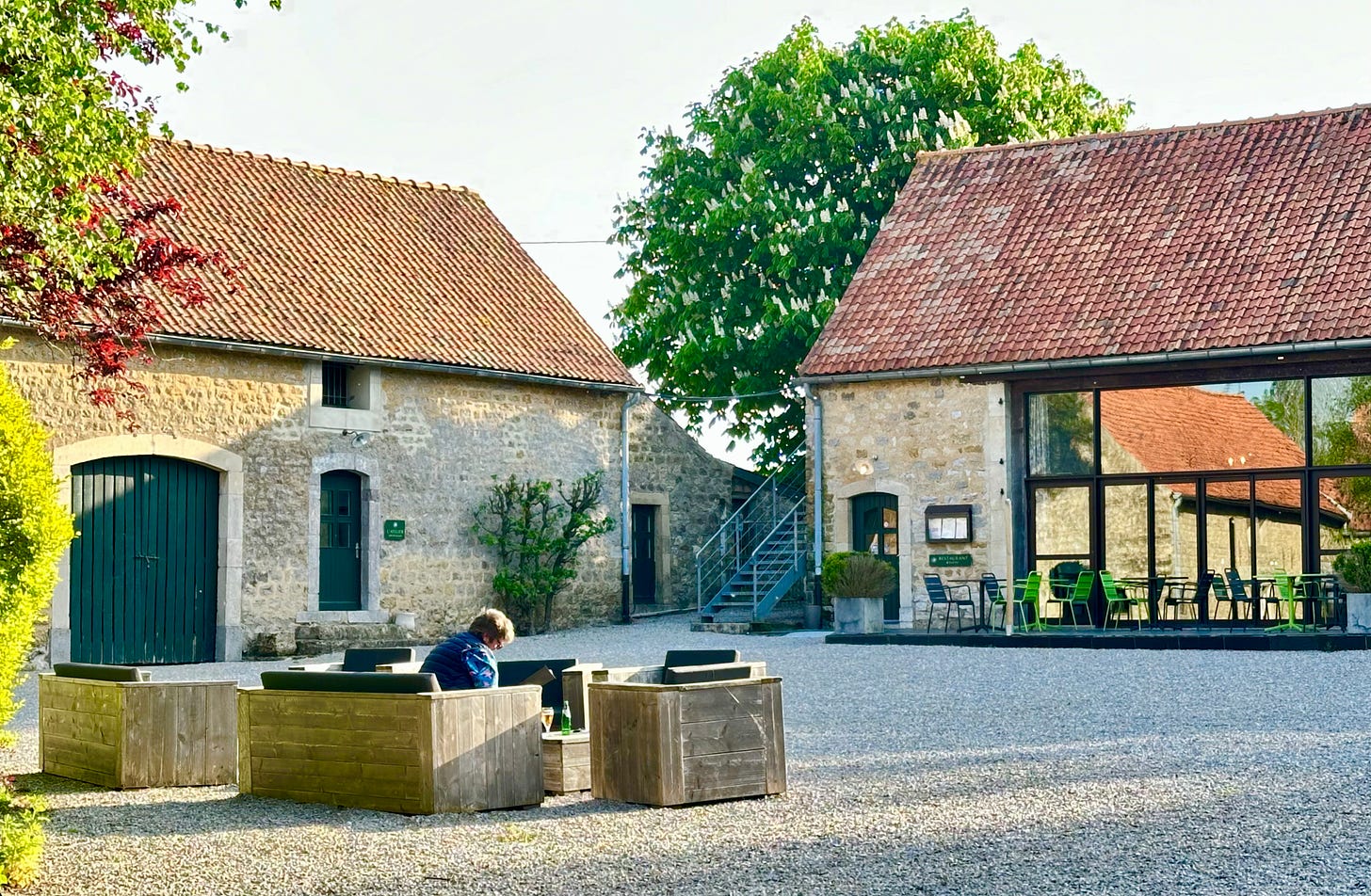

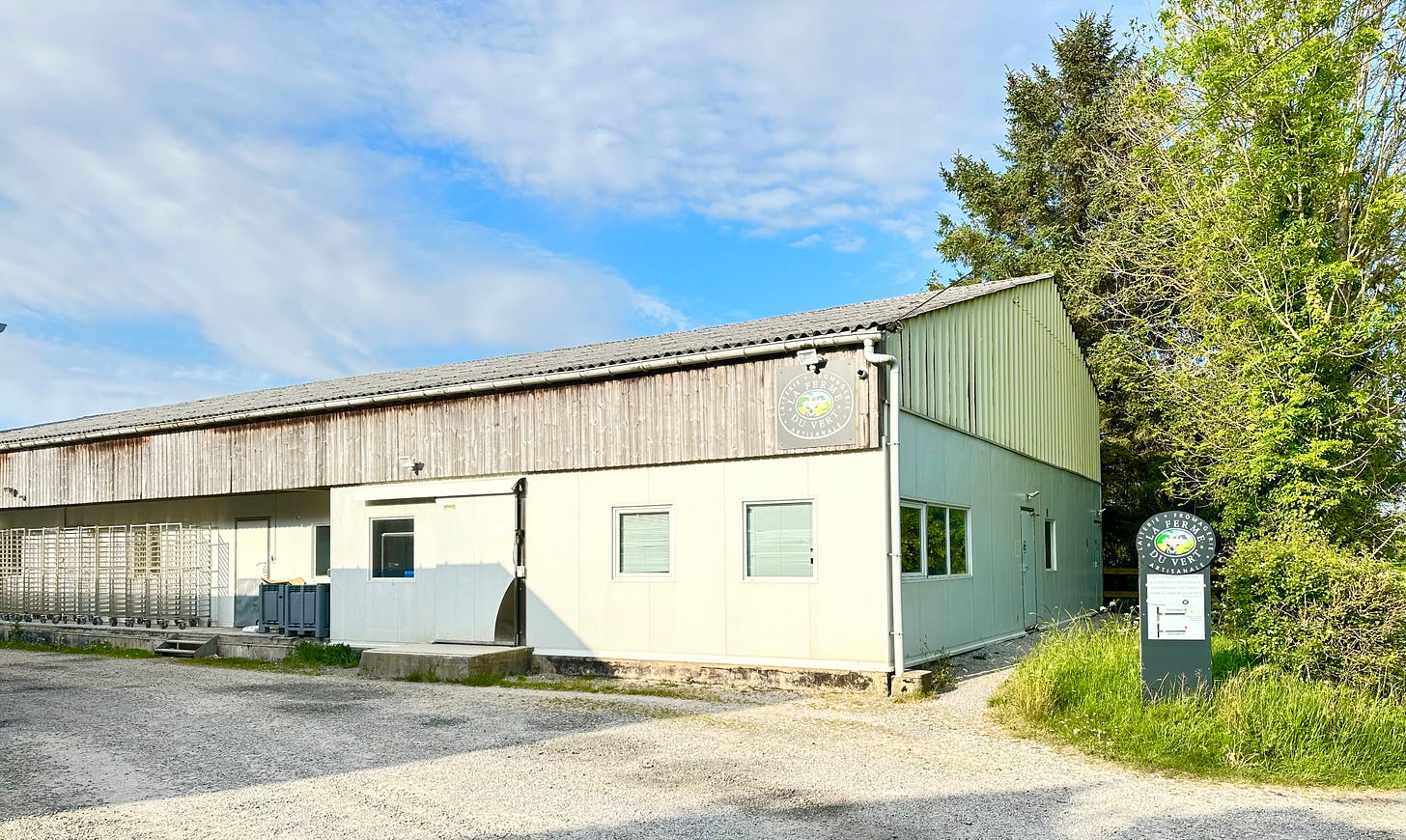
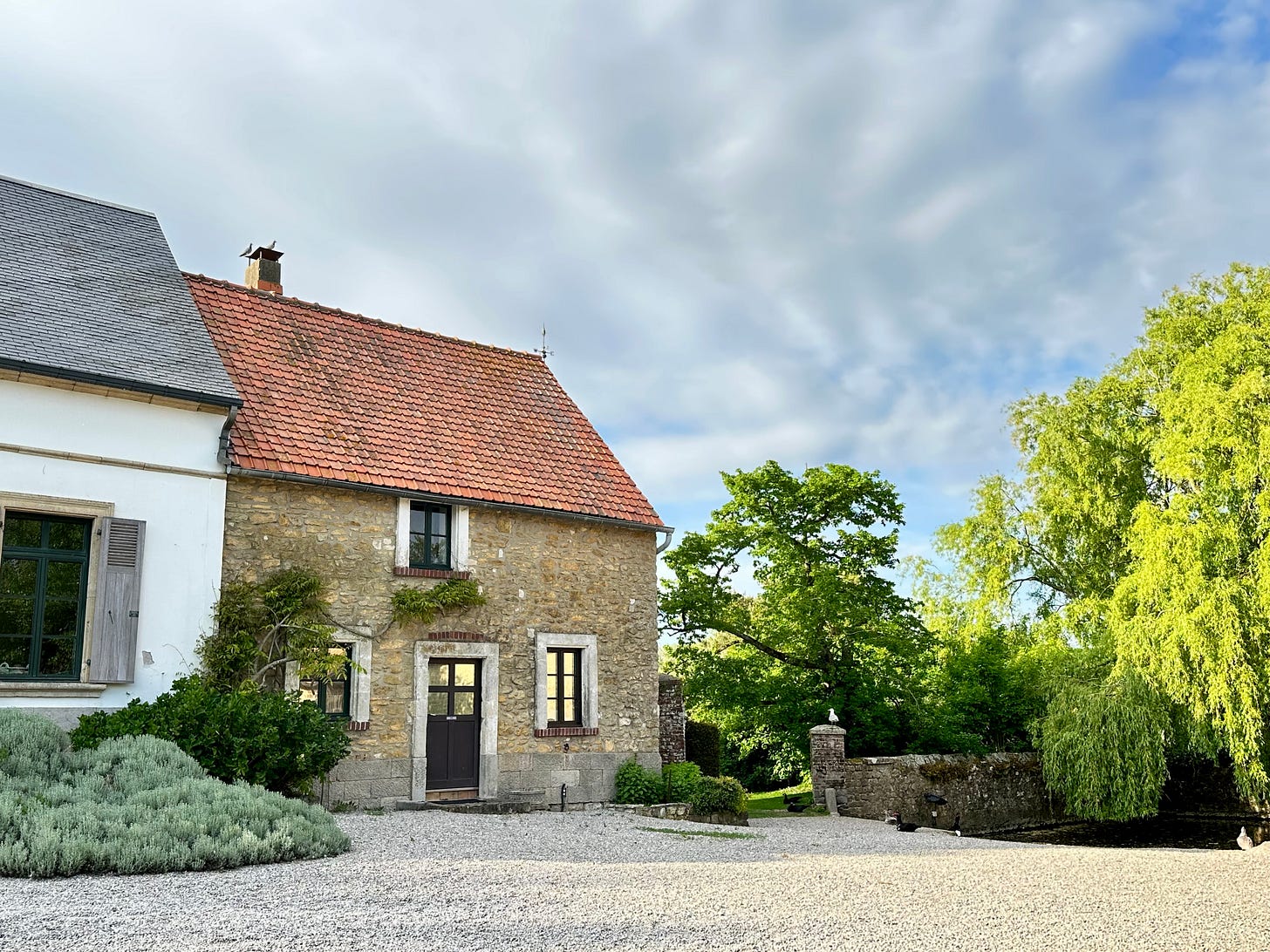
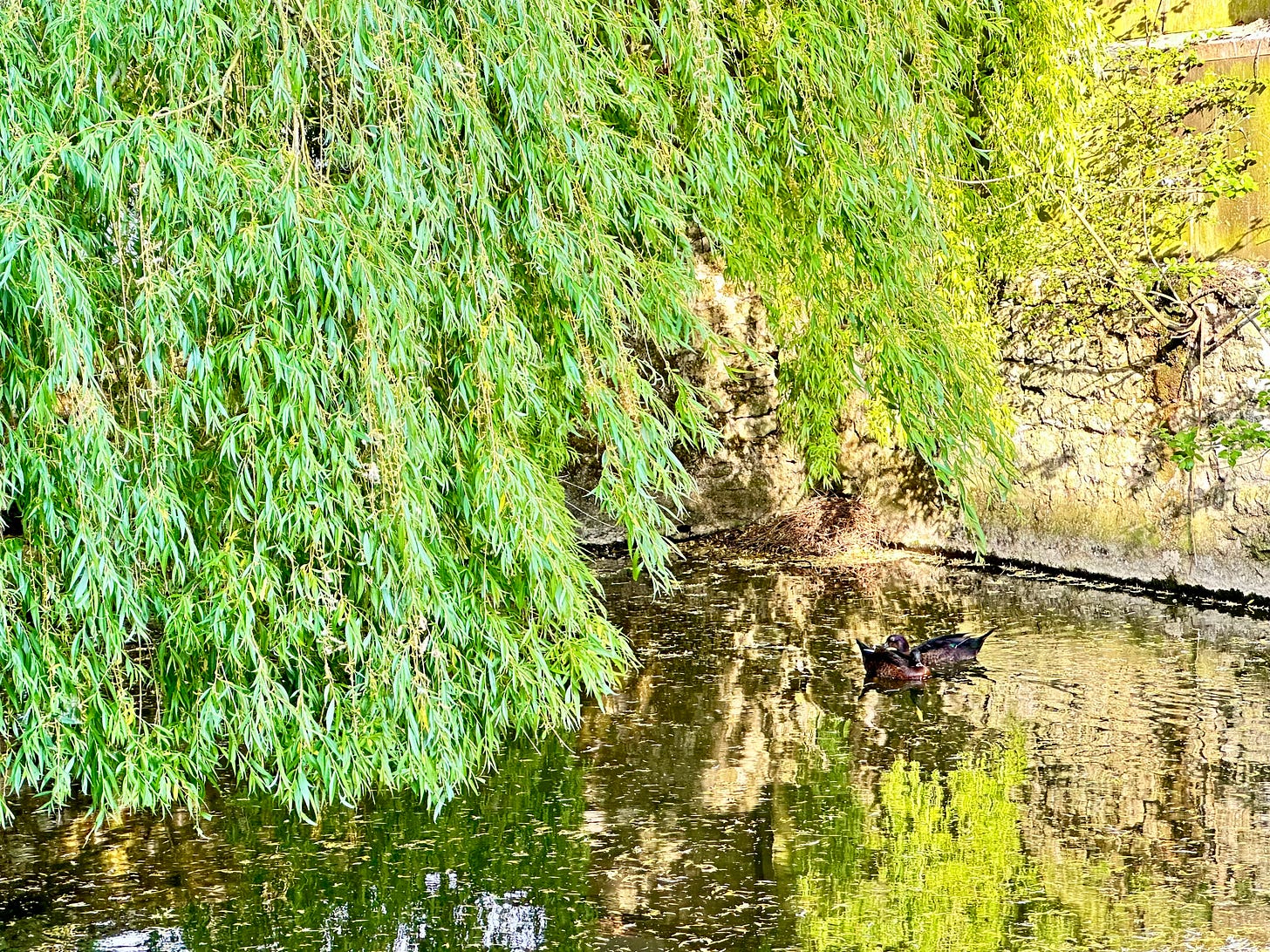
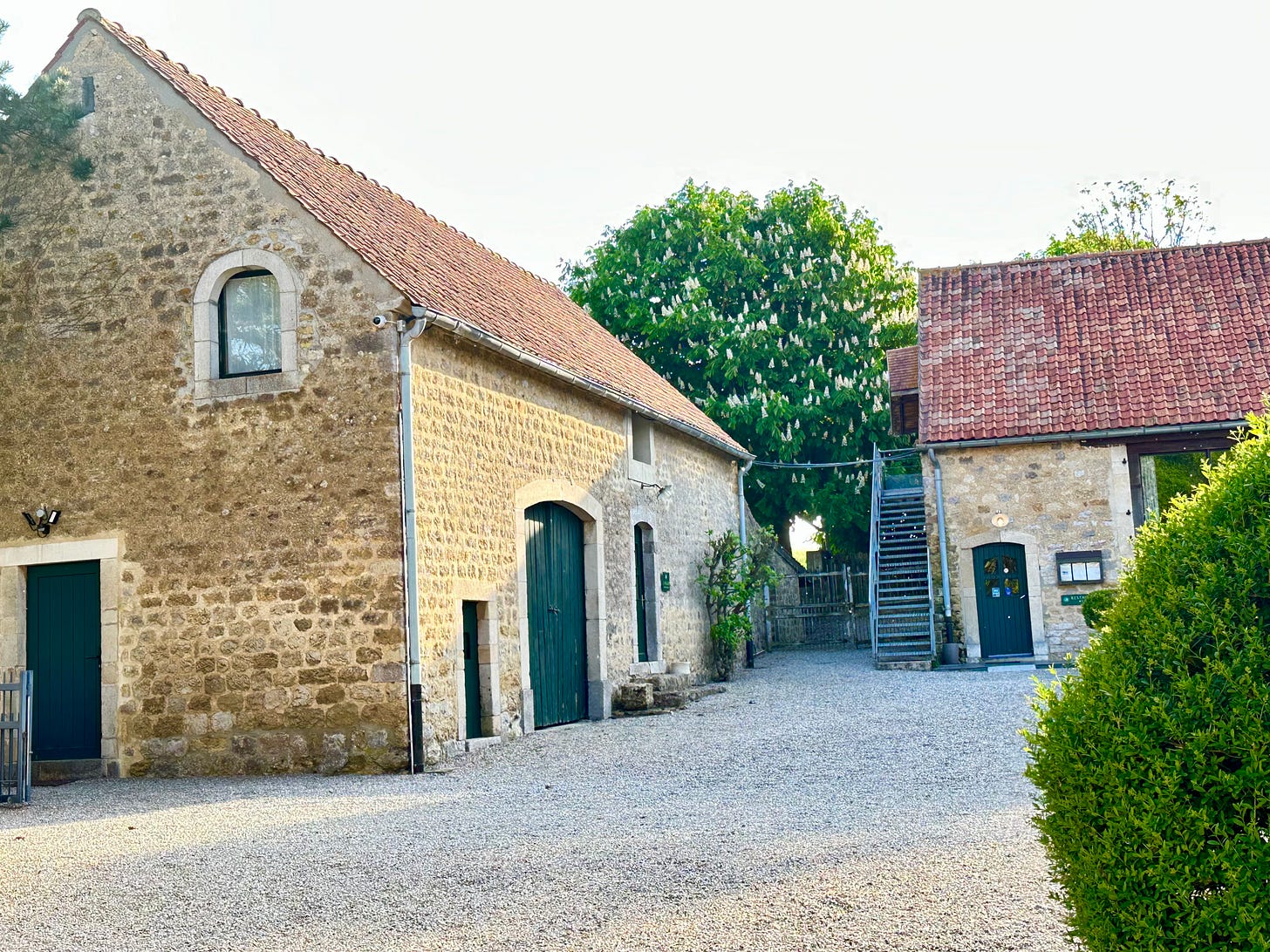
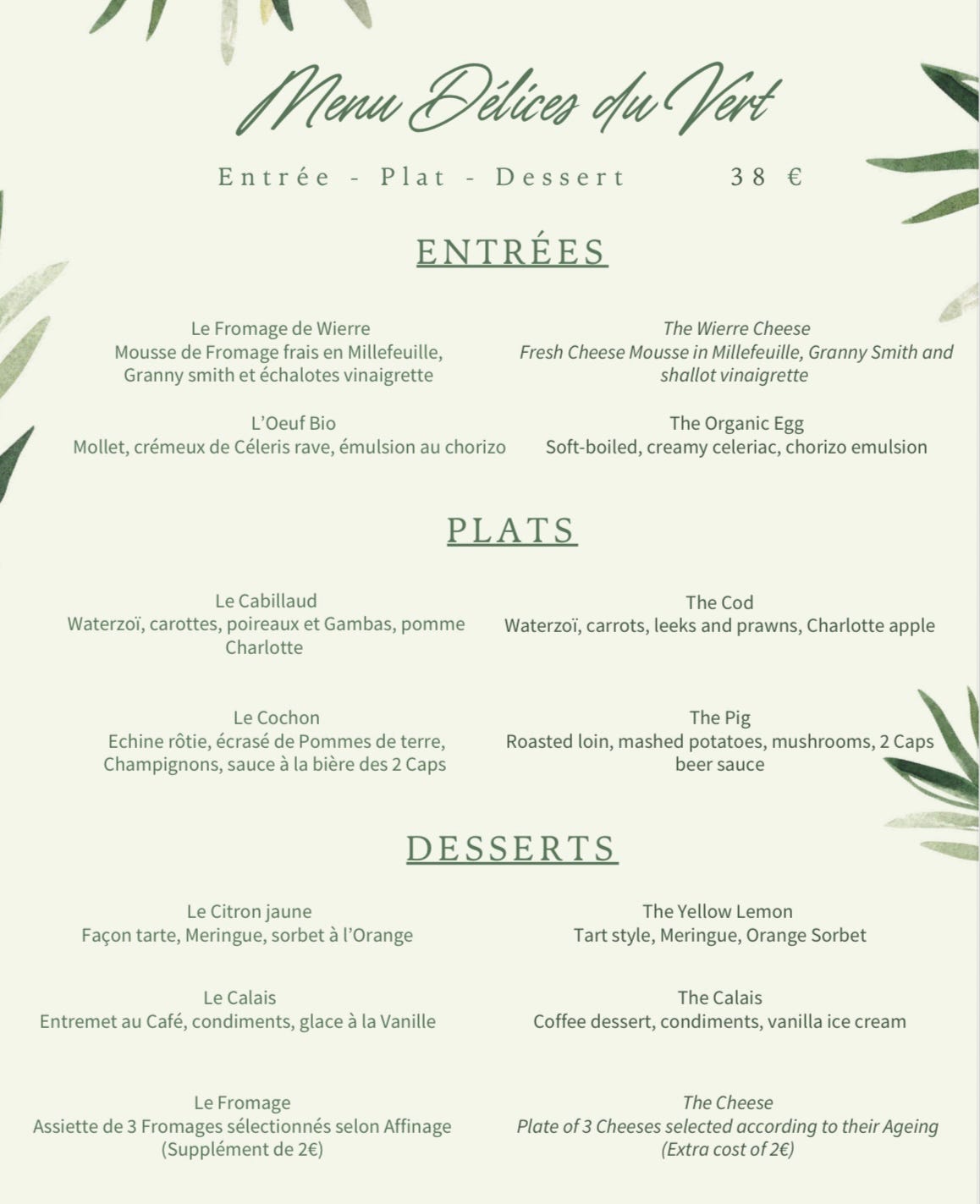
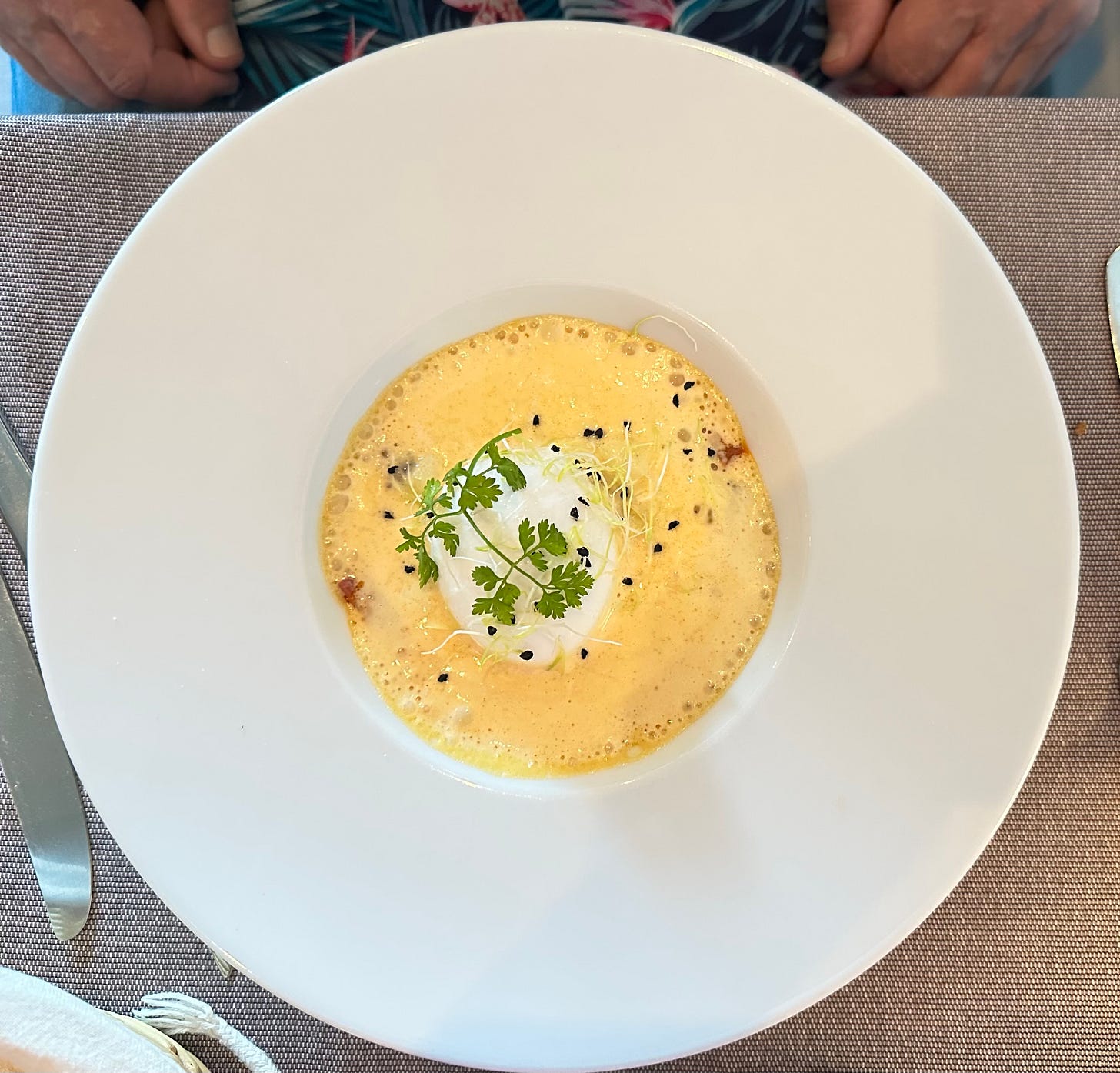

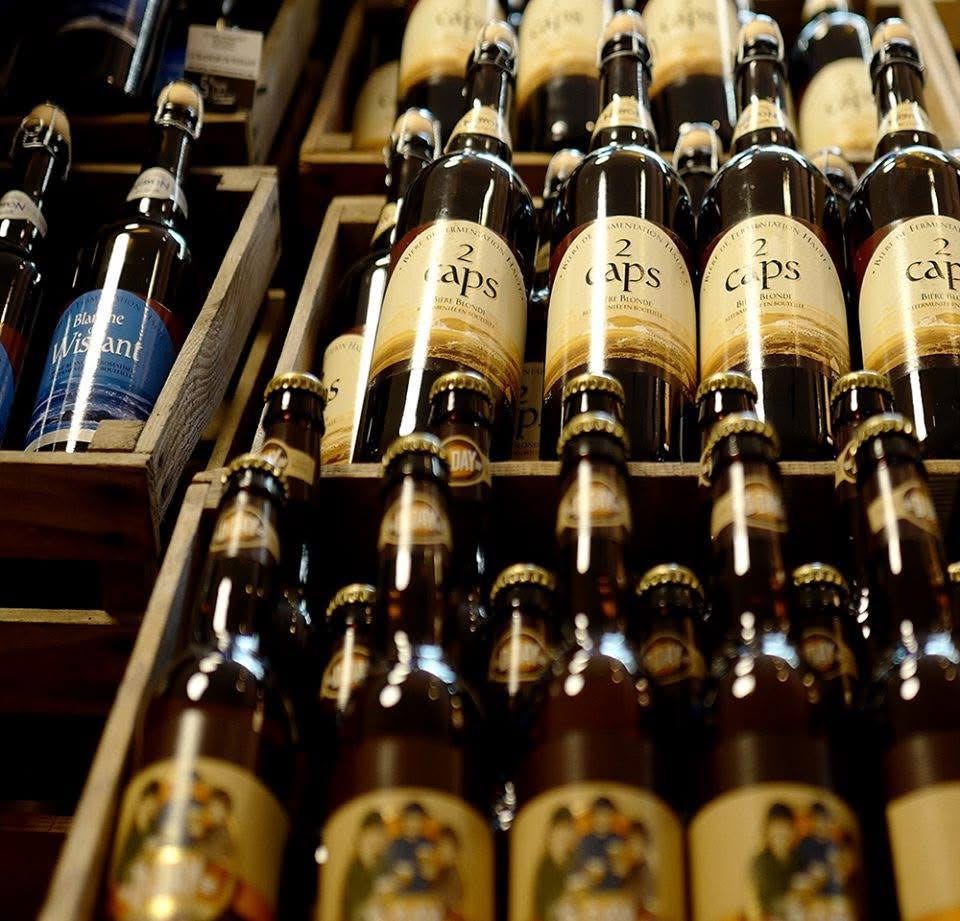
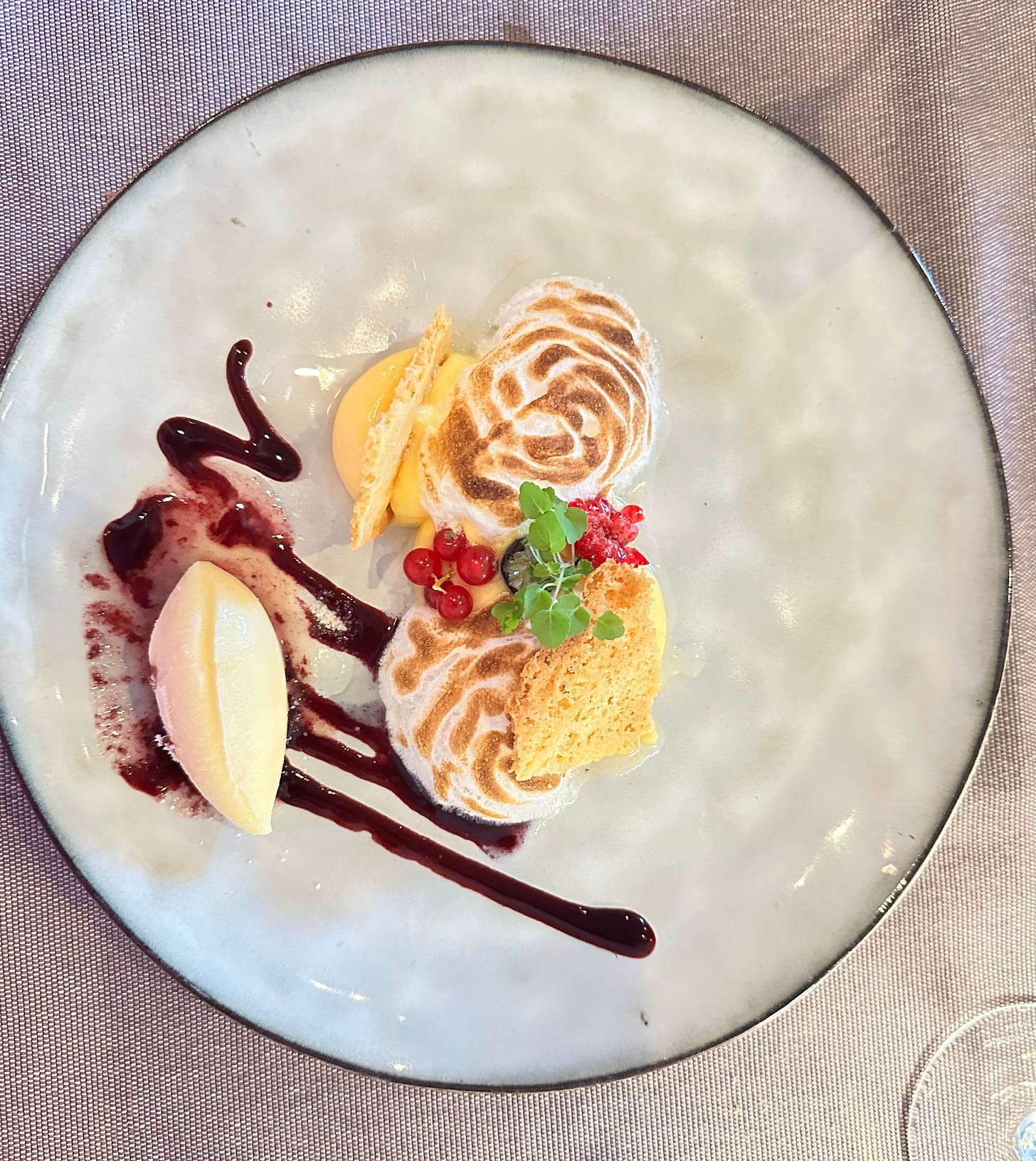
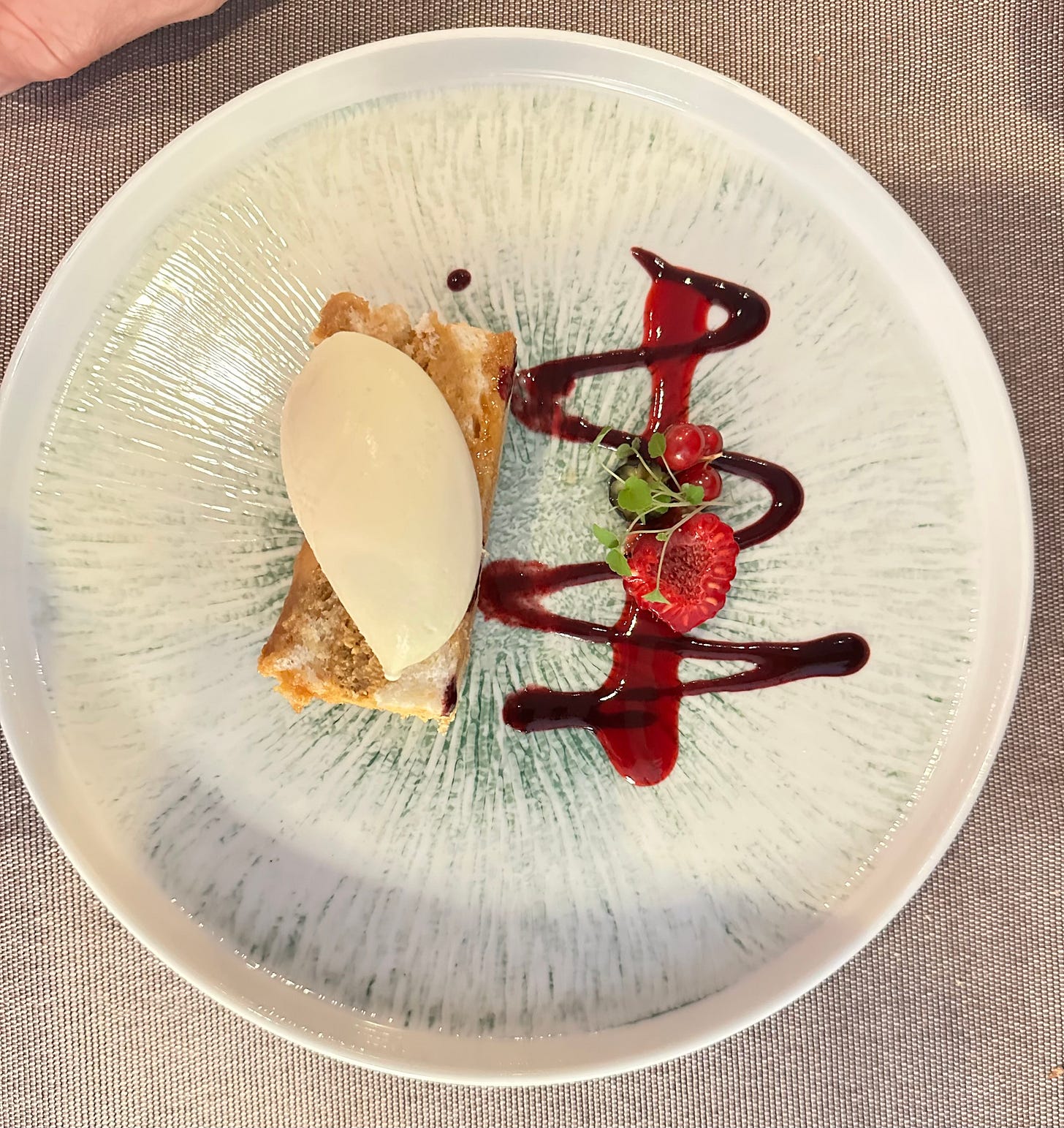
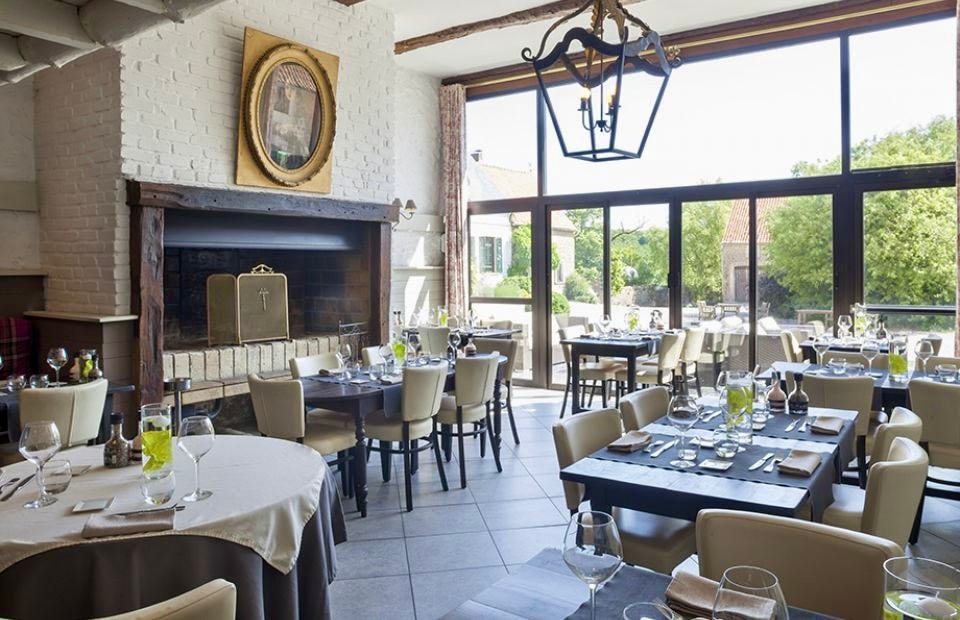
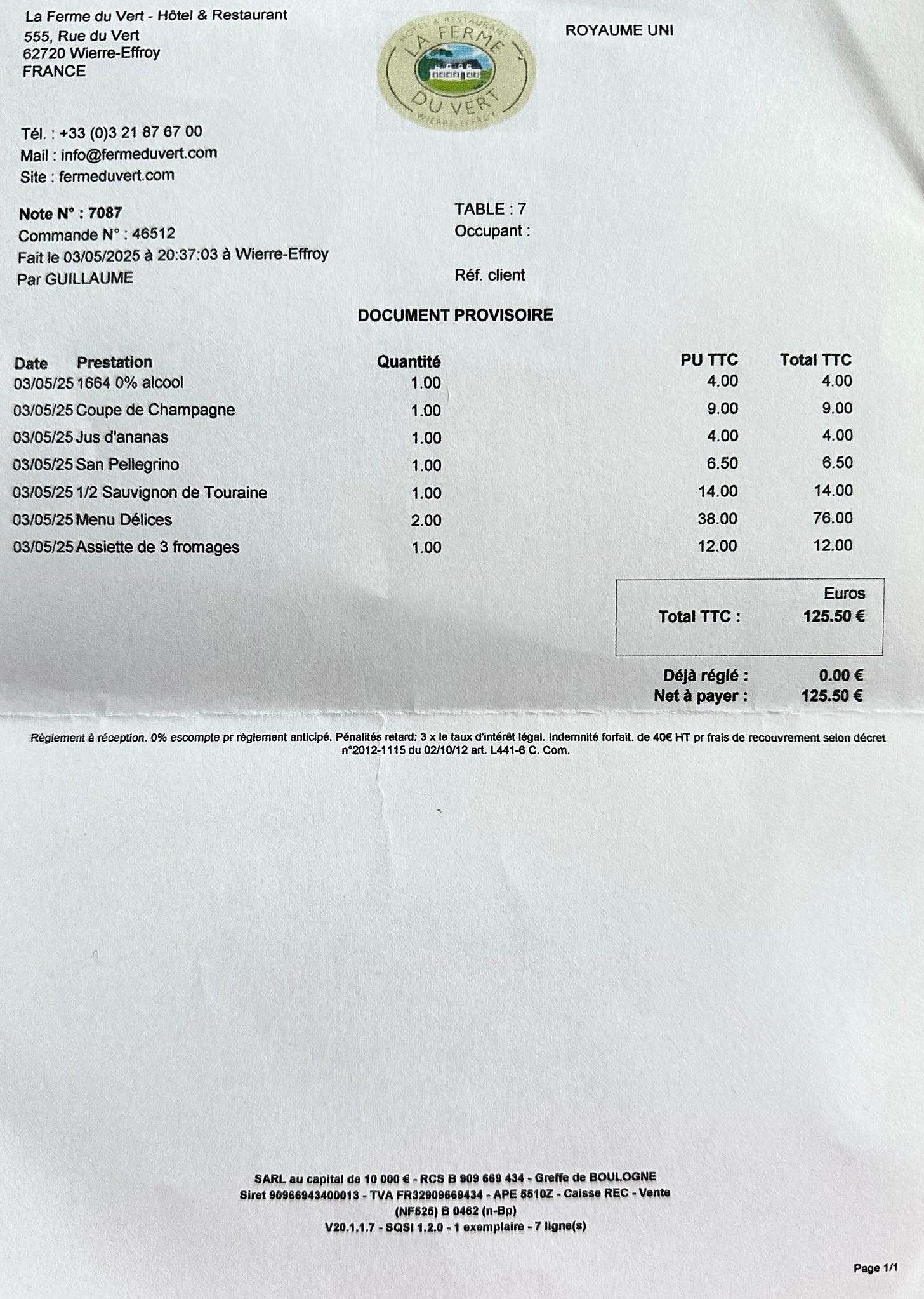
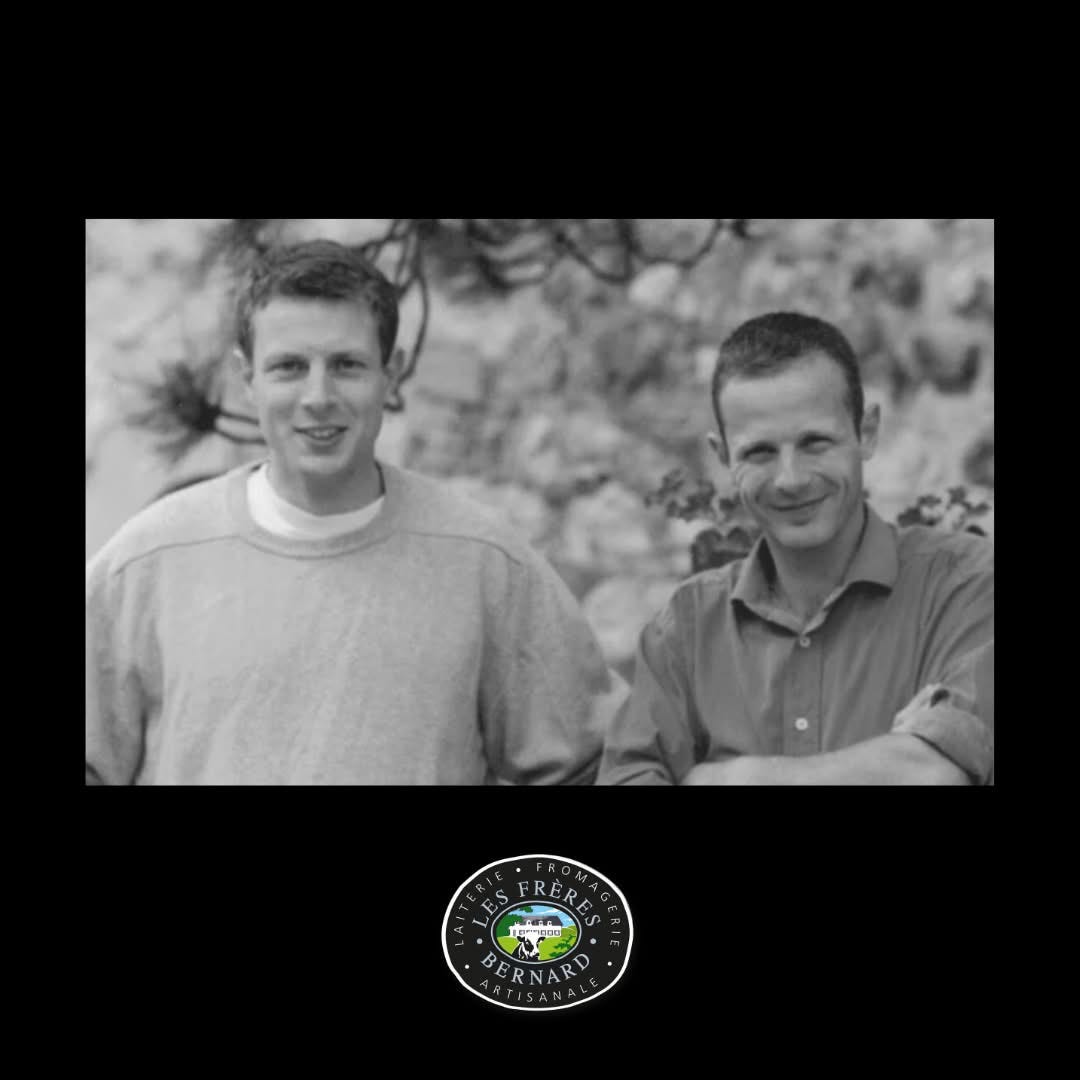
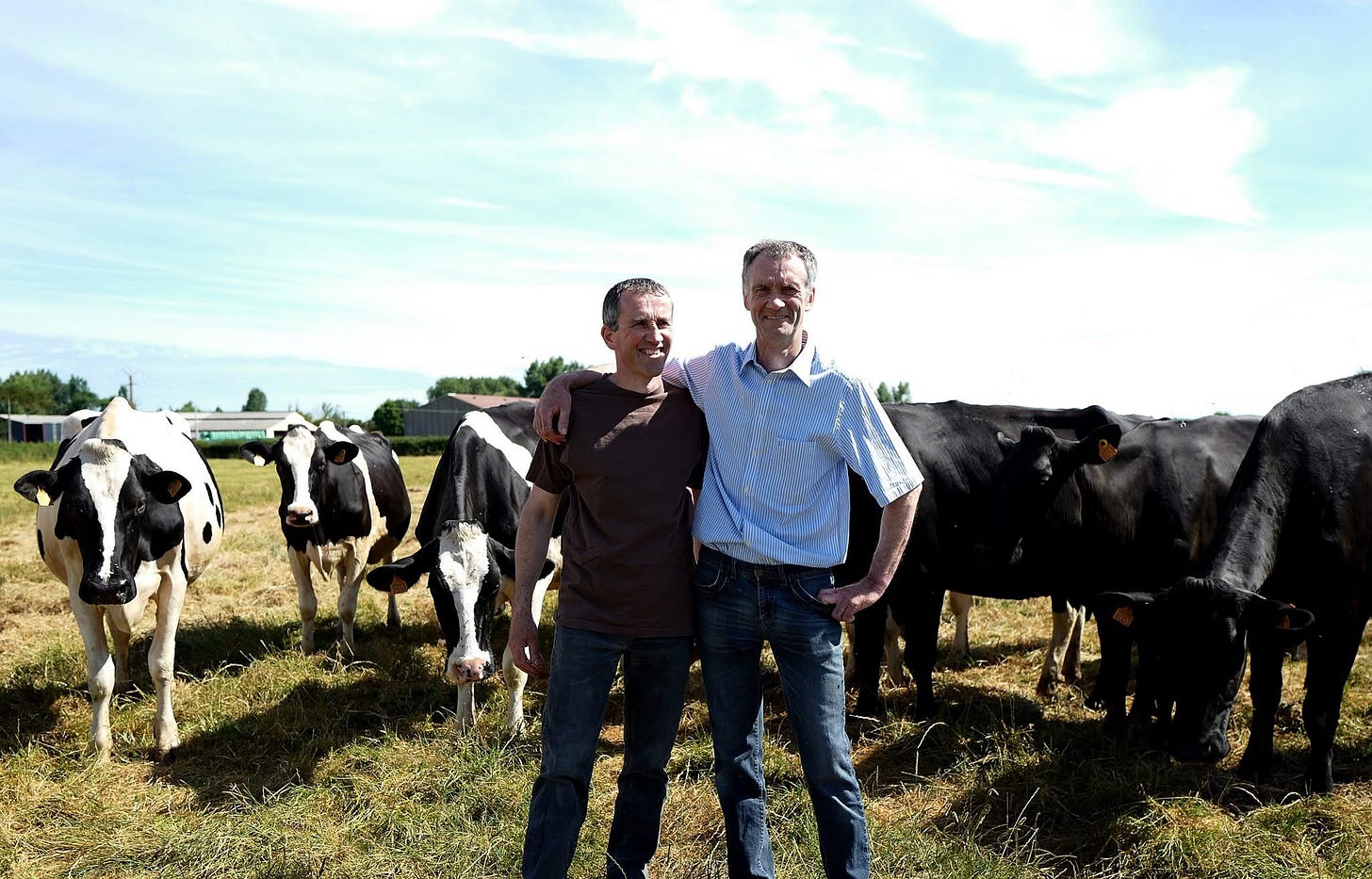
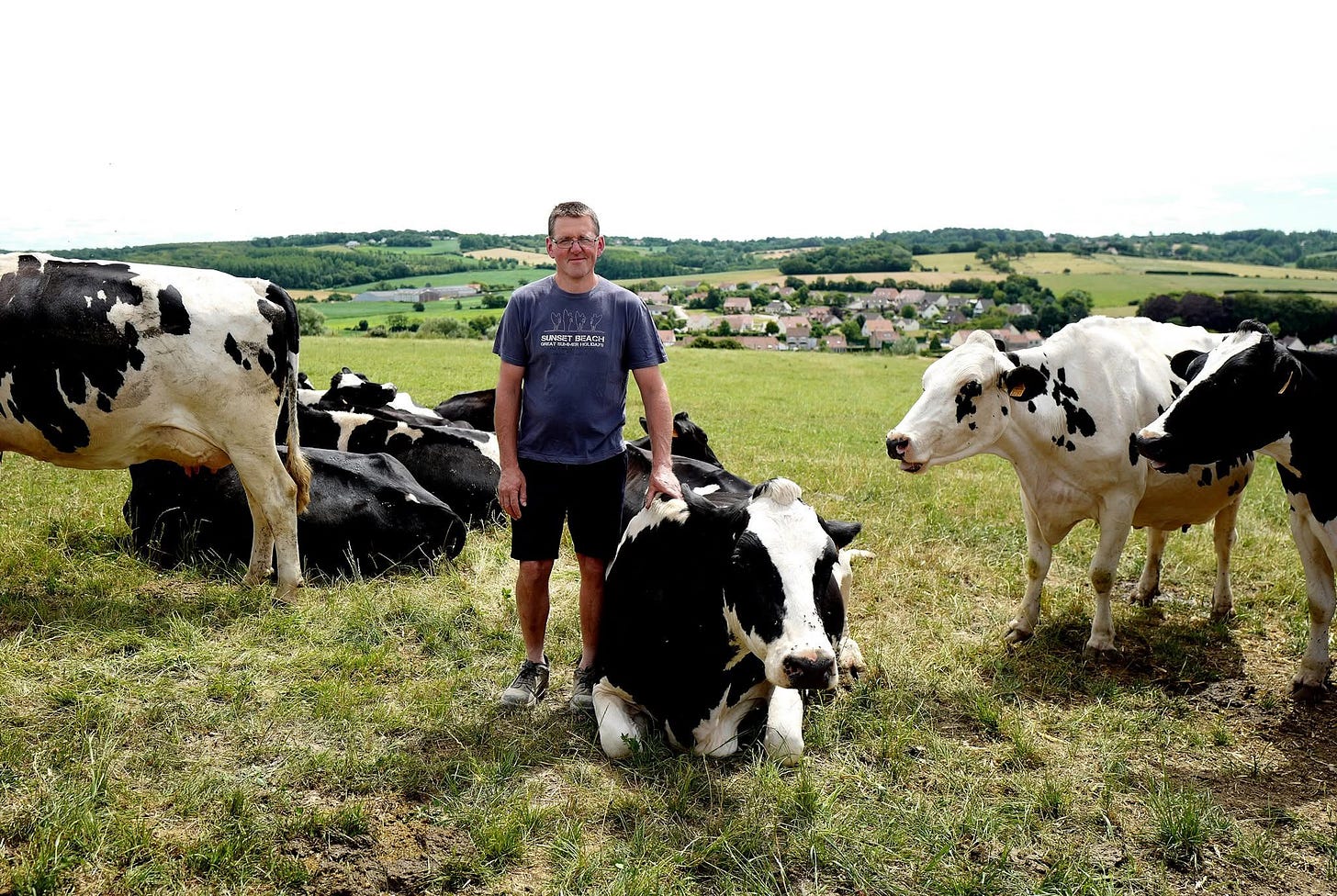
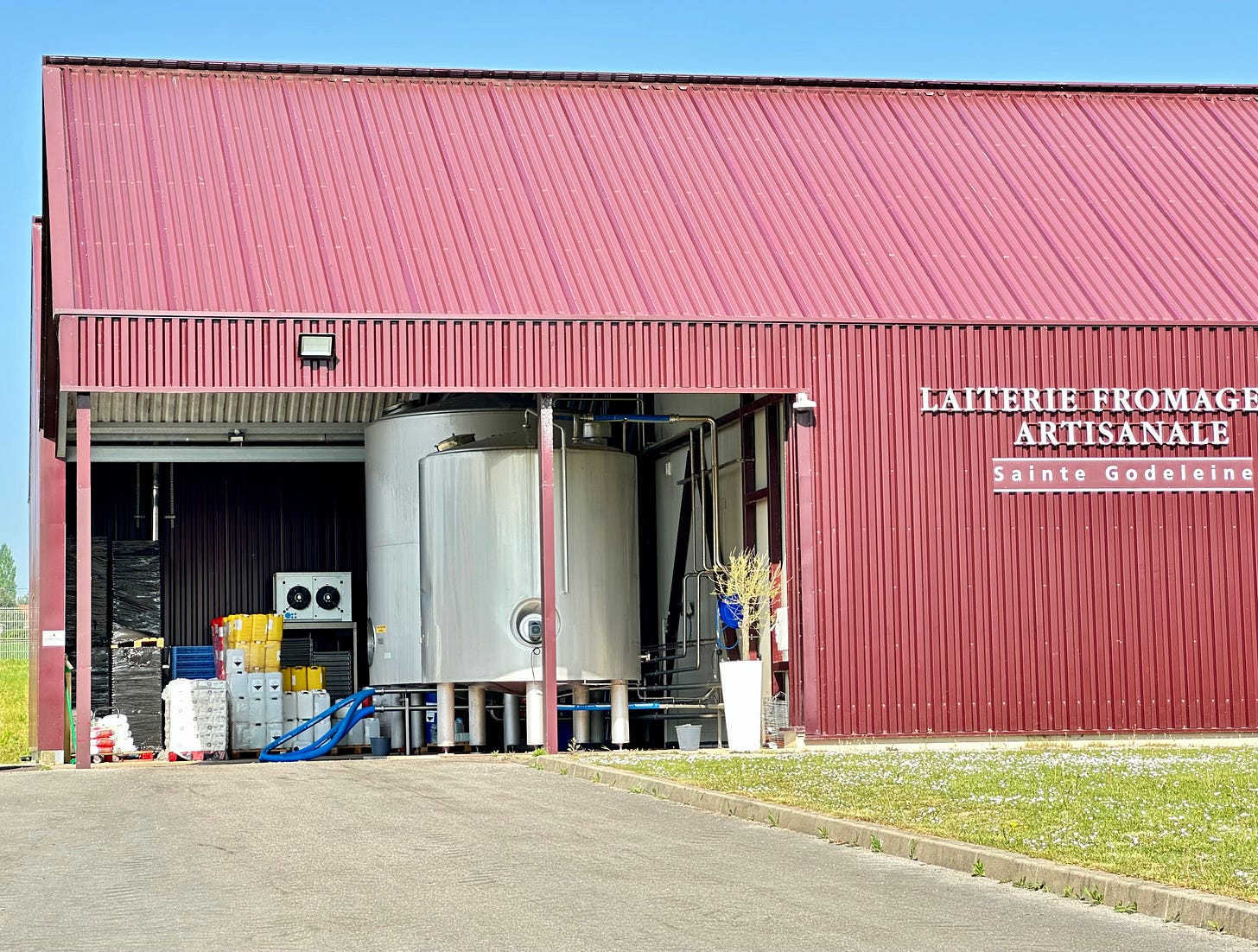
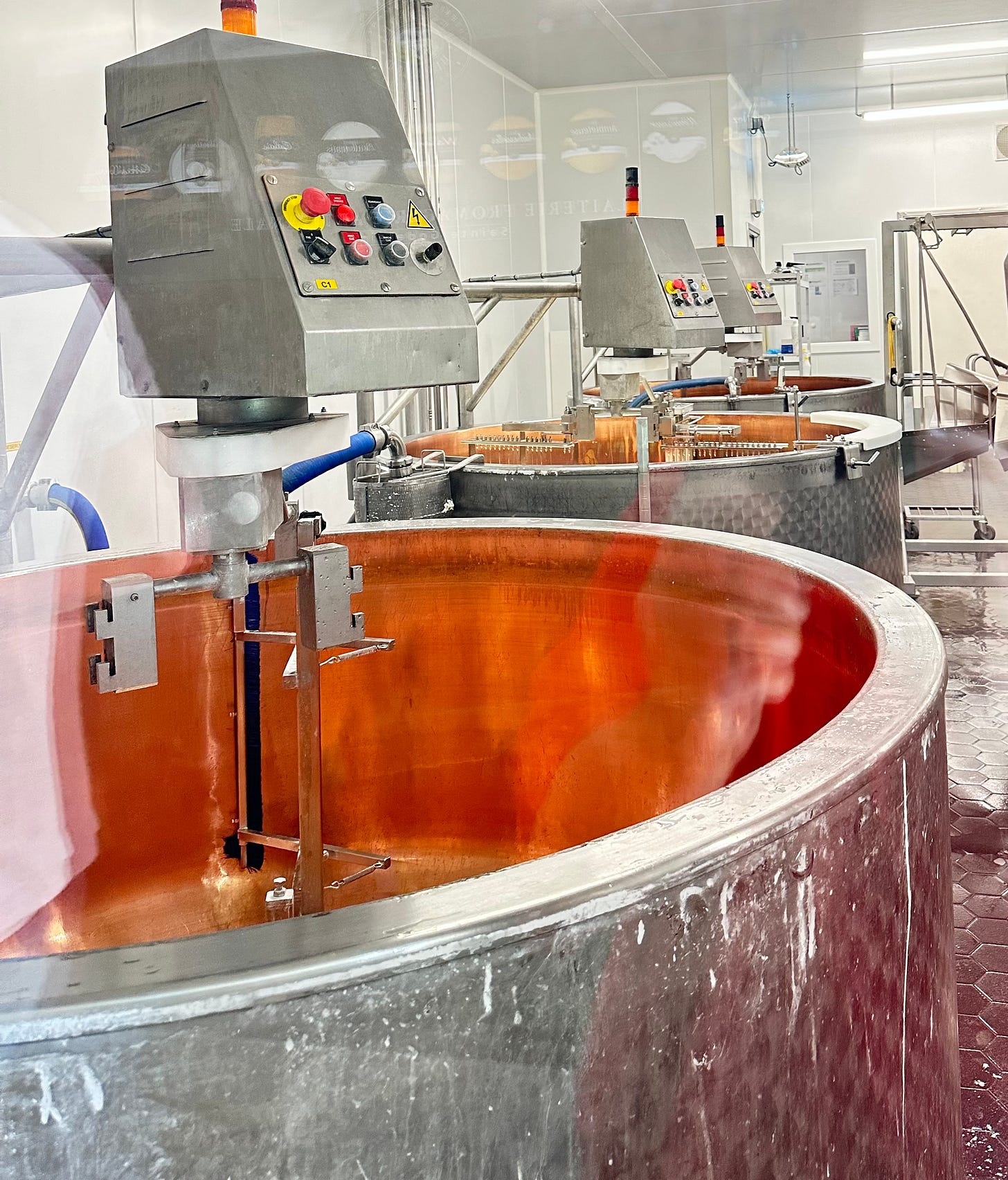
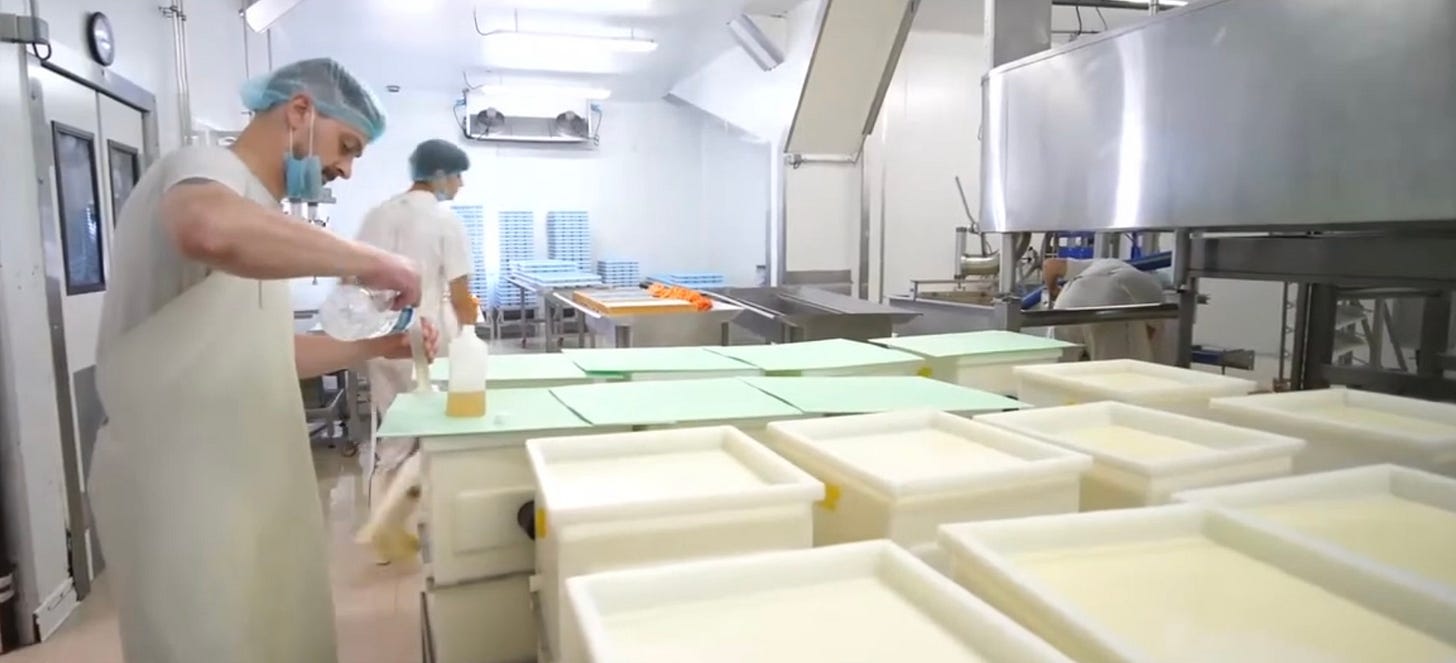
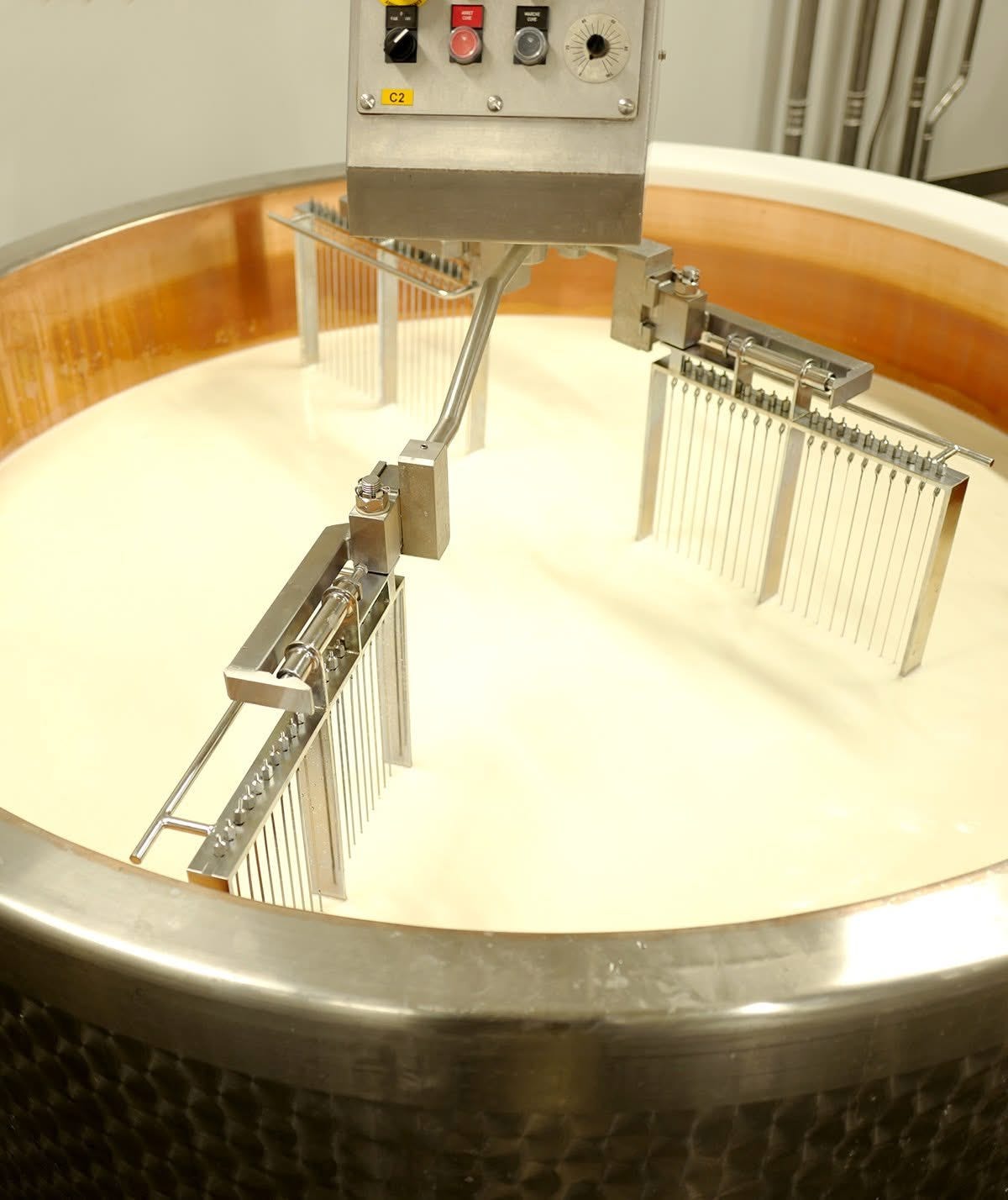
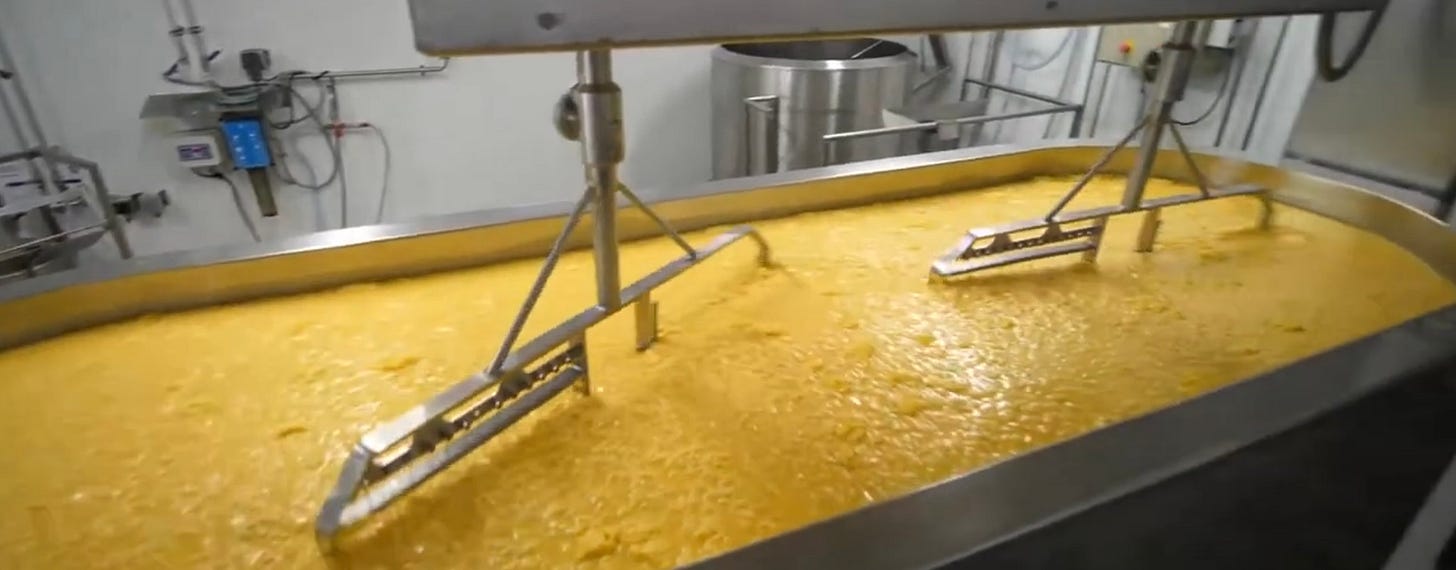
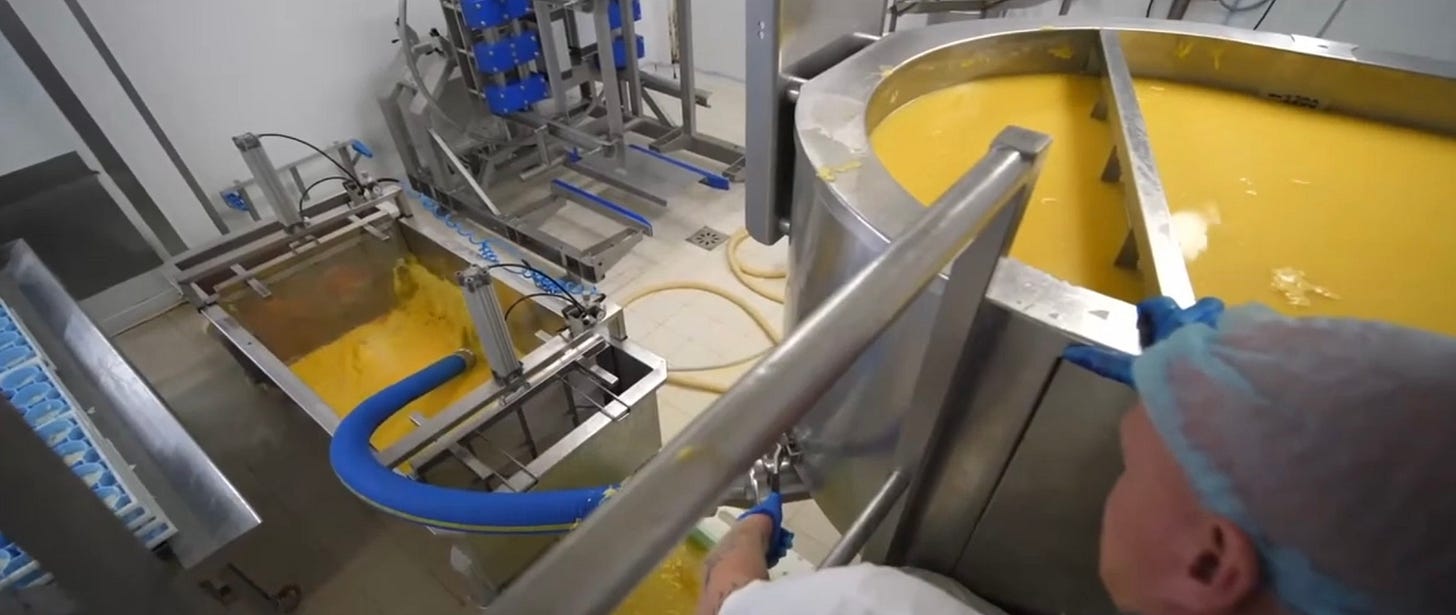
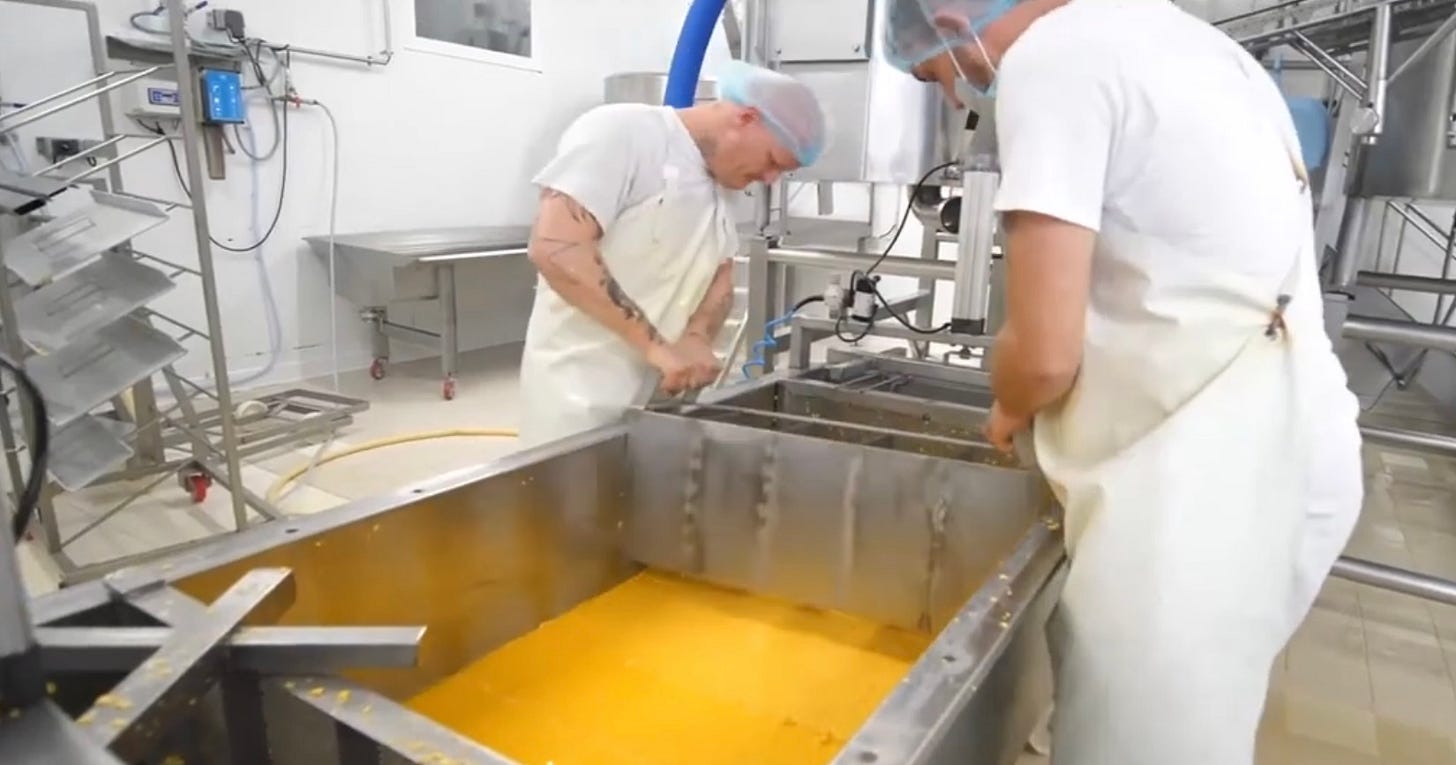
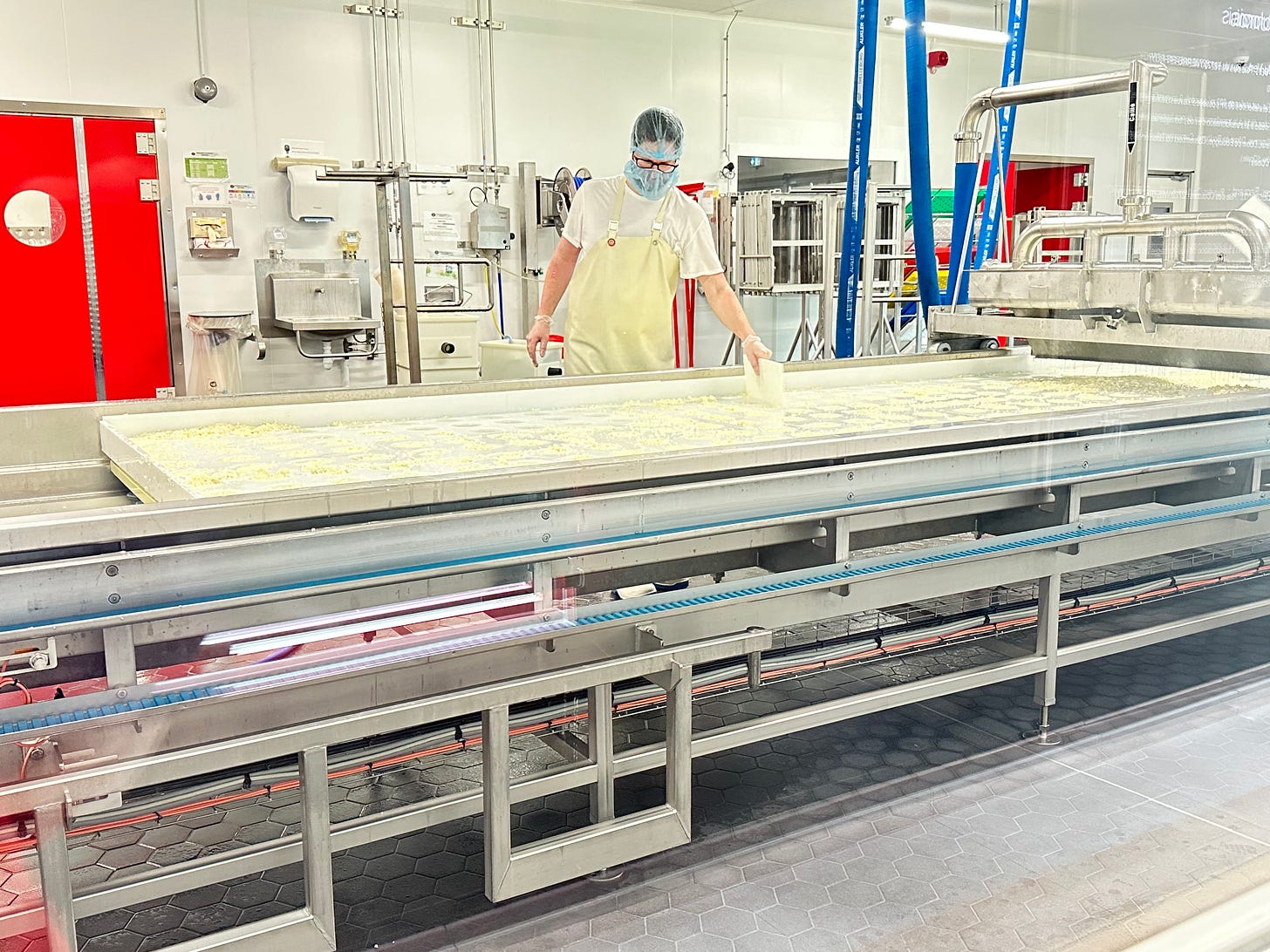
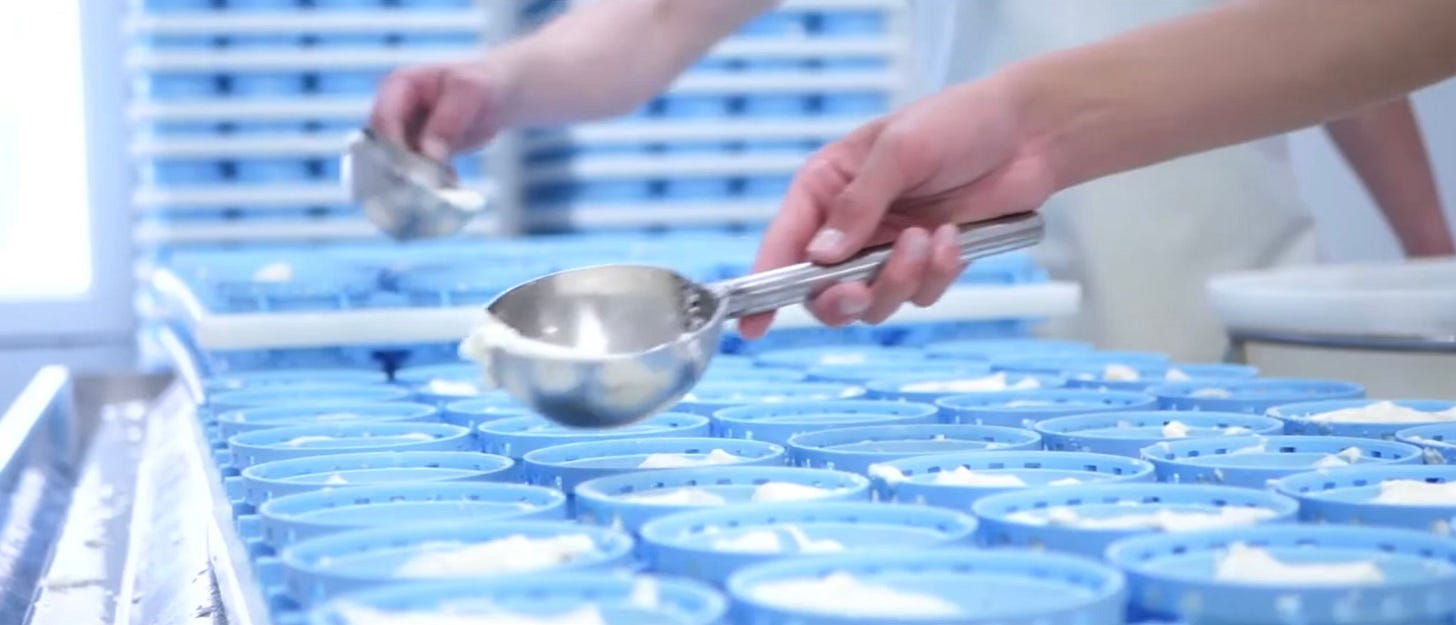
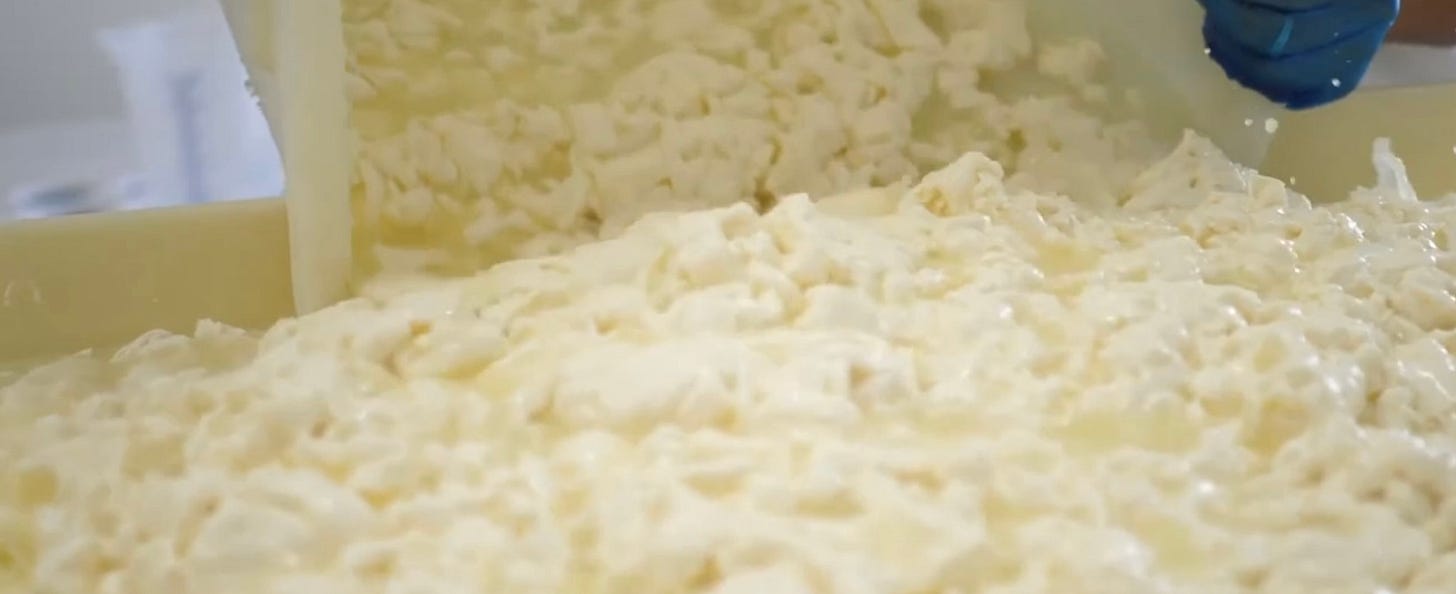
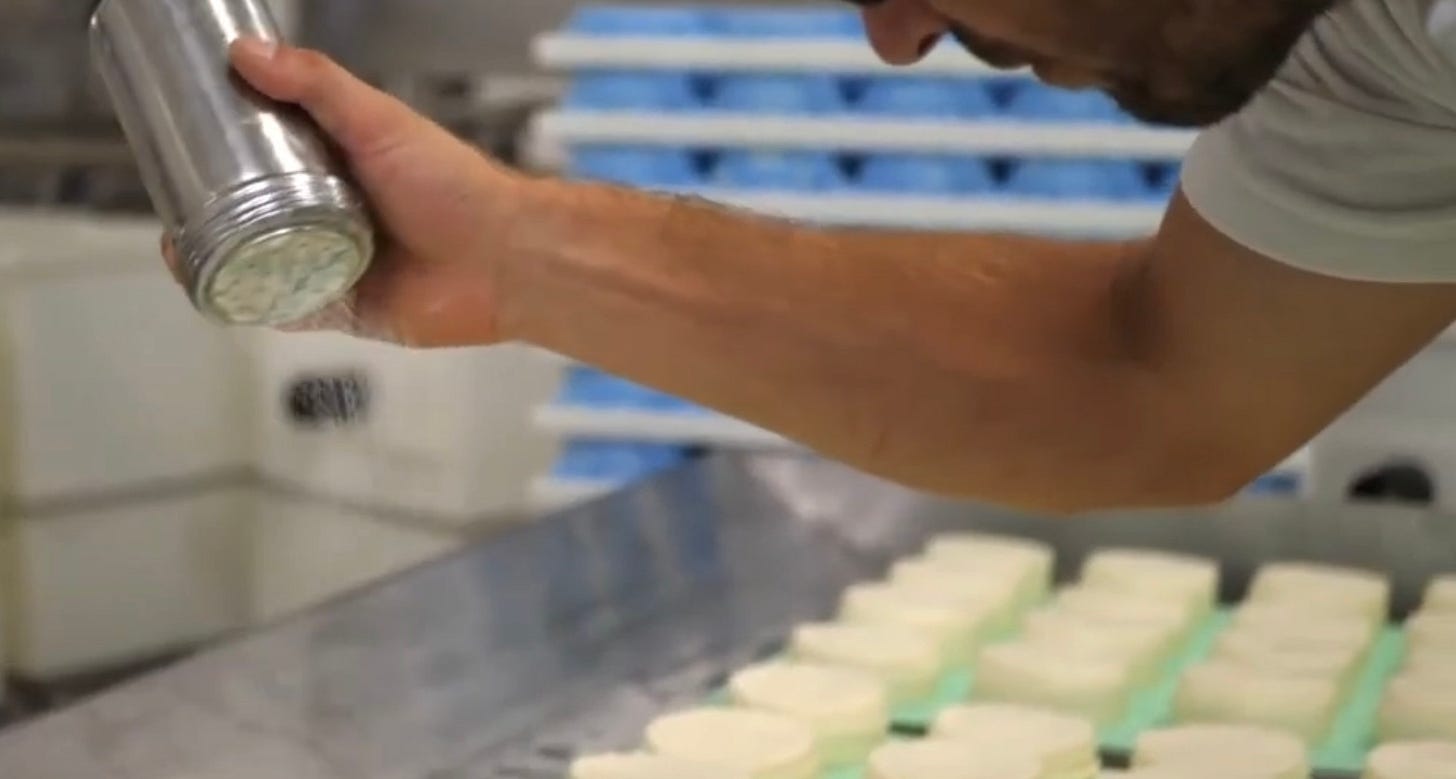
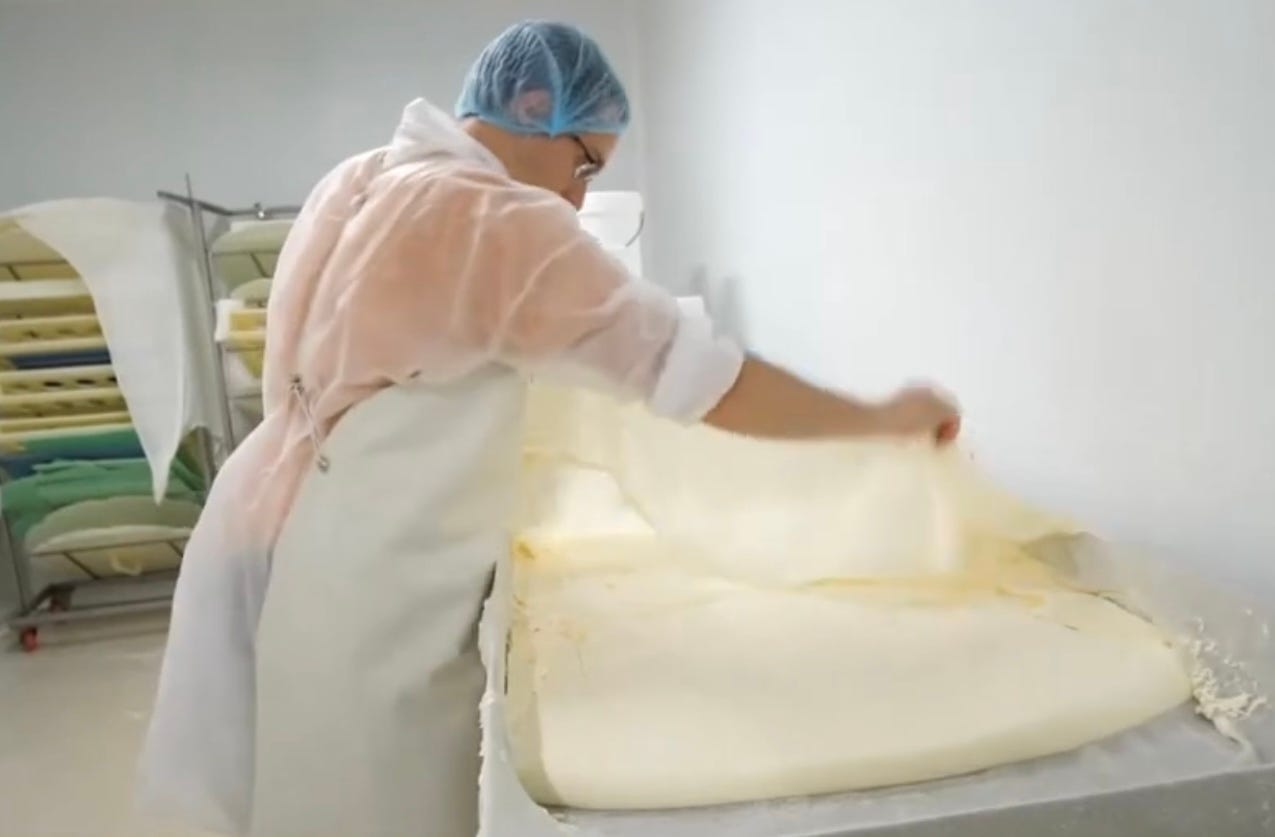
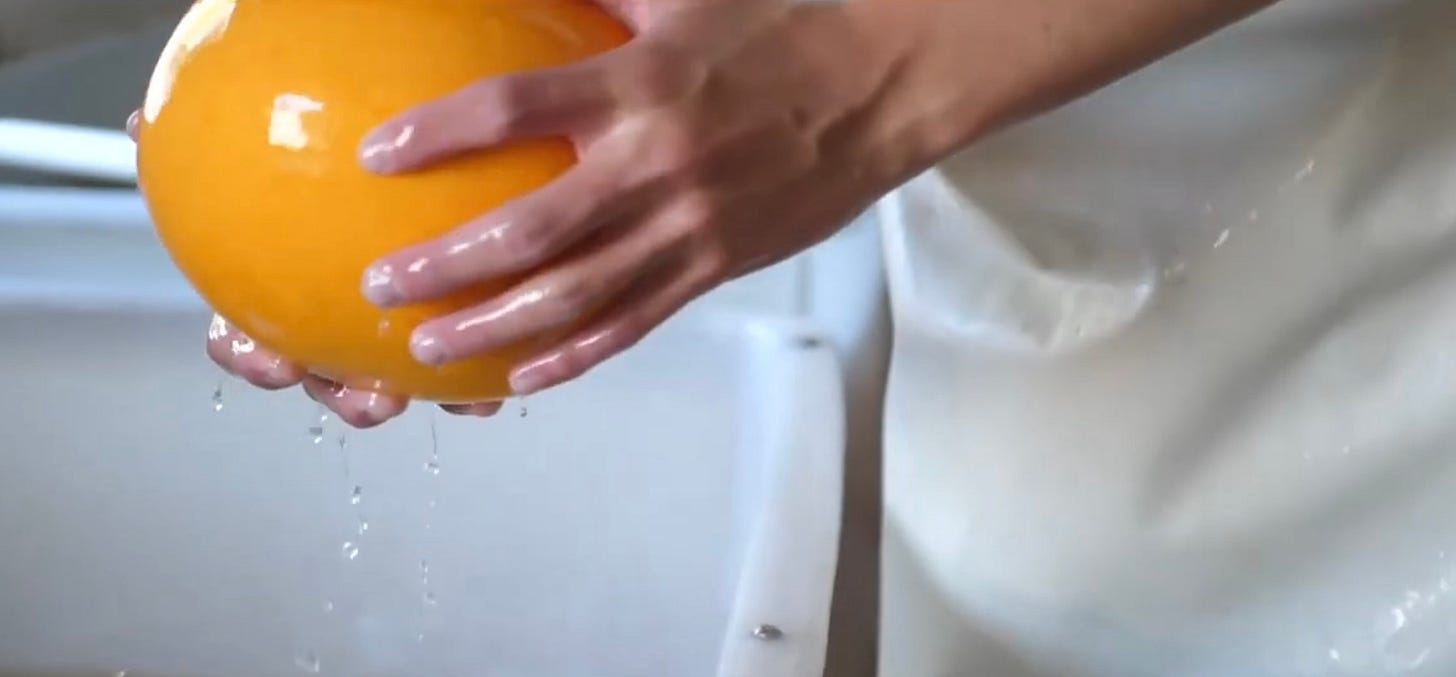
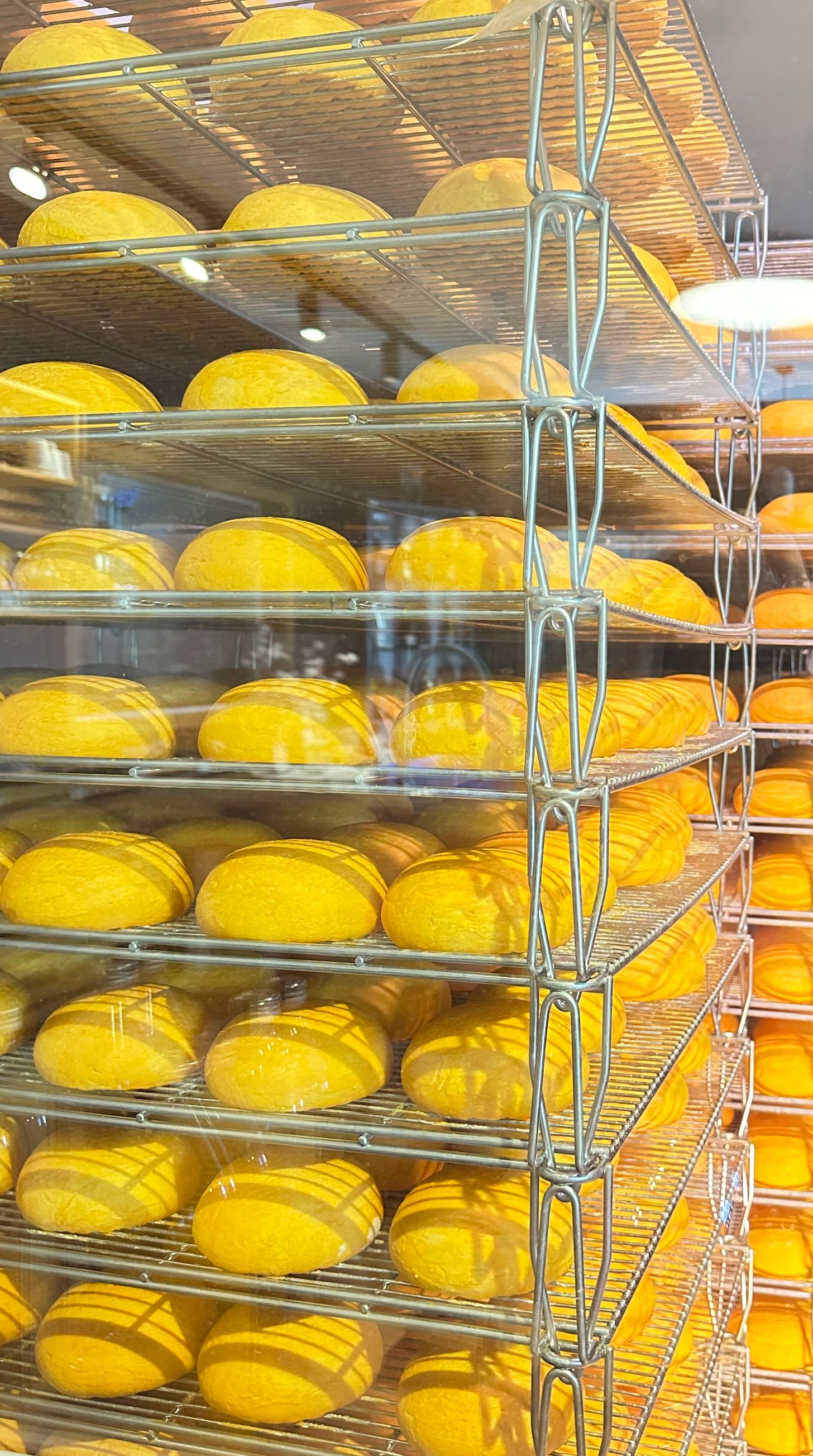
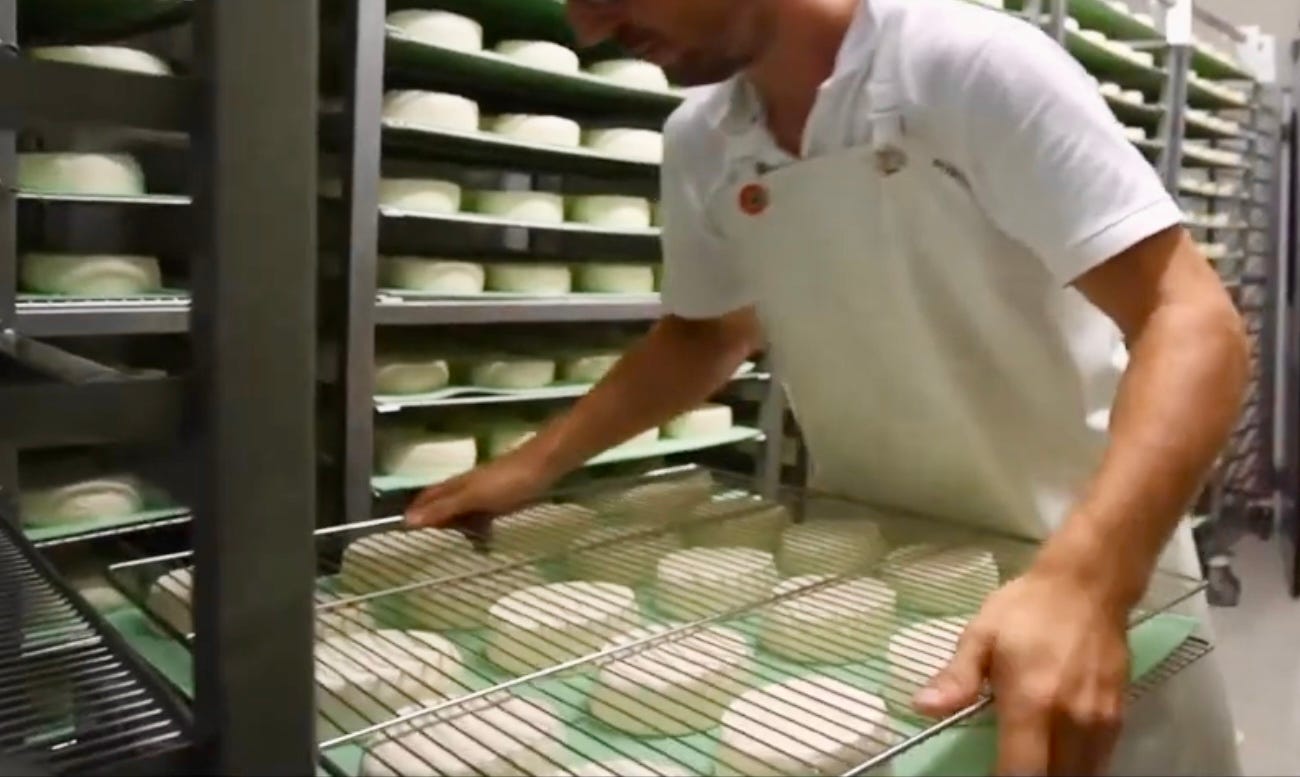
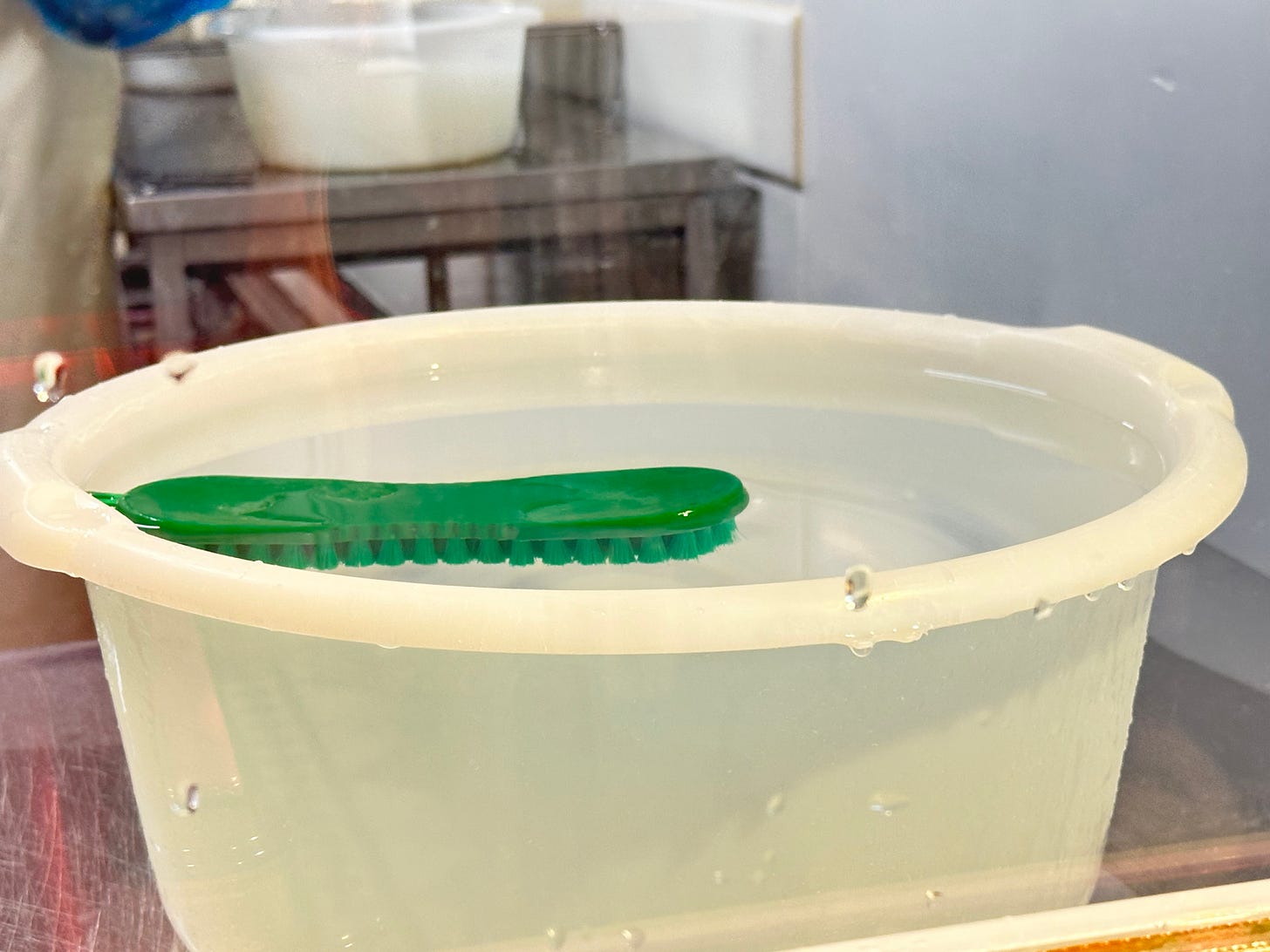
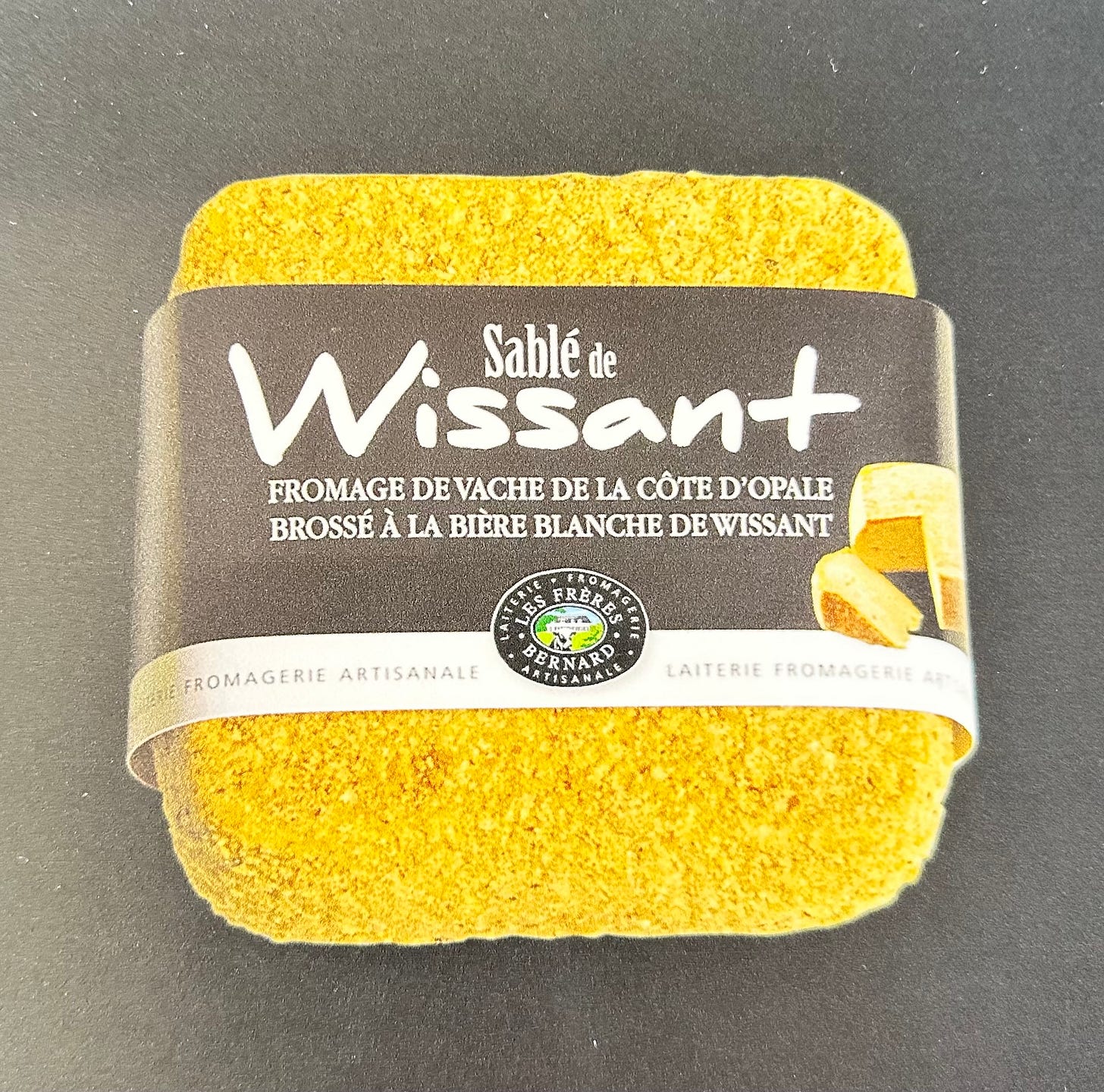
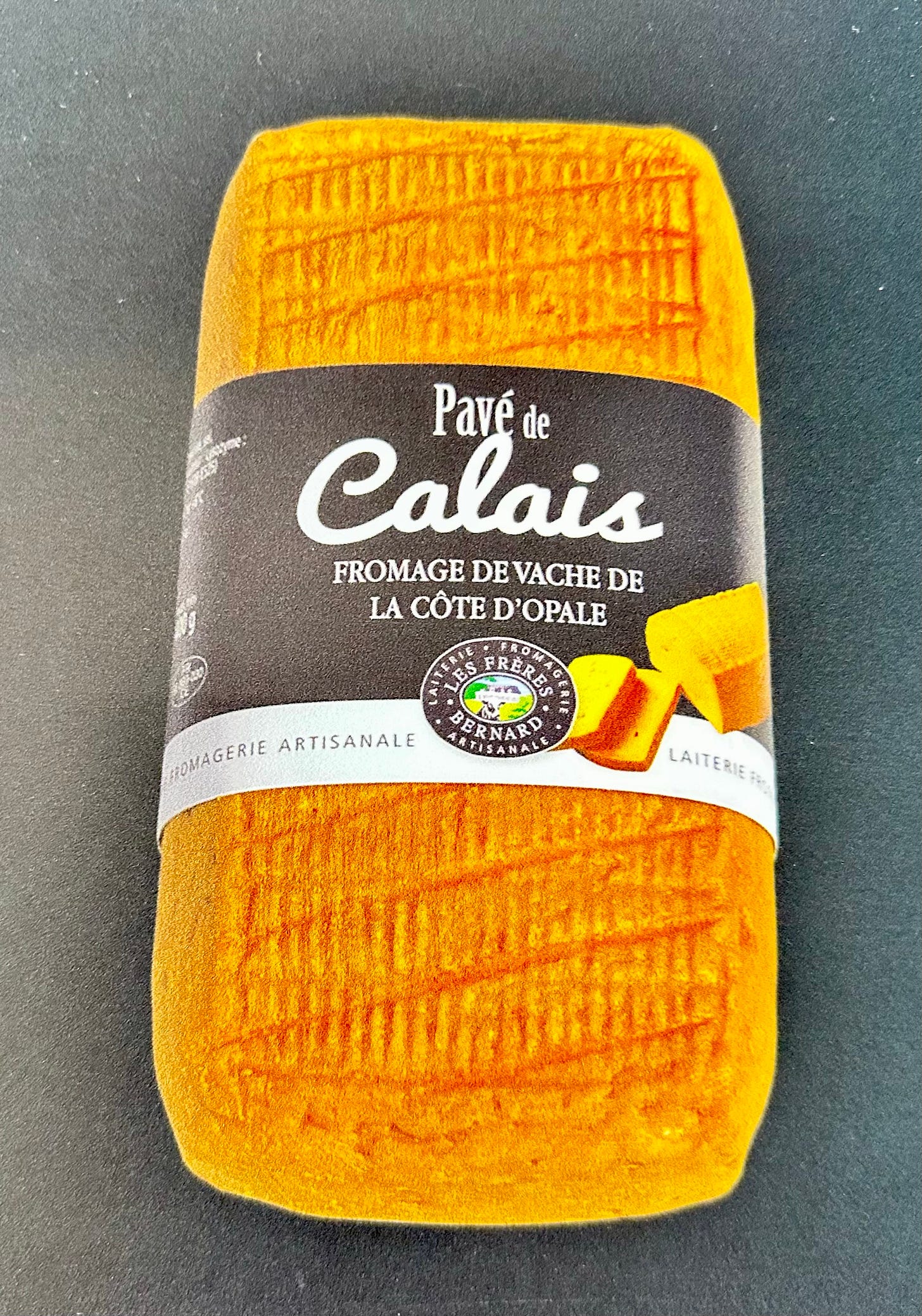
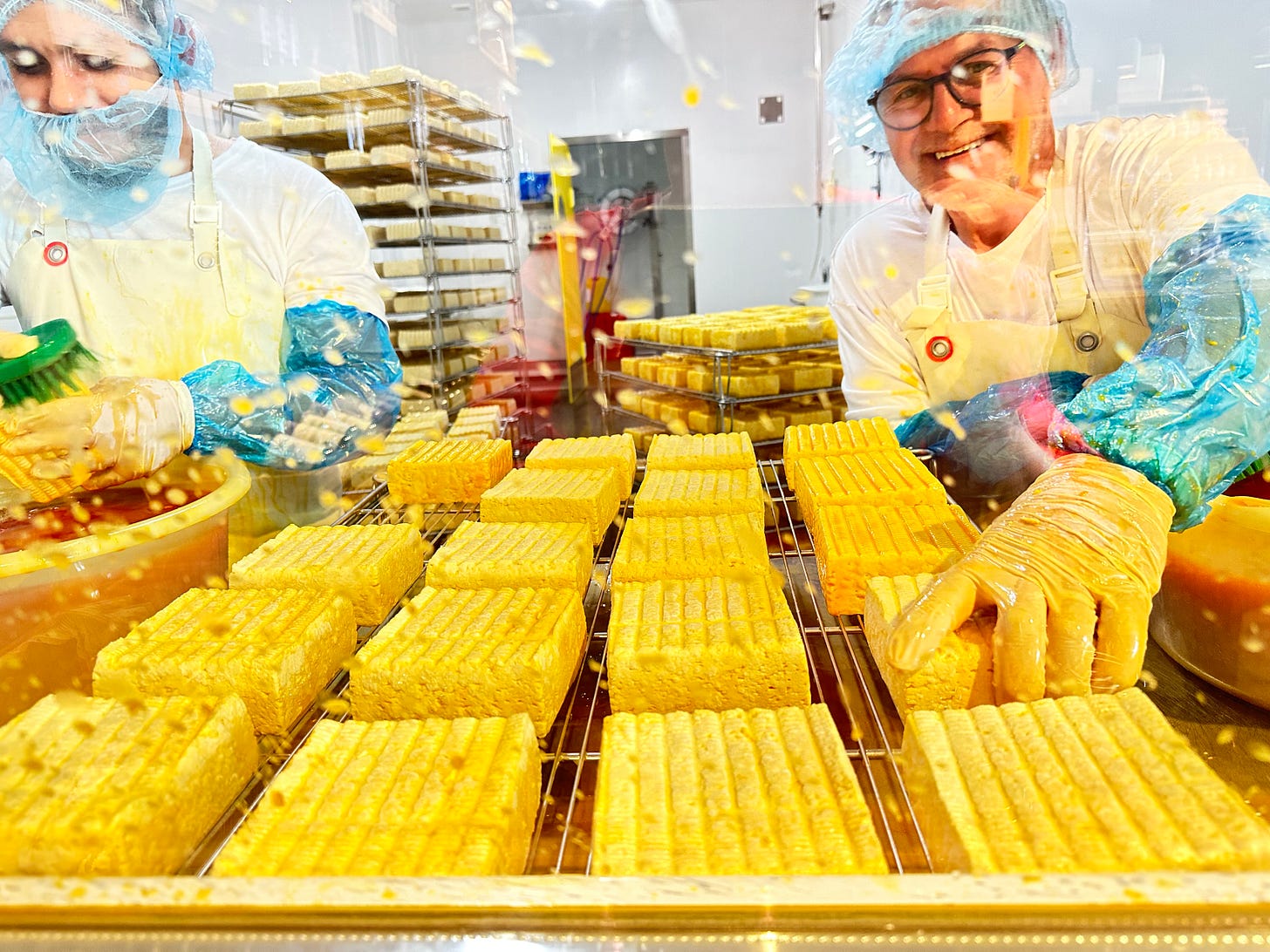
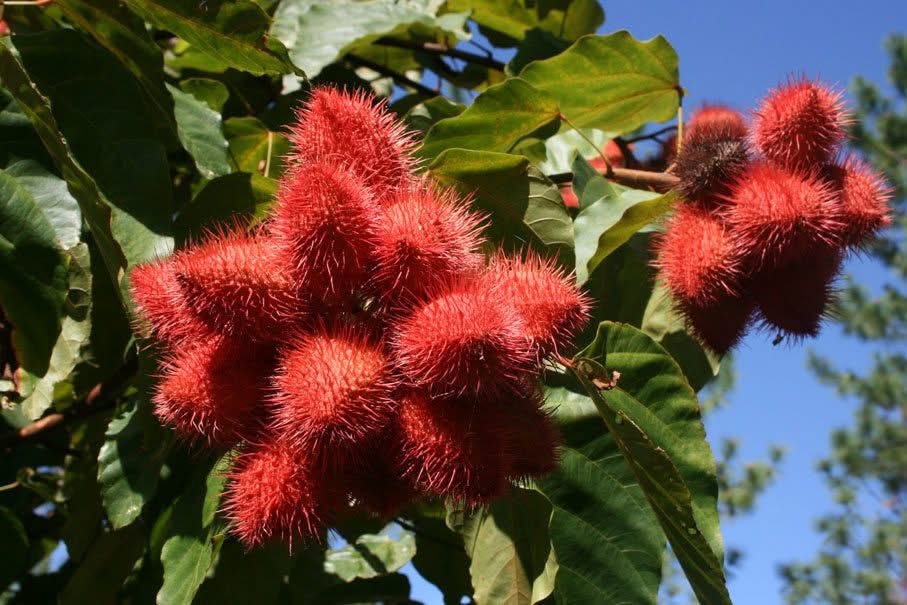
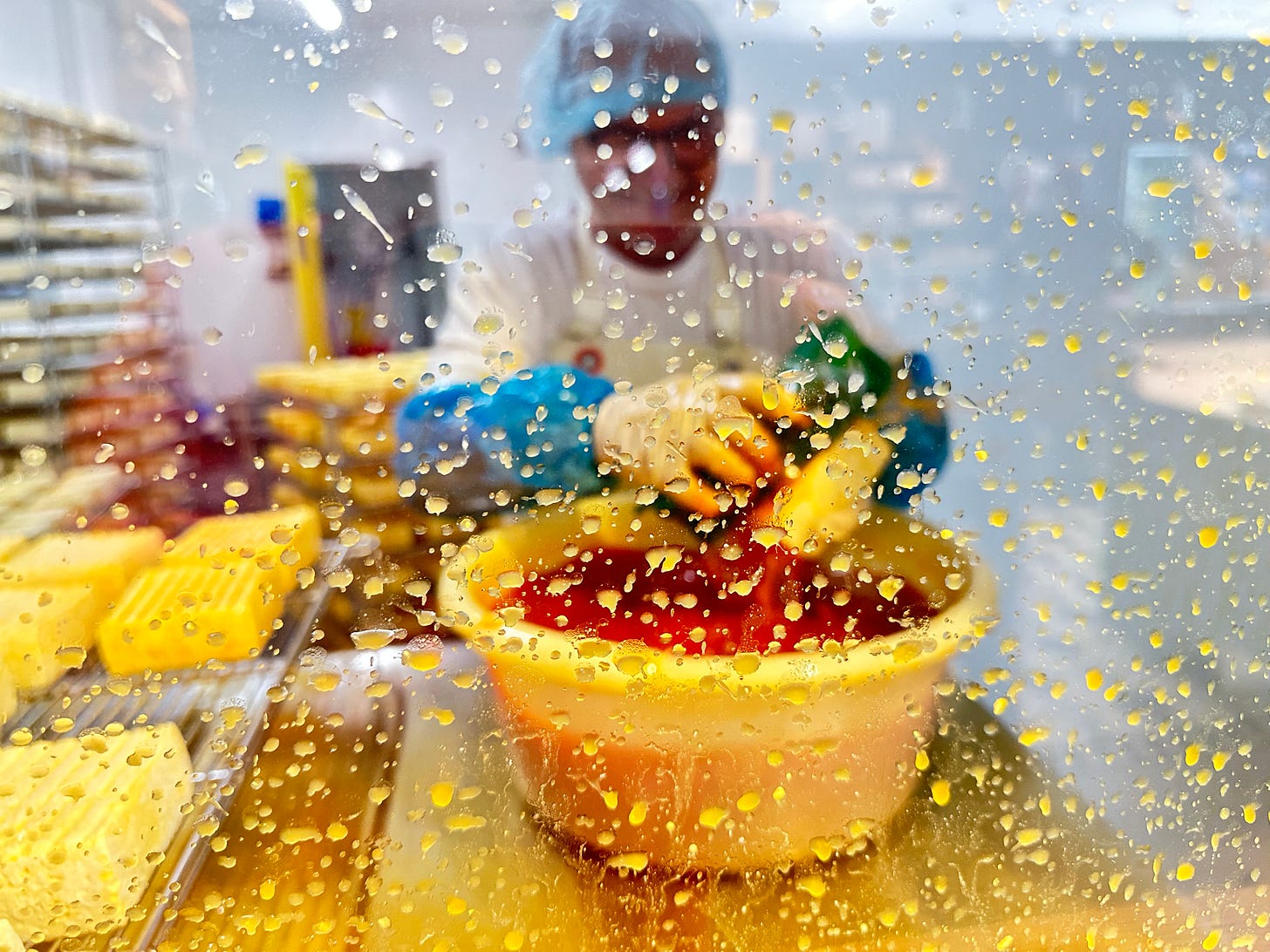


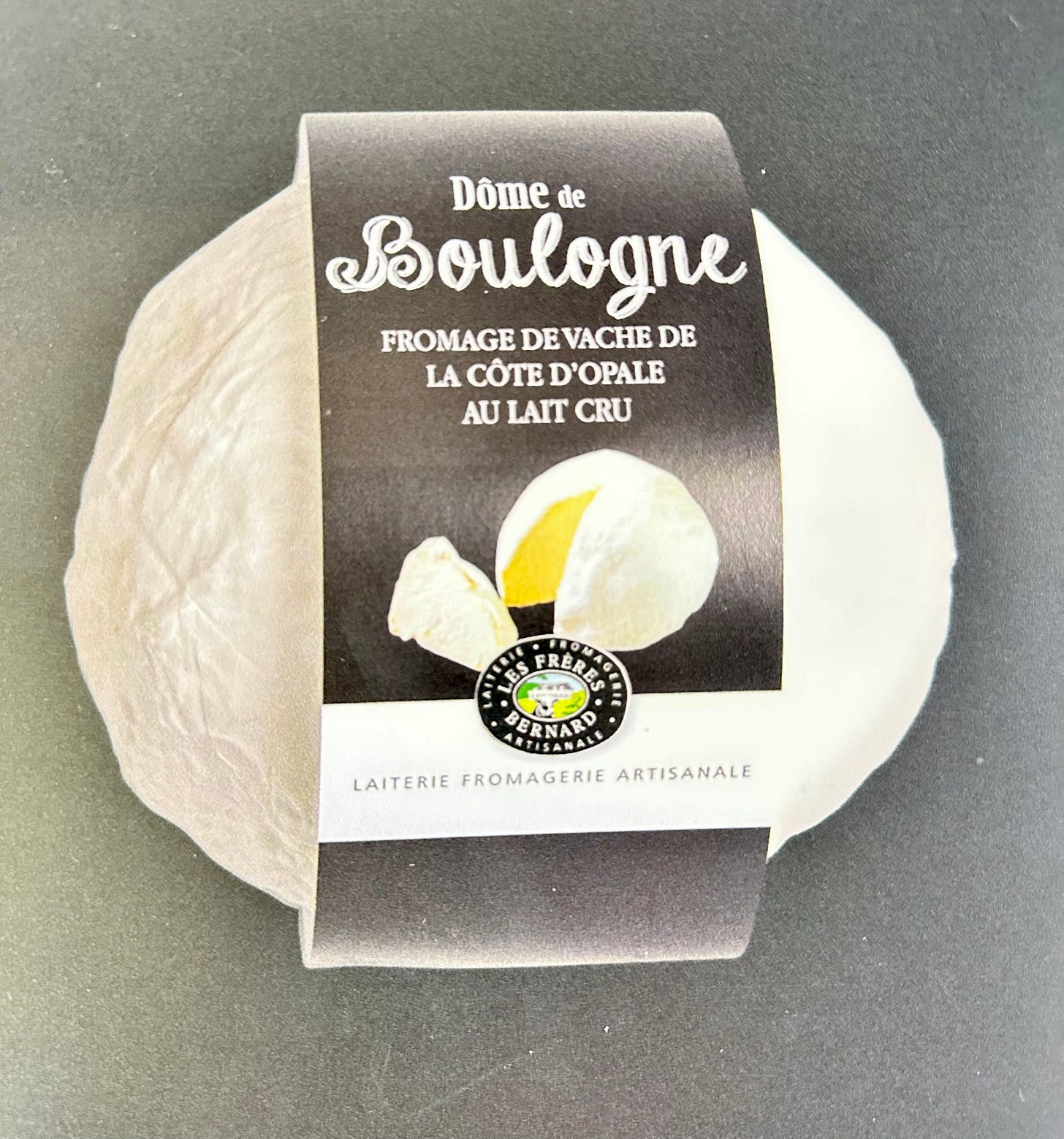
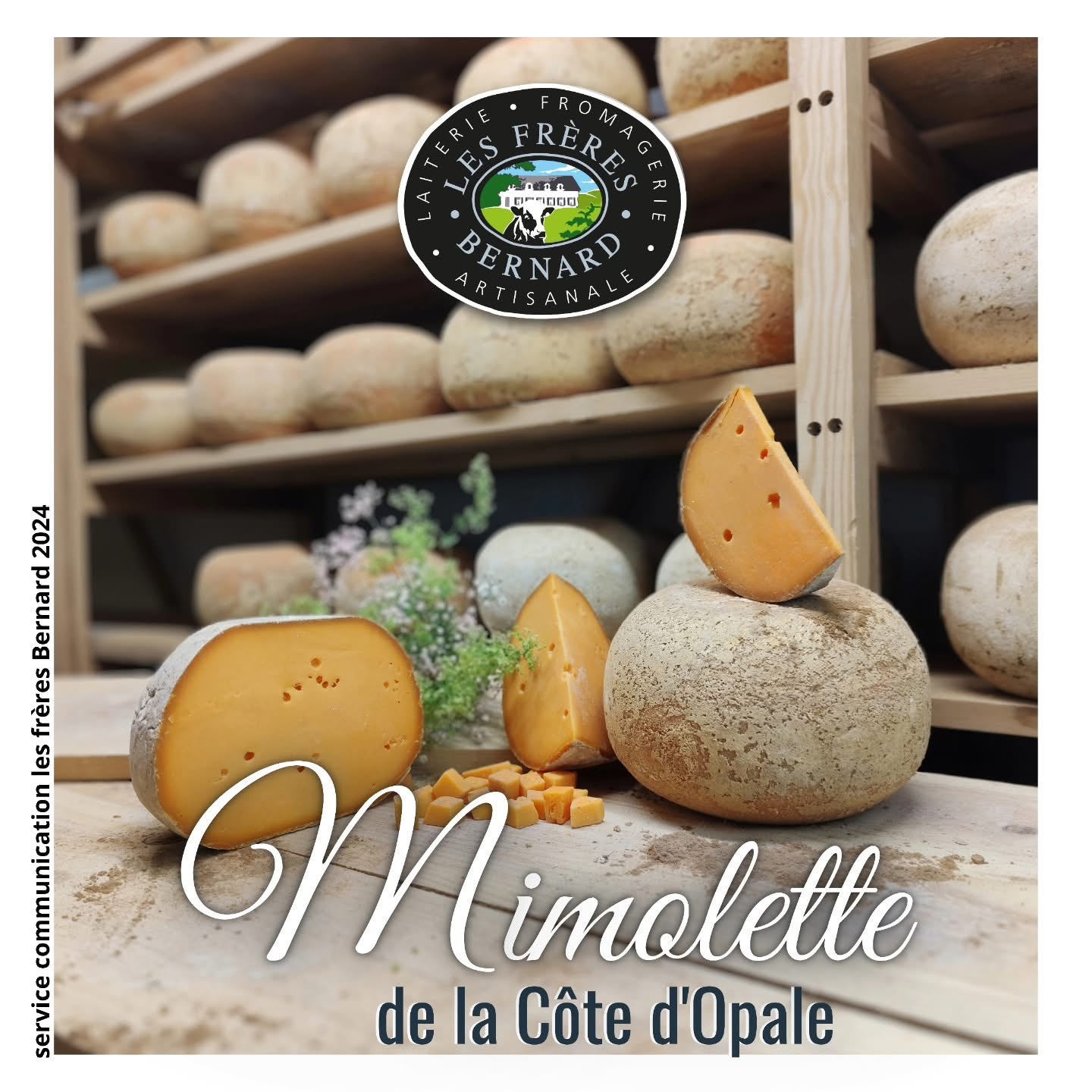
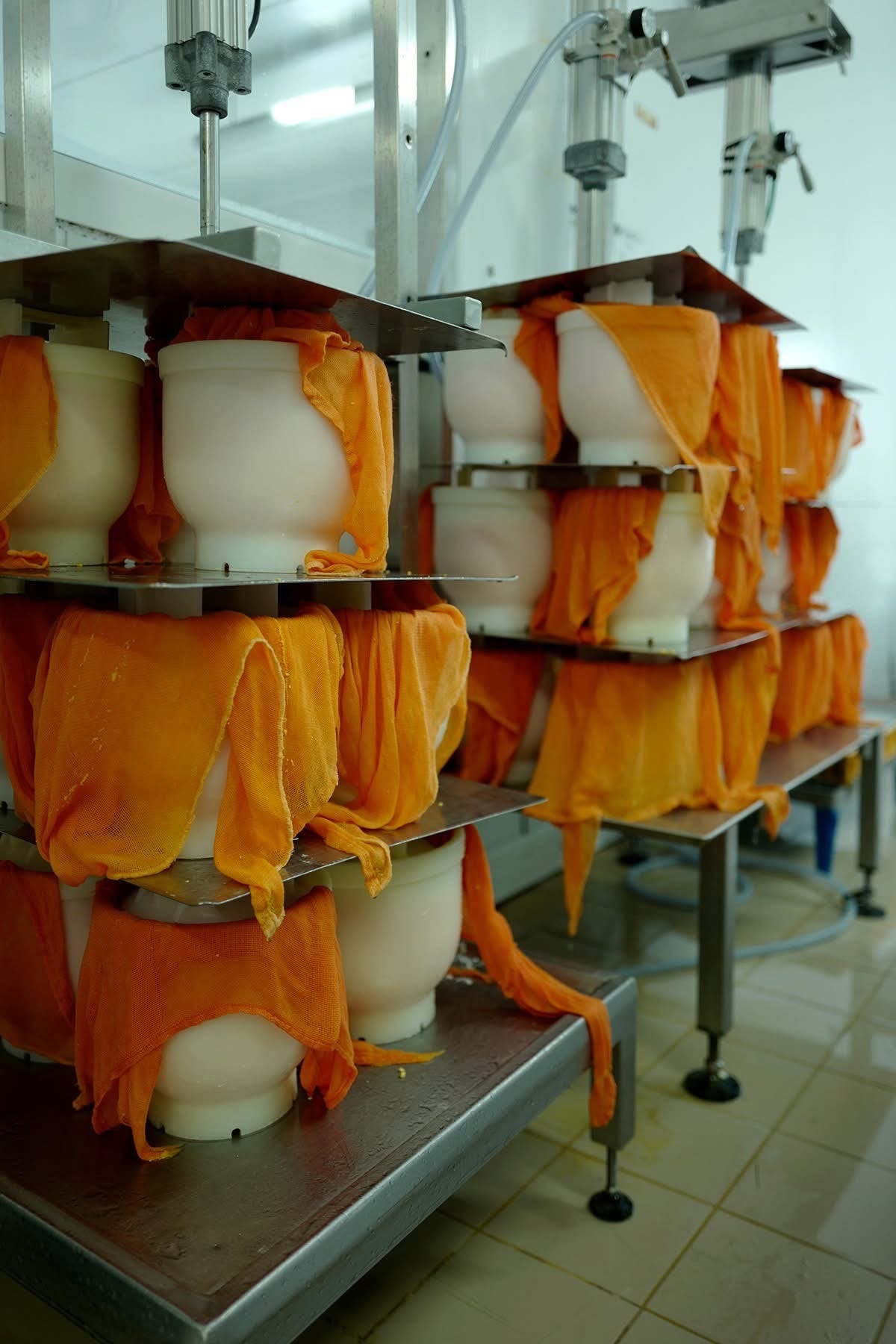
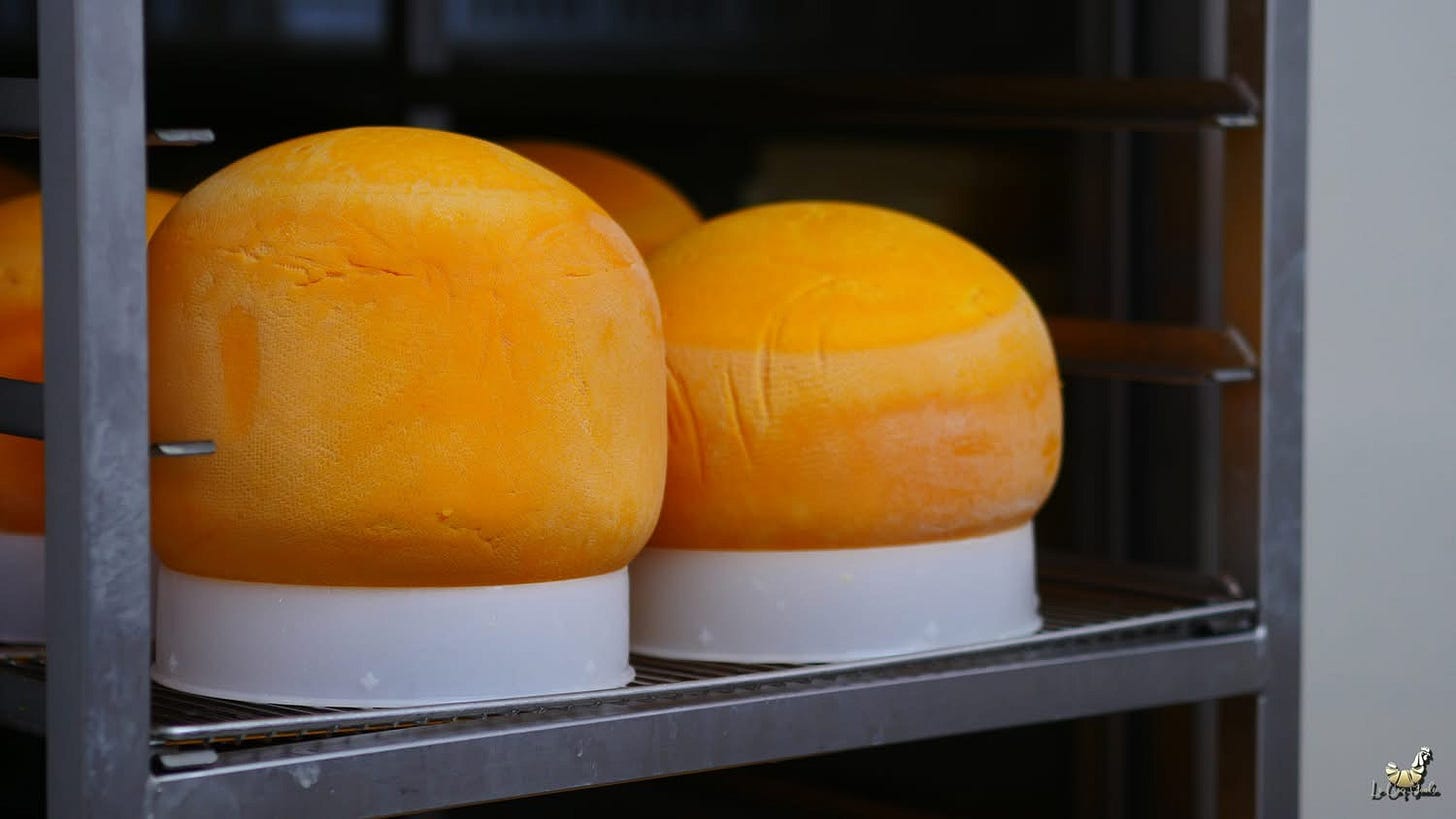
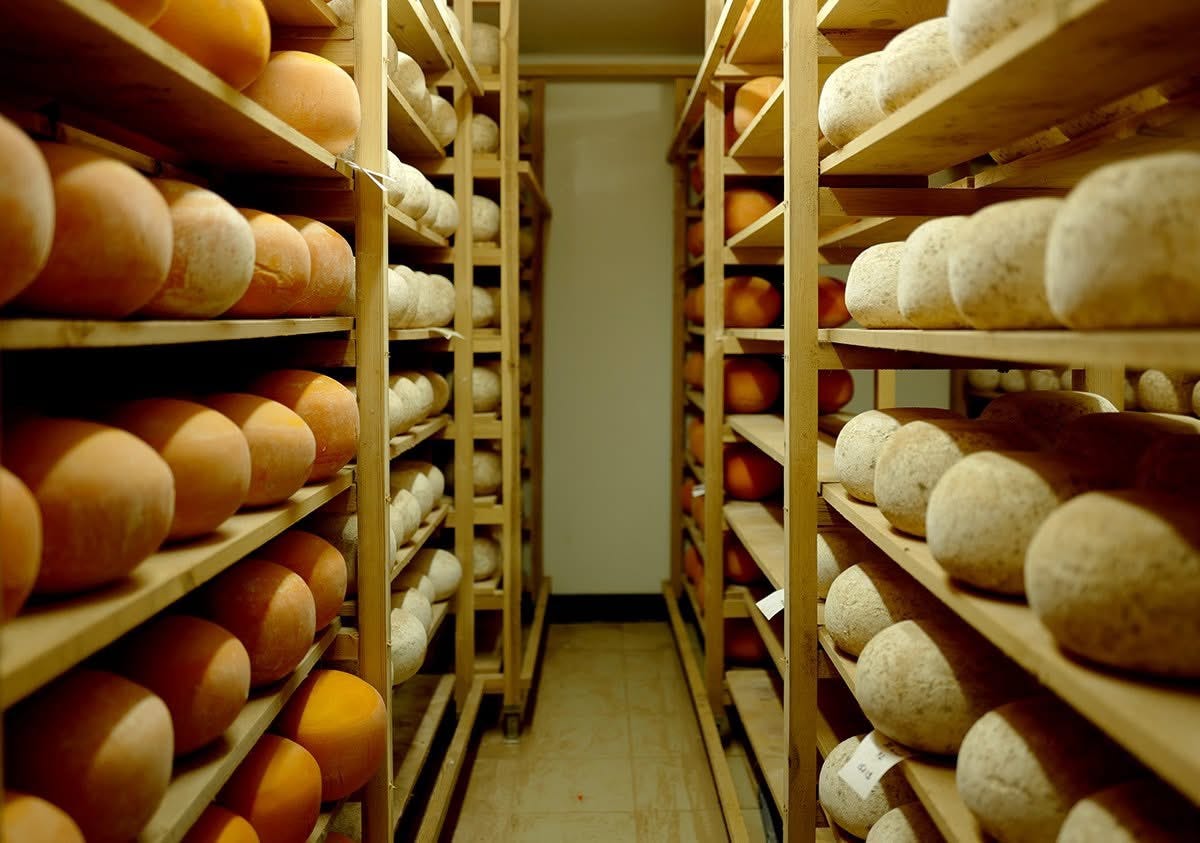
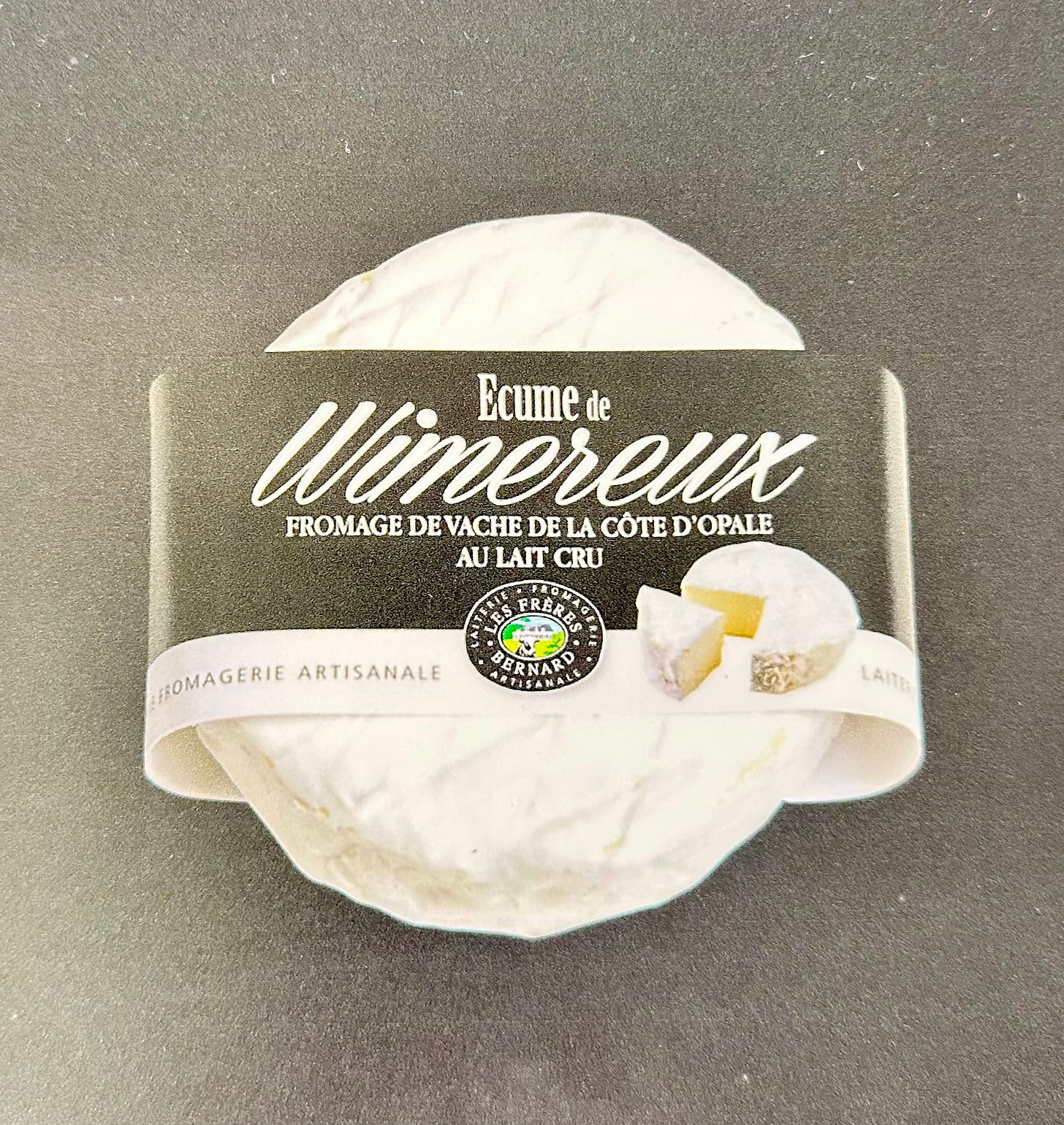
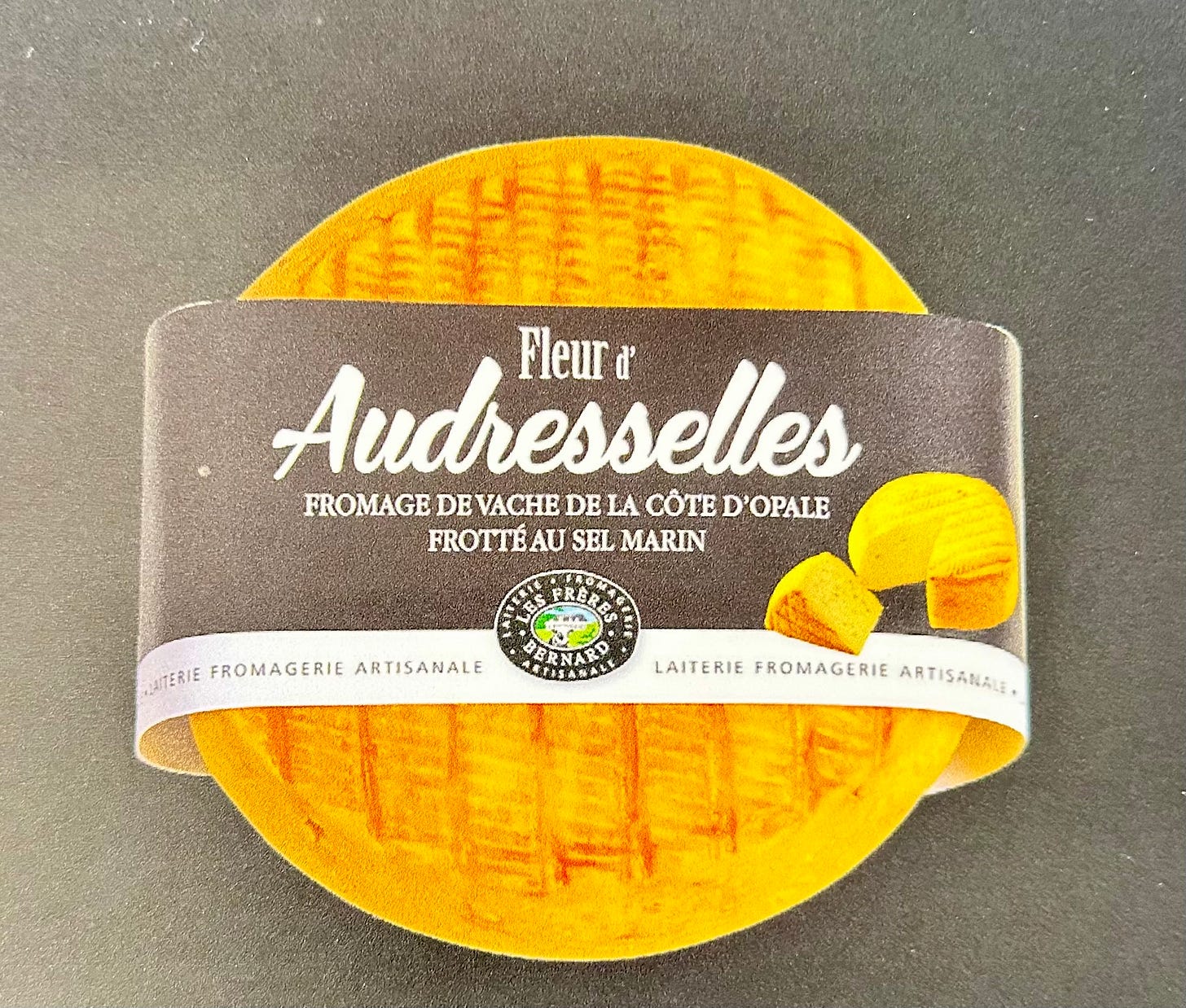
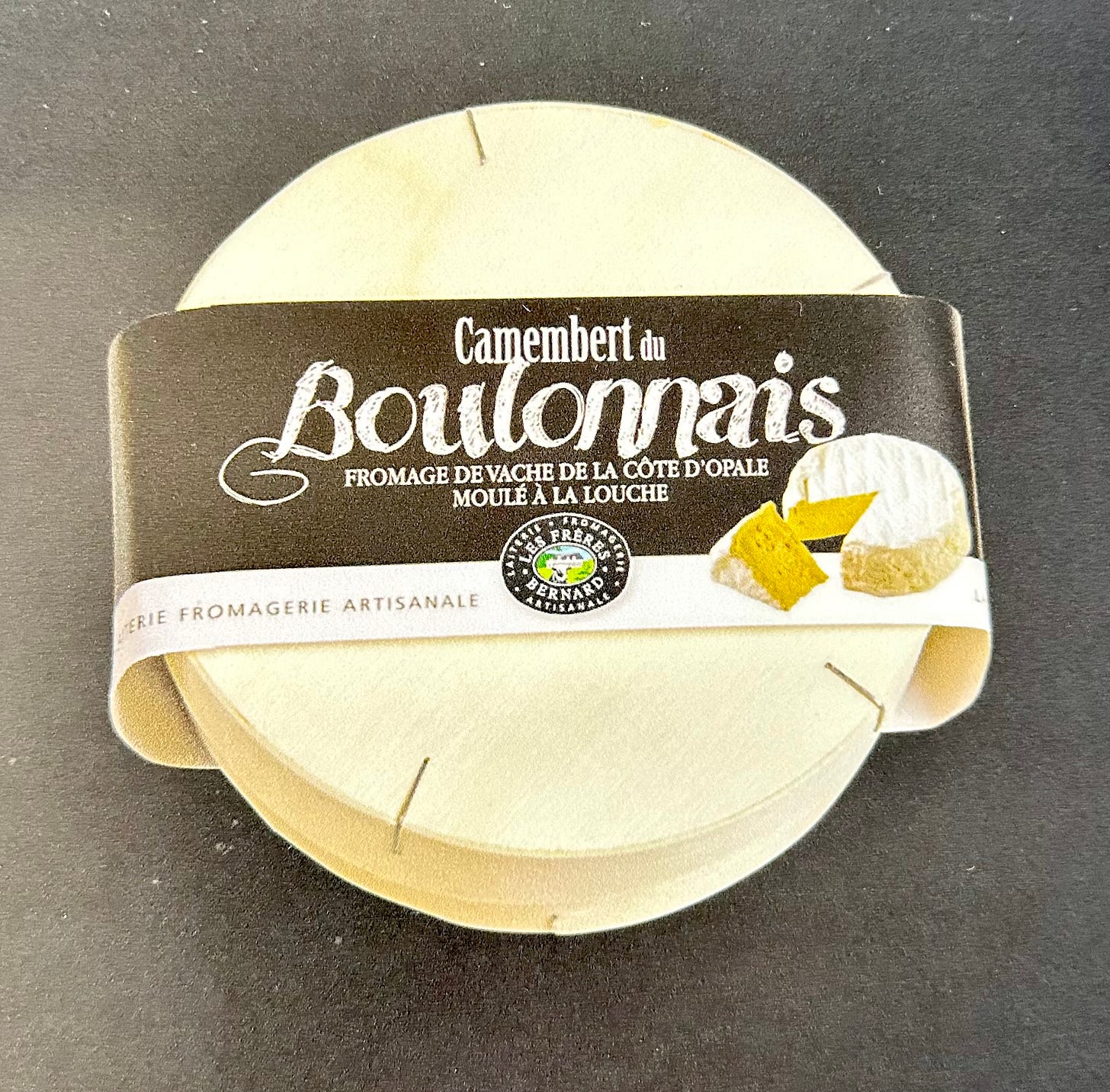
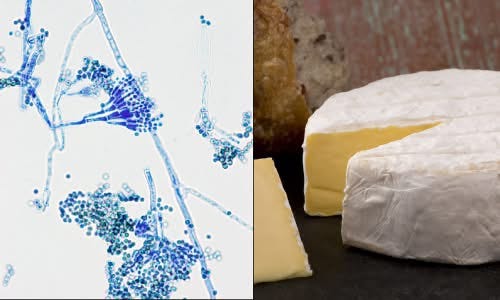
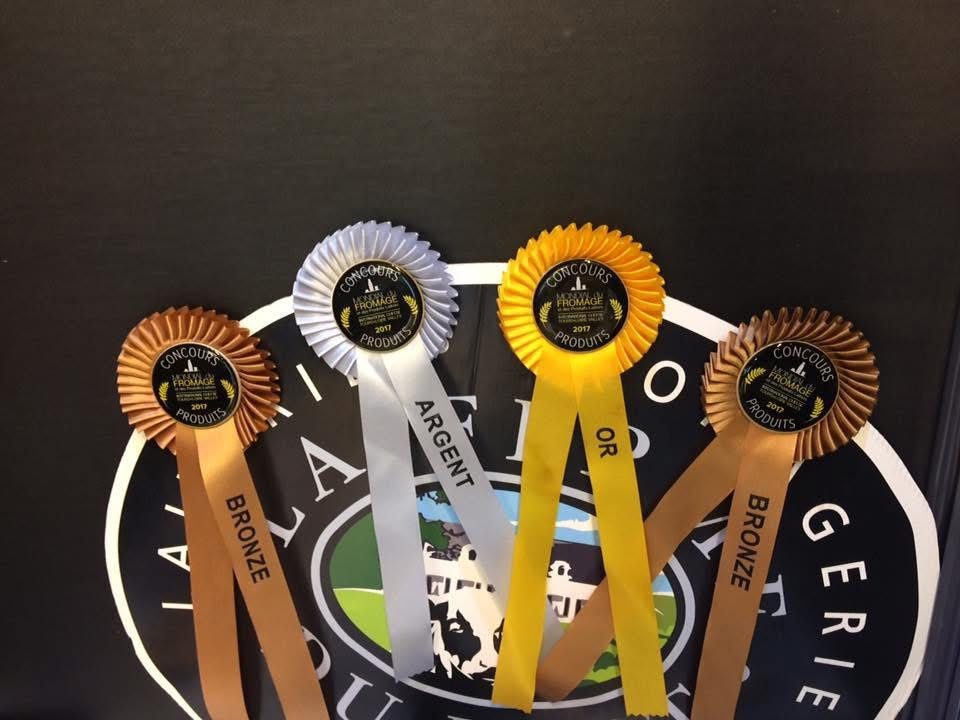
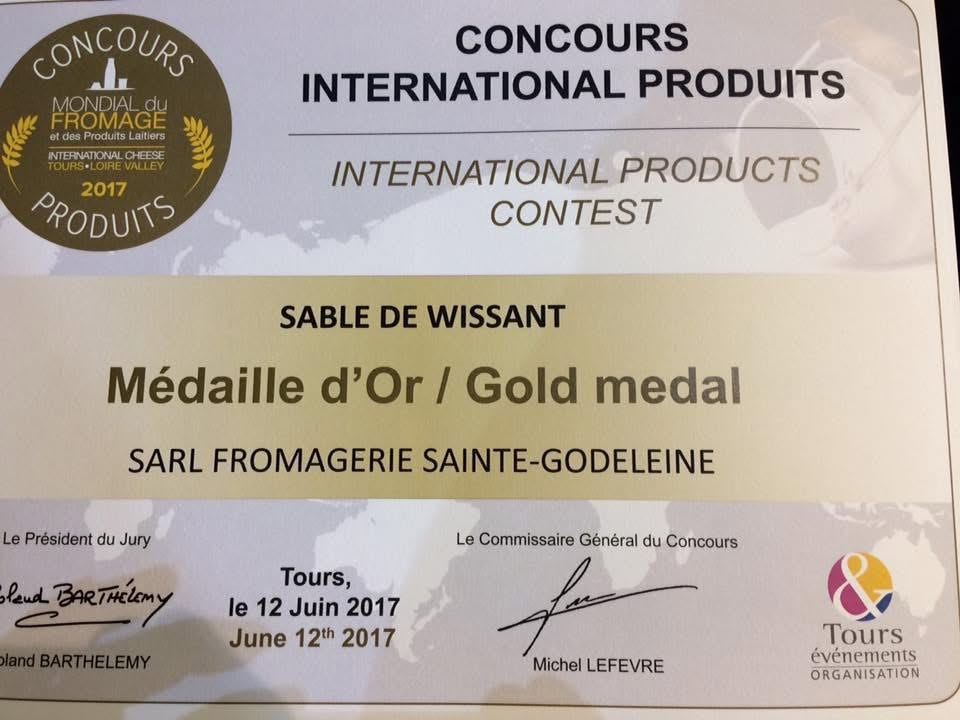
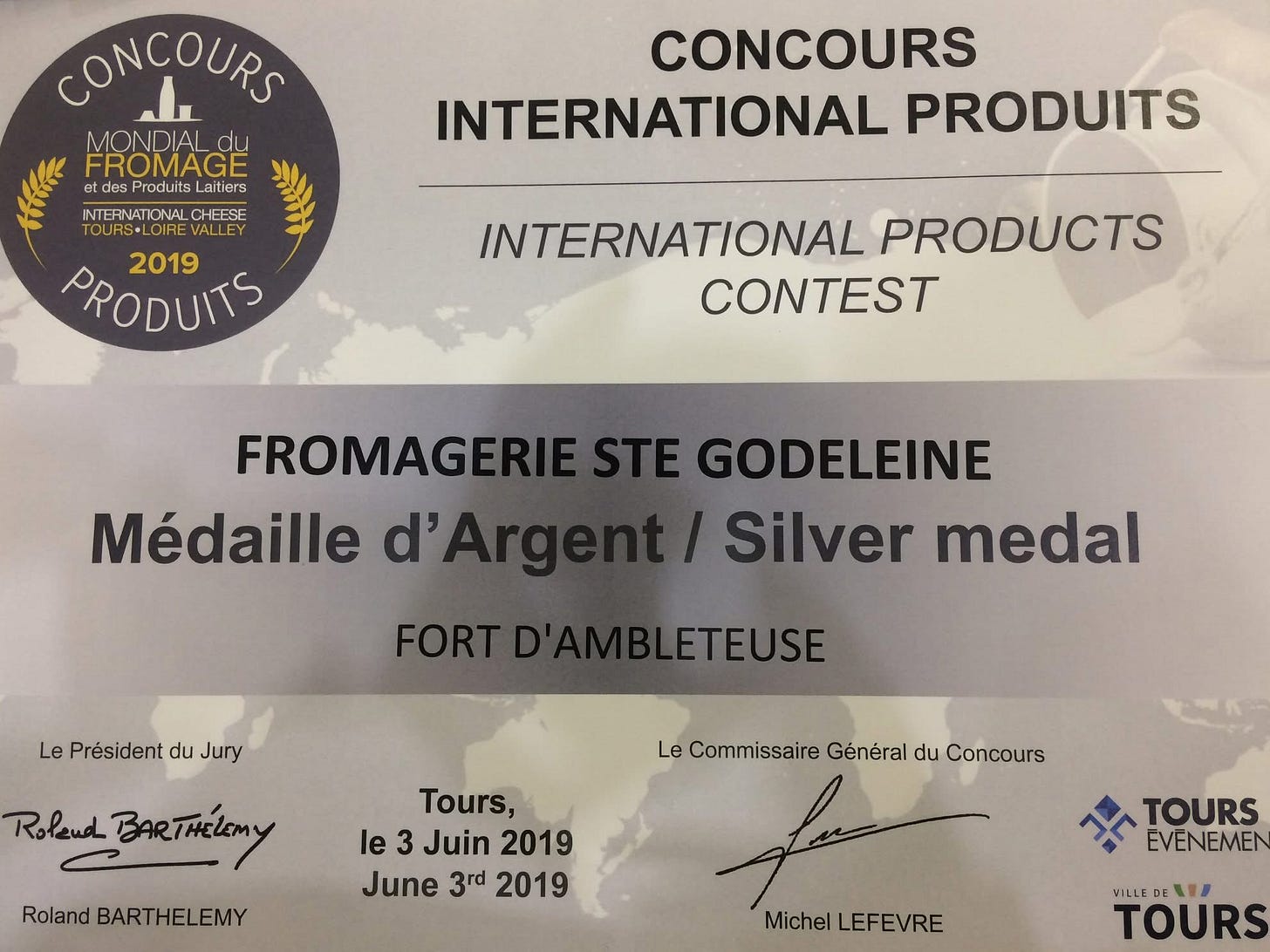
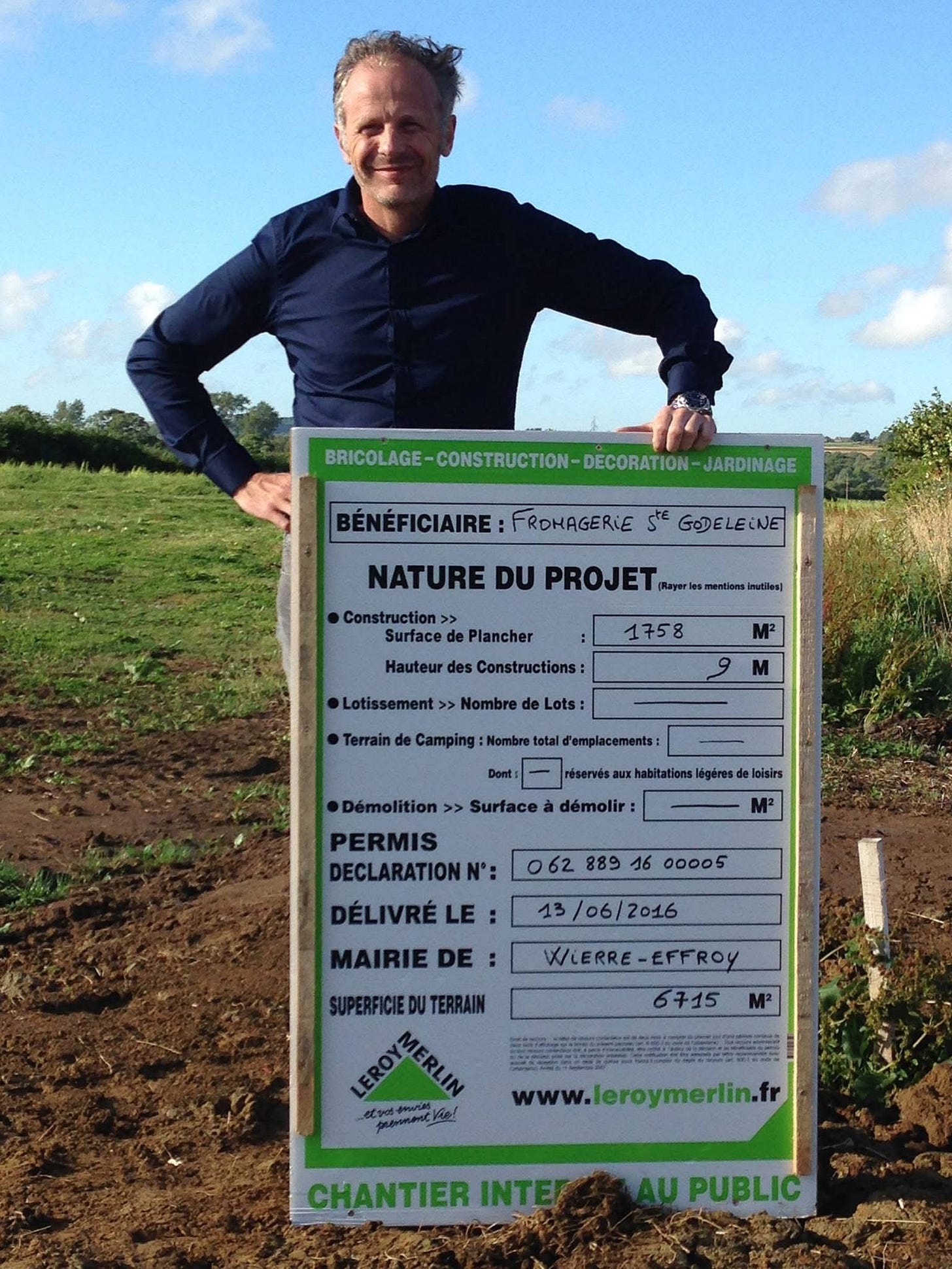

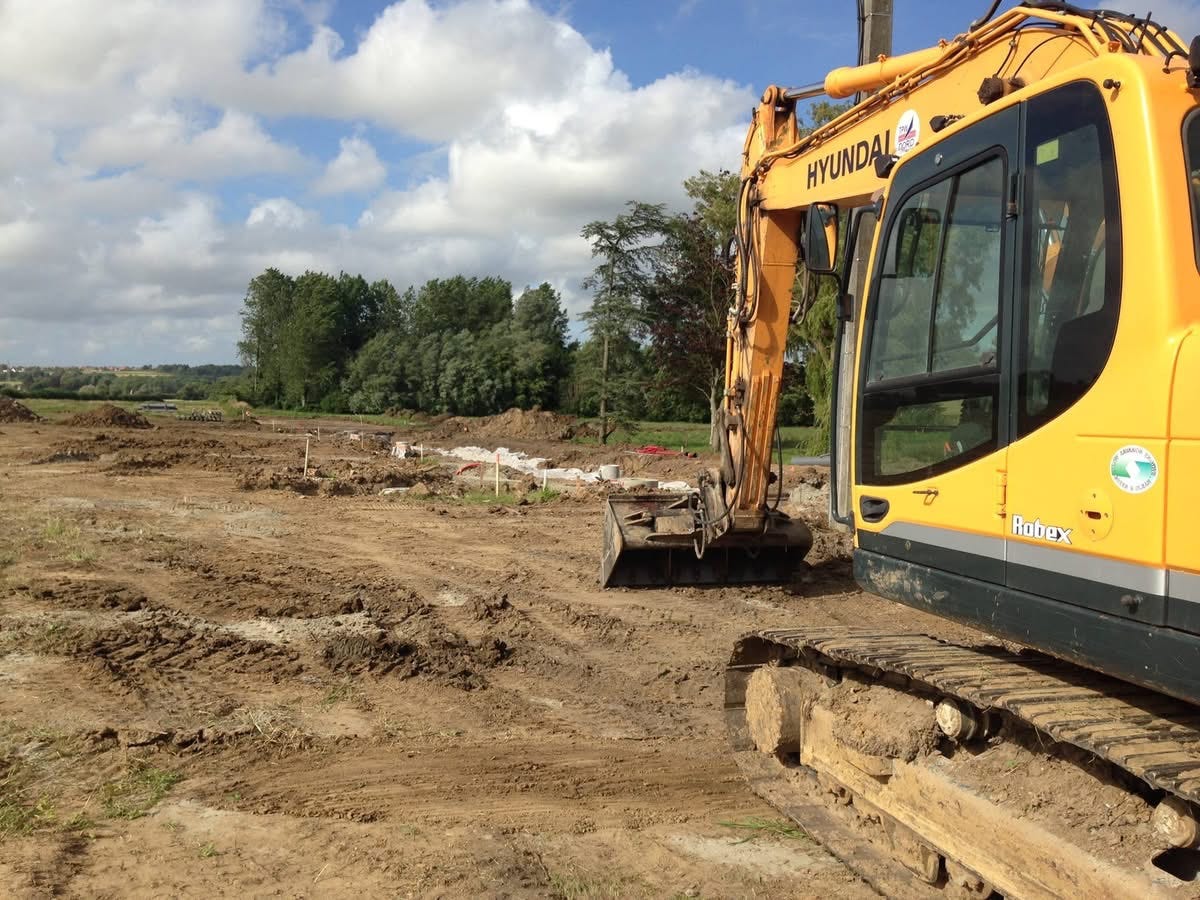

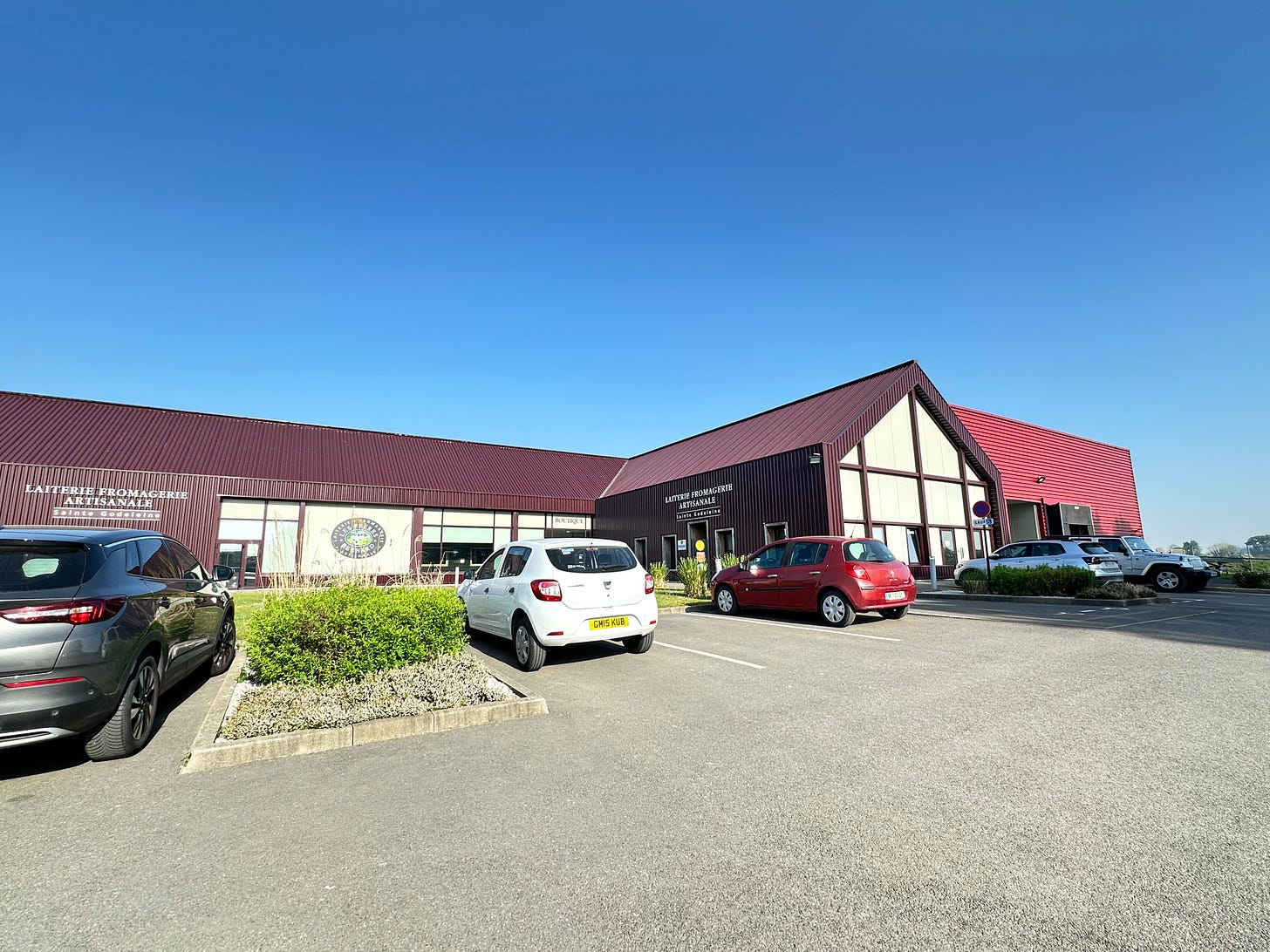
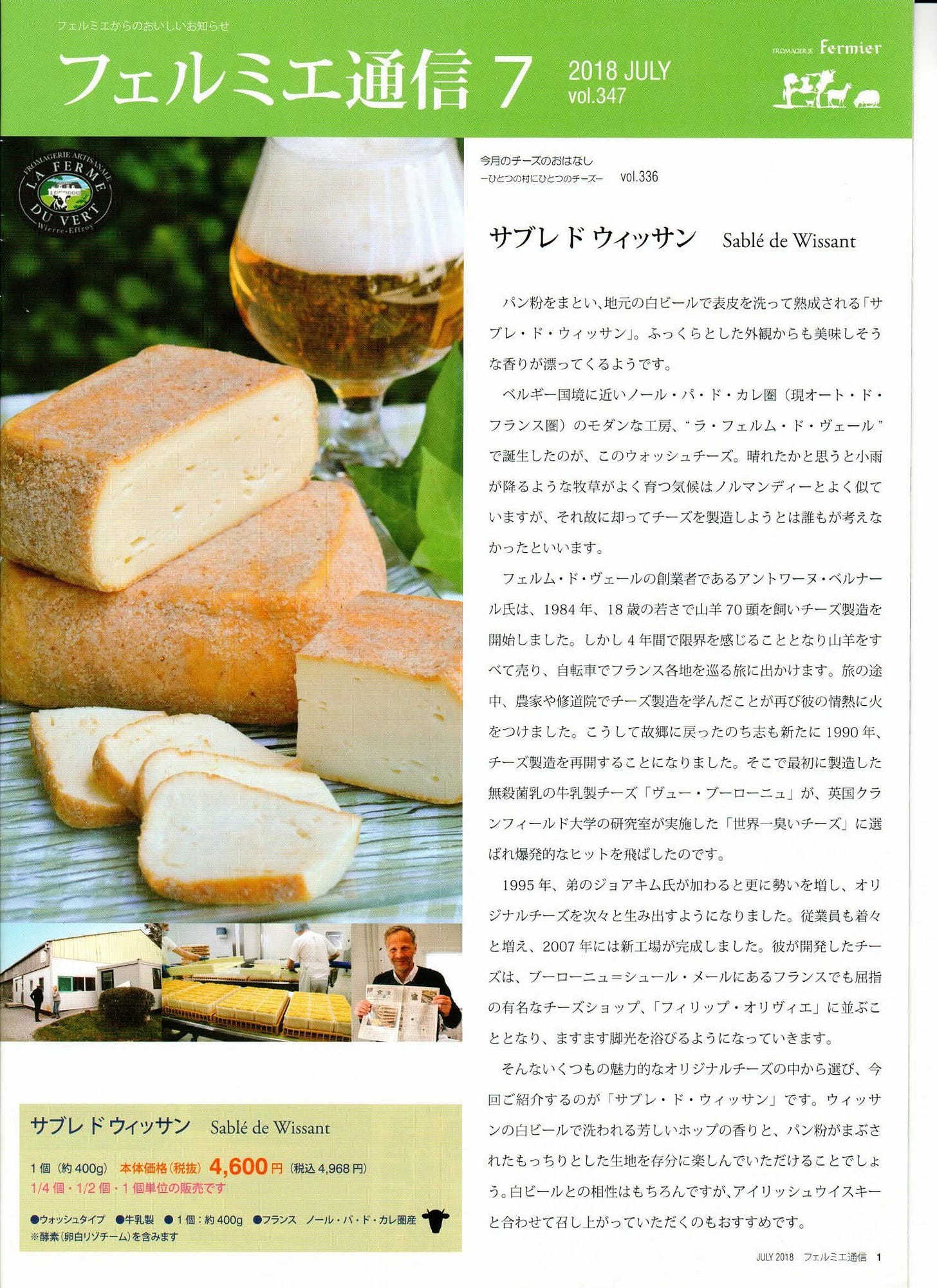
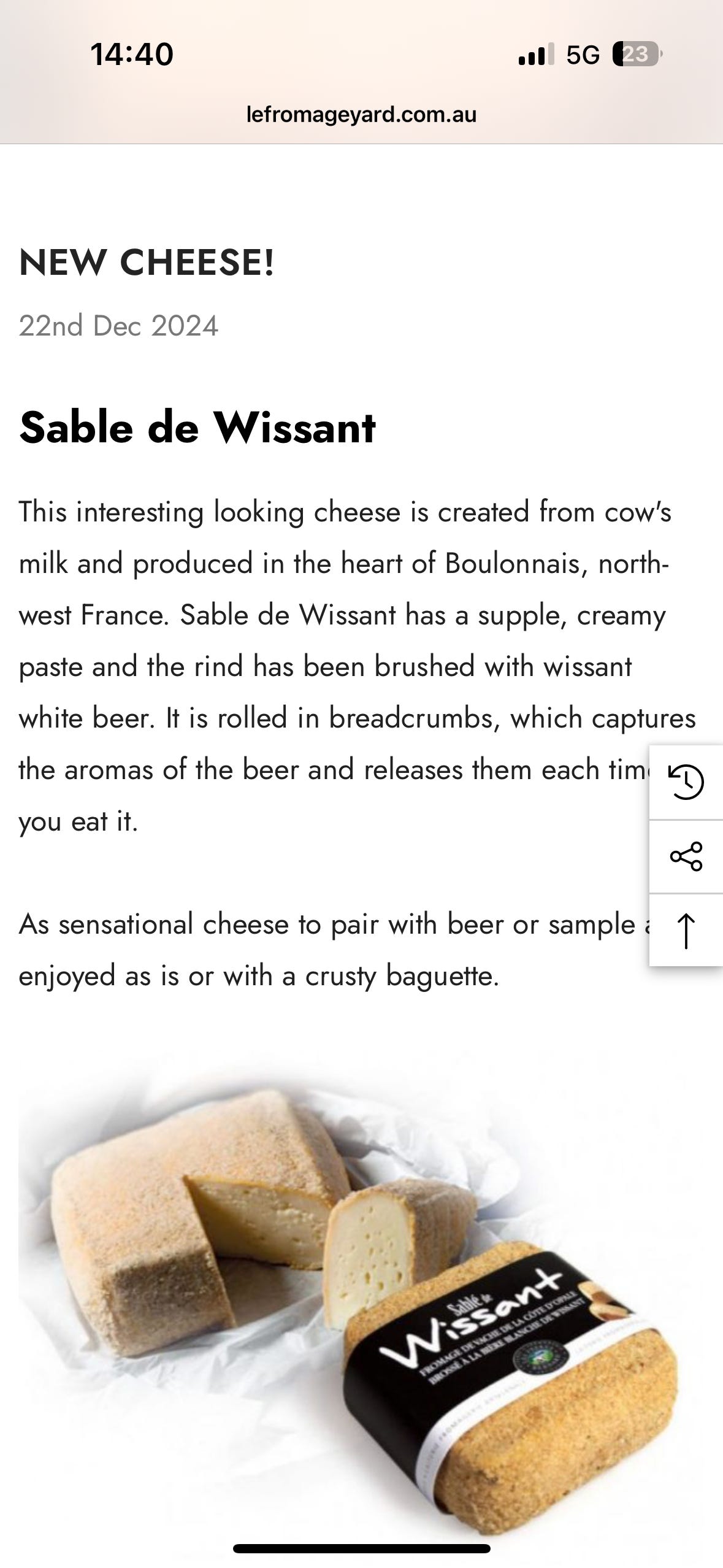

What a mouth-watering post, Caroline. And with your usual thorough research and gorgeous photos. Makes me want to set off for France immediately, but sadly I don’t live that close to the Channel,ports.
I really loved this article, Caroline. The profile of the family business was so well done and impeccably researched. None of those cheeses look familiar at all, I guess they don't make their way down here. I also enjoyed going through the steps of cheese-making; I know something about it but certainly couldn't pass any tests!